
THE UNDERWATER PHOTOGRAPHY & FILM COMPETITION 2024 RESULTS ARE IN DIGITAL ONLINE DIVERS FOR THE ENVIRONMENT WWW.EMIRATESDIVING.COM | MAGAZINE | JUNE 2024 | VOLUME 20 | ISSUE 2 Inspiring People to Care for our Oceans Since 1995 • REEF CHECK NEWS • AN EDA YOUTH PROGRAMME • GOPRO HERO12 REVIEW • CLEAN-UPS IN FULL FORCE • BRINGING BONES BACK TO LIFE • VANISHING VAQUITAS • DIVING DESTINATIONS

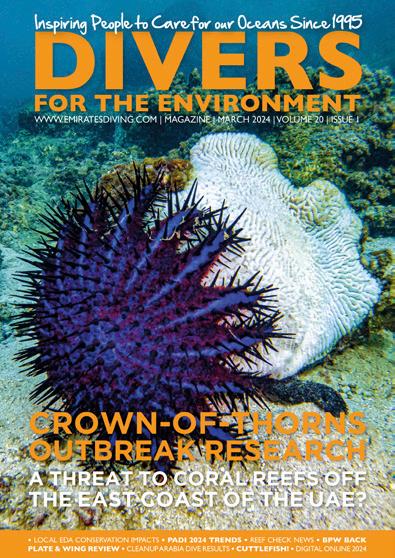


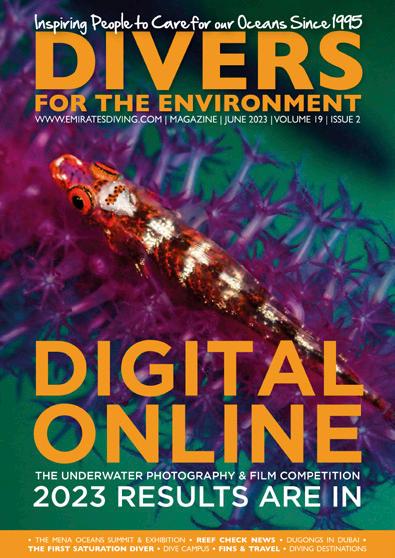



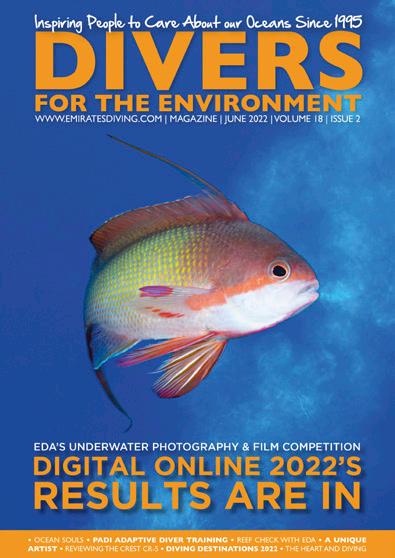
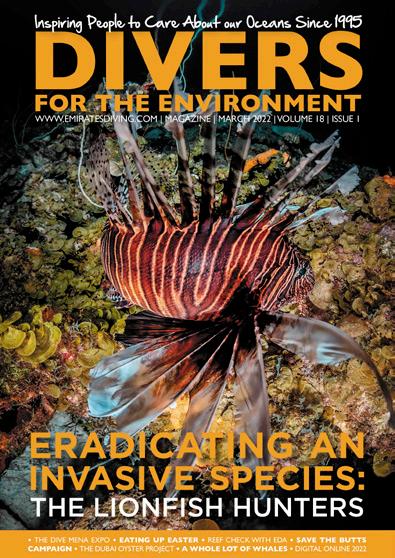









FOR THE OCEANS OCEAN STORIES | CONSERVATION | DIVE TRAVEL Tel: +971 4 393 9390 | Email: projects@emiratesdiving.com | Website: www.emiratesdiving.com EDA is a non-profit NGO accredited by UNEP as an International Environmental Organisation. CLICK HERE EXPLORE ALL OUR BACK ISSUES Beautiful photography and captivating stories, by divers for divers!

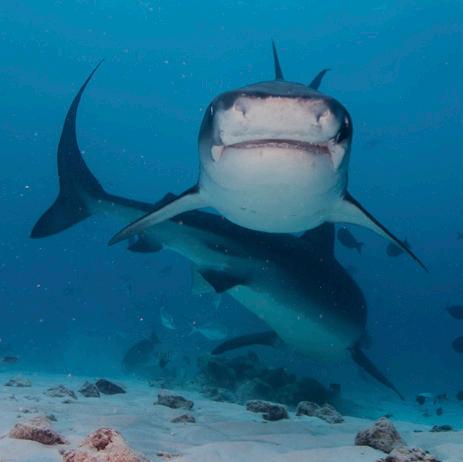
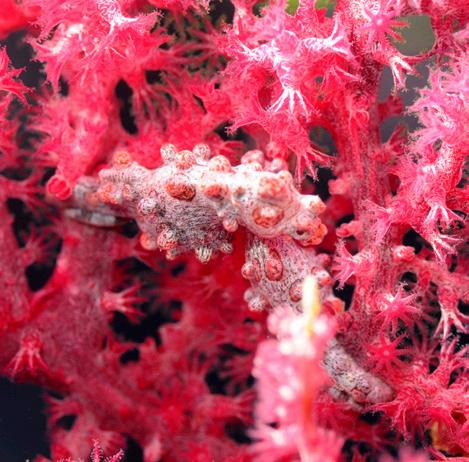
REEF CHECK
KIDS CORNER


3 JUNE 2024 | DIVERS FOR THE ENVIRONMENT
20 Chloe Blue Diving Club
Al Mahara Diving Center Join Forces for
Reef Check Adventure 21 NOAA and ICRI Confirm Fourth Global Coral Bleaching Event 22 Not Just Coral: Reef Check Malaysia Broadens Scope 23 Empowering Mozambique’s Marine Conservationists: A Dive into the Reef Check Programme 24 Join Red Sea Diving Safari in July For an EcoDiver Course and Surveys
and
a
26 An EDA Youth Programme: Beach Clean-up Activity 27 A Unique Message From the Bottom of the Sea! PRODUCT REVIEWS 28 Gopro The HERO12 Black FEATURES 32 BCG’s 2024 Beach Clean-up 36 Second Cleanup Arabia PCFC Marina – Umm Suquiem 1 Dive Clean-up 42 Bringing Bones Back to Life: How Whale & Dolphin Specimens Can Become Vital Information in Supporting their Conservation DIVERS FOR THE ENVIRONMENT Please note that EDA’s magazine, ‘Divers for the Environment’ includes articles written by individuals whose opinions’, whilst valid, may or may not represent that of EDA’s. The magazine is a platform for individuals to voice their opinion on marine and diving related issues. You are welcome to suggest an article for the next issue released in September 2024. Send all articles, feedback or comments to: magazine@emiratesdiving.com COVER PHOTO BY AHMED AL-ALI Digital Online 1st Place Winner for Macro 467 pts REGULARS 5 EDA
Note 107 Round-Up Upcoming Events 107
The Mysterious
Bull Kelp NEWS 6
Movie Screening Diving into the Darkness 8
Activity Dive
Harbour
Marine Environment
As
Address Climate Change 11 Following
Plastic
Ban EAD
Development
Ban
June 12 The
Beneath Enhancing Lung Function Through Freediving 13 Mohammed Al-Taniji 14 Member Spotlight Night Dive with Reef Manta Rays 15 Diving Safety: Essential Tips for Divers 16 PADI AWARE Surpasses $500K in Grants To Empower Local Communities to take Action and Save the Ocean 17 Dive Community Set to Celebrate 10th Anniversary PADI Women’s Dive Day 18 Discover Freediving CONTENTS This issue is brought to you by DP World 48 88 94
Co-Founder’s
Do You Know?
World of
An EDA
Third CUA
Clean-up at PCFC Jumeirah 1 Fishing
9 In Collaboration with QCC EAD Assesses Microplastic Levels in Abu Dhabi’s
10 EAD Plants 10 Mangrove Trees for each COP28 Visitor
Part of the Ghars Al Emarat Initiative to
the Success of the Single-use
Bag
and Abu Dhabi Department of Economic
to
Single-use Styrofoam Products in
Breath

48 Battling The Crown-of-Thorns Outbreak on the UAE’s East Coast
54 Vanishing Vaquitas: The Critical Fight for Survival in the Upper Gulf of Baja California, Mexico
UNDERWATER PHOTOGRAPHY
58 Digital Online Results
EDA’s Underwater Photography and Film Competition 2024
60 The Awards Night
65 The Winners, The Sponsors, and the Prizes
66 The Digital Online Judges
67 The Digital Online Awarded Images 2024
80 The People’s Choice Awards
DIVING DESTINATIONS
82 Andaman Islands
88 Fuvahmulah
The Shark Diving Destination
94 Discovering Raja Ampat
A Biodiverse Paradise for Scuba Divers
100 Exploring the Untouched Depths: Diving in the Red Sea on the Saudi Coastline HEALTH & SAFETY
104 A First-Aid Kit Fit for Diving
Equaleasy
Neoprene Hoods & Equalisation
EDITOR & GRAPHIC DESIGNER
ALLY LANDES
Ally is EDA’s Project Director, Event Planner, Graphic Designer, Editor, and Photographer. She created and introduced ‘Divers for the Environment’ back in December 2004 as a free educational tool to share information by scientists, conservationists, underwater photographers, and other likeminded individuals from all over the world with a passion to conserve and protect our delicate marine life and underwater world.

THE CONTRIBUTORS
Meet the quarterly contributors who share their passions and stories with our readers. Want to contribute? Email: magazine@emiratesdiving.com
DR HENRIK STAHL
Henrik is the Dean of the College of Marine Science and Aquatic Biology at the University of Khorfakkan. With over 20 years of experience in marine science, his professional career spans from deep-sea exploration to shallow coastal ecosystems, and from the Arctic to the Tropics.Today, Henrik is passionate about advancing marine research and education in the UAE, and about sustainable ocean management and conservation.
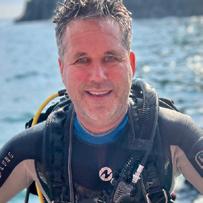
DR ADA NATOLI
Ada is a specialist in population genetics applied to conservation of species. Having been involved in whale and dolphin research since 1992, she is a member of the IUCN Cetacean Specialist List and founder of the UAE Dolphin Project. www.uaedolphinproject.org

CHRIS COMBES
Chris Combes is a photographer based in the UAE. He has had several placed photos in previous editions of EDA’s Digital Online competition one of which appears on the back cover of EDA’s The Best of Digital Online book. He is a contributing photographer to two Fujairah Crown Prince Office natural history book publications, and his work has also been featured by CNN Arabia. He is an Underwater Photography Instructor and a certified technical trimix diver. www.instagram.com/camera_aesthetica_underwater

PHILIPPE LECOMTE
Having followed in his father’s and brother’s love for the sea, French diver and underwater photographer Philippe, took to underwater photography in 2006 after having moved to Abu Dhabi in 2003 and now seldom travels without his camera. www.plongee-passion-photo.over-blog.com

MARCO GARCIA-LEON
Marco García León, a Chilean environmental lawyer specialised in law of the sea, advises Sea Shepherd on capacity-building projects in Latin America, focusing on illegal fishing. Recognised as one of Chile’s “100 Young Leaders” in 2013, he also lectures on ocean governance at marine conservation and law seminars.

4 DIVERS FOR THE ENVIRONMENT | JUNE 2024
82
CONTENTS
105


AS SUMMER ARRIVES WE REVIEW THE LAST SIX MONTHS
 IBRAHIM AL-ZU’BI Co-Founder
IBRAHIM AL-ZU’BI Co-Founder
We’ve just celebrated the 15th Digital Online Underwater Photography and Film Competition. My warmest congratulations to all of this year’s winners, we have seen some breathtaking work in the imagery and videography of these talented ocean enthusiasts. It’s truly heartwarming to see such fantastic submissions from all the competitors, supporting our mission to reveal the underwater world we care about so deeply to audiences across the United Arab Emirates and the world. I’m also deeply grateful to our sponsors for the event, who never fail to provide superb prizes to reward the winners for their exceptional work. The competition could not succeed without you.
I thank the judges who have the toughest role of all, Print Works and Giga Works who provide the beautiful exhibition prints each year, Deep Dive Dubai for the continuous support and venue, and the EDA team for another successful event.
Attendees were also treated to a special guest appearance by award-winning underwater photographer and cinematographer Tobias Friedrich, courtesy of Grand Stores. Tobias gave a keynote presentation offering expert guidance and tips on underwater photography to the audience. Thank you to all.
Following on from the Crown-of-Thorns Sea Stars (CoTS) outbreak decimating coral reefs on the East Coast, the culling operation to reduce the population was done in April led by Dr Henrik Stahl from the University of Khorfakkan, and supported by DP World. 119 CoTS were successfully removed, but we ask that divers and snorkellers continue to report any sightings of CoTS along the UAE’s east coast.
CoTS can pose a significant threat to the UAE’s beautiful coral reefs in the event of outbreaks such as this, so we are extremely grateful for the support of DP World for these initiatives to protect the UAE’s ocean environment. This is a prime example of how we strive to collaborate with leading local institutions such as the University of Khorfakkan, and volunteering groups such as the Dubai Voluntary Dive Team, to achieve our mission.
We are looking forward to the 2nd MENA Oceans Summit in partnership with Goumbook which will take place on the 10th of June. I look forward to seeing those of you there who have registered to attend. It’s going to be another informative event.
I do hope you enjoy reading our summer issue. We look forward to seeing you all at the next EDA events.
Happy reading and safe diving,
 Ibrahim Al-Zu’bi
Ibrahim Al-Zu’bi
5 JUNE 2024 | DIVERS FOR THE ENVIRONMENT EDA C0-FOUNDER’S NOTE
L-R: Digital Online’s Awards Night; The Crown-of-thorns Sea Star (CoTS) culling team getting instructions.
AN EDA MOVIE SCREENING

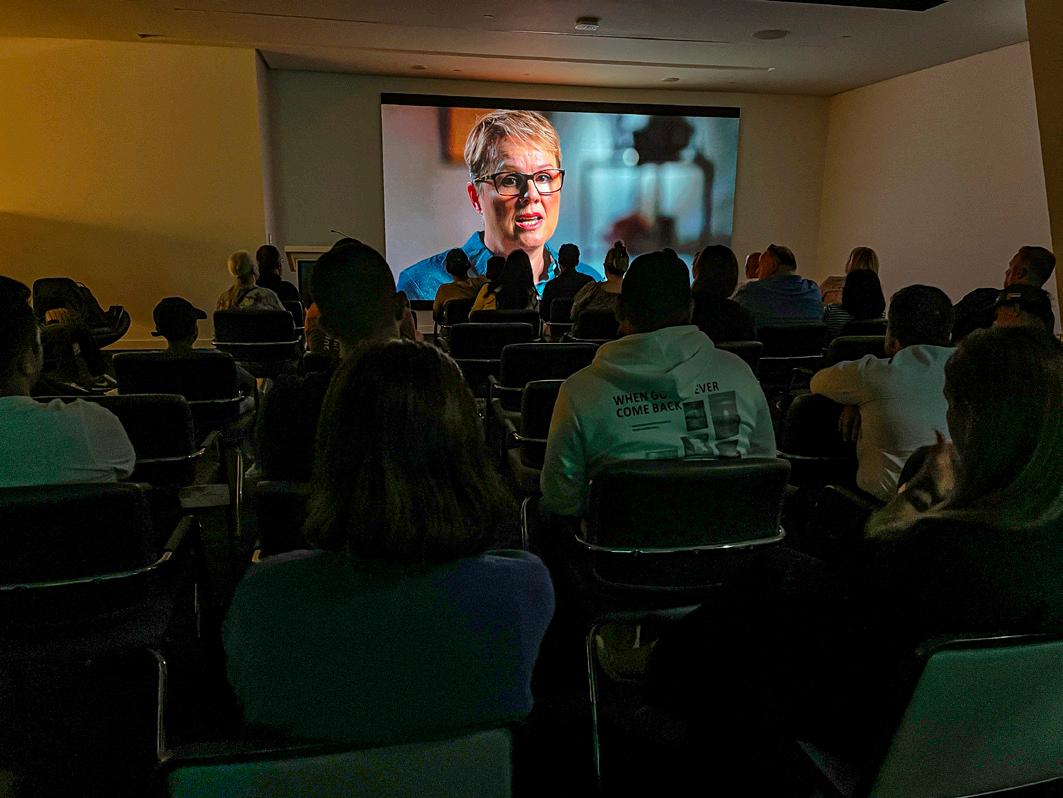
EDA screened its second Movie Screening of 2024 with the awe-inspiring documentary film, Diving into the Darkness for its members on the 9th of May at their event venue in partnership with Deep Dive Dubai. The 96 minute film by Award-Winning Director Nays Baghai is a beautiful story told, and cinematic eye candy.
SYNOPSIS
Canadian explorer and storyteller Jill Heinerth is one of the world’s greatest living cave divers, fuelled by an insatiable curiosity to explore the unknown “veins of mother earth”.

Jill has been involved in the most legendary and demanding cave diving expeditions of all time, from surveying the world’s longest caves in Mexico to discovering giant iceberg caves in Antarctica.
Juxtaposed with these hair-raising dives are intimate, candid interviews and animated flashbacks to her younger years that reveal a complex array of motivations for taking on these challenges. Despite how over 100 of her friends have perished in the depths, for Jill, each adventure in this dive odyssey is one step closer to becoming the woman she wished
she’d met when she was a child.
www.divingintothedarkness.com
WANT TO JOIN OUR EVENTS?
EDA Movie Screenings are only accessible to EDA members. Members must register by email to join our social events, or to receive the special link (subject to availability) to view the films online.
Visit our website to acquire EDA membership, or to renew it, here: www.emiratesdiving.com/membership-form
6 DIVERS FOR THE ENVIRONMENT | JUNE 2024
NEWS
DIVING
INTO THE DARKNESS


7 JUNE 2024 | DIVERS FOR THE ENVIRONMENT NEWS
DIVE CLEAN-UP AT PCFC JUMEIRAH 1 FISHING HARBOUR
PHOTOS BY DUBAI
A small dive clean-up was requested by the Ports, Customs and Free Zone Corporation (PCFC) on the 11th of May to clean-up the Jumeirah 1 Fishing Harbour in front of the 3 Fils restaurant where debris was clearly visible from years of waste accumulation. With the strategic sponsorship from DP World, EDA is able to organise and conduct more underwater clean-ups throughout the year.
With 6 experienced divers from the Dubai Voluntary Diving Team (DVDT) and 6 surface supporters, the clean-up was a success with 450.2kg of rubbish pulled up. The area of 20 square metres may sound small, but there was plenty to collect, and the weight quickly added up with all the ropes, 6 tyres and a boat stern brought up to the surface. Some members from the PCFC and 3 Fils came to help pull up the heaviest of items that needed some extra hands. A job well done by DVDT!





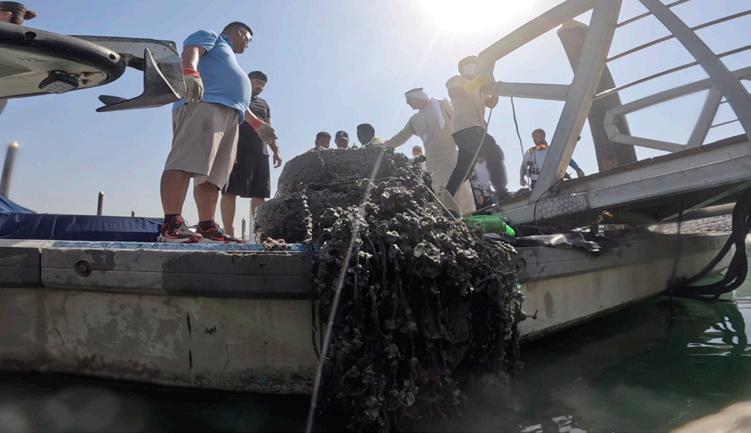


8 DIVERS FOR THE ENVIRONMENT | JUNE 2024 NEWS THIRD
ACTIVITY
CUA
VOLUNTARY DIVING
TEAM AND 3 FILS
MARINA DIVE CLEAN-UP | DUBAI Jumeirah 1 Fishing Harbour | 12 Adults MOST LIKELY TO FIND ITEMS TOTAL Grocery Bags (plastic) 16 Beverage Bottles (glass) 1 Beverage Bottles (plastic) 30 Beverage Cans 32 Cups, Plates (plastic) 33 Food Containers (plastic) 21 Food Wrappers (candy, chips, etc) 6 Straws/Stirrers (plastic) 1 FISHING & BOATING Line, Nets, Traps, Rope, etc 29 PACKAGING MATERIAL Other Plastic Bottles (oil, bleach, etc) 2 Strapping Bands 2 ILLEGAL DUMPING Construction Materials 1 Tyres 6 OTHER ITEMS/DEBRIS Clothing 3 E-cigarettes 7 Electronic Waste (phones, batteries) 9 Other Plastic Waste 40 Other Waste (metal, paper, etc) 1 OTHER ITEMS NOT LISTED Glasses 3 Metal Hangers 2 Knife 1 Boat Stern 1 GRAND TOTAL OF ITEMS 247 TOTAL BAGS COLLECTED 16 TOTAL WEIGHT (KG) 450.2
IN COLLABORATION WITH QCC
EAD ASSESSES MICROPLASTIC LEVELS IN ABU DHABI’S MARINE ENVIRONMENT

The Environment Agency – Abu Dhabi (EAD) and the Abu Dhabi Quality and Conformity Council (QCC) announced a landmark partnership to address the growing global challenge of microplastic pollution in the Abu Dhabi marine environment. This pioneering study, the first of its kind in the emirate, marks a crucial step in understanding and mitigating the impacts of microplastic contamination on our marine ecosystems.
This collaboration, which started in 2022 and will continue until 2025, brings together EAD's scientific marine expertise and research capabilities with QCC's state-of-the-art laboratory techniques and analysis proficiency. This synergy aims to conduct a comprehensive assessment of microplastic levels, providing invaluable insights into the health of our marine environment.
The initial environmental survey was conducted in 2022, undertaken by EAD’s marine team aboard ‘Jaywun’, the region’s most advanced marine research vessel. One hundred water samples were collected during a research mission, which covered the Atlantic Ocean, Mediterranean Sea, the Red Sea, the Gulf of Aden, the Arabian Gulf, and Abu Dhabi waters. Sediment samples were also collected from Abu Dhabi’s coast. All samples have been analysed by QCC, and the results have provided insight into the extent of the issue.
Assessment of the data by EAD has started to provide answers on the status of microplastic pollution. These findings are crucial to understanding the impact of these pollutants on marine organisms and will inform ongoing comprehensive environmental surveys encompassing water, sediment, and biota in the emirate's marine environment. The
alliance between EAD and QCC will create a methodology regimen, revolutionising the sampling and analysis of marine microplastics.
Faisal Al Hammadi, Executive Director of the Environmental Quality Sector at EAD, said, “Microplastics are tiny plastic particles that can persist in the environment for a long time. They pose a significant threat to ecosystems as they can be ingested by marine and terrestrial organisms, leading to potential harm to wildlife and ecosystem disruption. This partnership between EAD and QCC represents a significant step forward in addressing this pressing issue in Abu Dhabi. By combining expertise, the two entities aim to develop a tangible impact on the preservation and protection of the environment.”
Abdulsalam Al Hashmi, Director of the Environment Quality, Monitoring and Control Division at EAD, added, “In our bid to assess microplastic contamination levels, EAD is conducting comprehensive and ongoing environmental surveys. These involve the collection of marine sediment, water, and biota samples from key locations across Abu Dhabi's marine environment. The data and insights gained from this assessment will play a vital role in formulating strategies at both the local and national levels to effectively address and mitigate any impacts, and to institute a change in community practices.”
His Excellency Engineer Abdalla Al Muaini, Executive Director of Central Testing Laboratory at QCC said, “The partnership with EAD has allowed the Central Testing Laboratory (CTL) to underscore the significance of rigorous laboratory testing in uncovering the pervasive issue of microplastics in marine water. Through this partnership
CTL will be utilising its advanced laboratory techniques and its technical resources to identify and quantify these minuscule plastic particles, discerning their origins and distribution within marine environments.”
Al Muaini added, “CTL firmly believes that prioritising laboratory testing of microplastics in marine water is an essential step toward fostering a sustainable future for our marine ecosystem. By advocating for increased research and fostering collaboration between scientific communities and environmental stakeholders such as this partnership, QCC aims to inspire collective action and drive innovative solutions to combat the intensifying threat of microplastic pollution. The detailed analysis shall provide crucial insights for EAD to utilise laboratory analysis and data when developing their proactive measures in preserving the delicate balance of marine life.”
Ahmed Jaber Alshereef, Director of Life Science Abu Dhabi Division at QCC said, “Understanding the intricate composition of our marine ecosystems requires a diligent study of the unseen. Laboratory analysis of microplastics in marine waters unveils the silent threats that jeopardise the vitality of our marine environment, urging us to take meaningful action to safeguard our precious aquatic world. The prevalence of microplastics, imperceptible to the naked eye, poses a significant threat to marine ecosystems worldwide.”
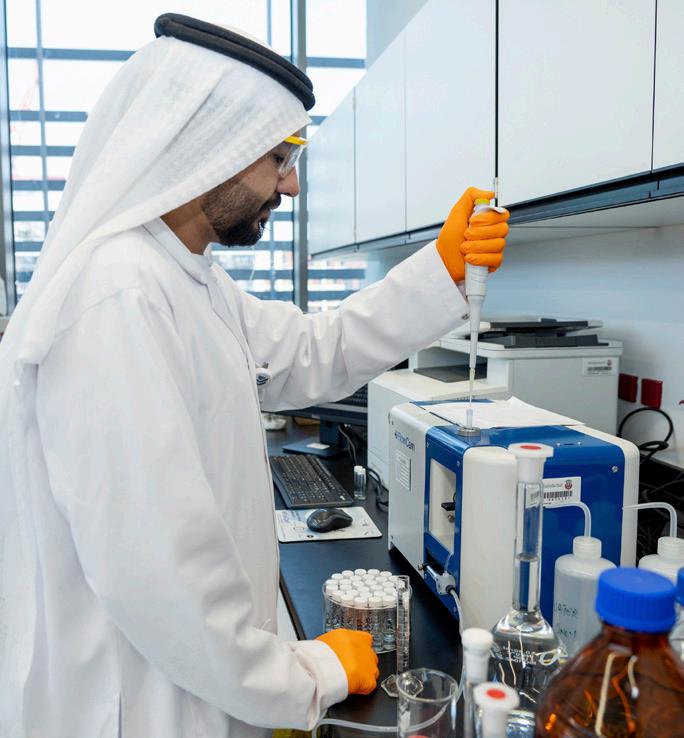

9 JUNE 2024 | DIVERS FOR THE ENVIRONMENT NEWS
EAD PLANTS 10 MANGROVE TREES FOR EACH COP28 VISITOR AS PART OF THE GHARS AL EMARAT INITIATIVE TO ADDRESS CLIMATE CHANGE
As part of the Ghars Al Emarat (UAE Planting) initiative to plant 10 mangroves for each visitor to COP28, which was held from November 30 to December 12, 2023 at Expo City Dubai, the Environment Agency – Abu Dhabi (EAD) announced that it has planted 850,000 mangrove trees along Abu Dhabi’s coastal areas.
The mangrove trees were planted in locations that offered the most suitable environments for growth, such as Marawah Marine Biosphere Reserve, Al Mirfa City, and Jubail Island, and will help absorb 170 tonnes of carbon from the atmosphere annually.
The Agency announced the initiative, which is being implemented under the patronage of His Highness Sheikh Hamdan bin Zayed Al Nahyan, Ruler’s Representative in Al Dhafra Region and Chairman of EAD’s Board of Directors, on the occasion of the country’s hosting of COP28. The initiative pledged to plant 10 mangrove trees for every visitor to the conference, using innovative methods, such as drone seeding. The rate of carbon uptake by trees is estimated at one tonne per 5,000 mangroves. This initiative reinforces the UAE’s commitment to achieving climate neutrality and promoting the adoption of nature-based solutions to reduce the effects of climate change.
Her Excellency Dr Shaikha Salem Al Dhaheri, Secretary General of EAD said, “This initiative comes as a continuation of the efforts initiated by the emirate of Abu Dhabi to restore mangrove trees in the 1970s, under the guidance of the late Sheikh Zayed – which was an expression of his in-depth knowledge of the local environment and his foresight. This strengthened the emirate’s pioneering role in rehabilitating these important environmental systems.”
Her Excellency further stated that after more than seven decades, the United Arab Emirates still greatly values mangroves as a coastal and vital habitat for blue carbon, whose role in supporting biodiversity and in mitigating and adapting to the effects of climate change is extremely important. Mangroves are being researched and studied by EAD, and as Abu Dhabi is home to the UAE’s largest mangrove areas, science-based mangrove restoration efforts are continuing across the emirate.
Her Excellency elaborated, “Mangroves are among the most productive coastal ecosystems in the world and are therefore very important because they provide a variety of environmental and economic services. Mangrove trees help mitigate the effects of climate change, absorbing greenhouse gases thanks to their ability to store and sequester carbon. Mangroves can absorb
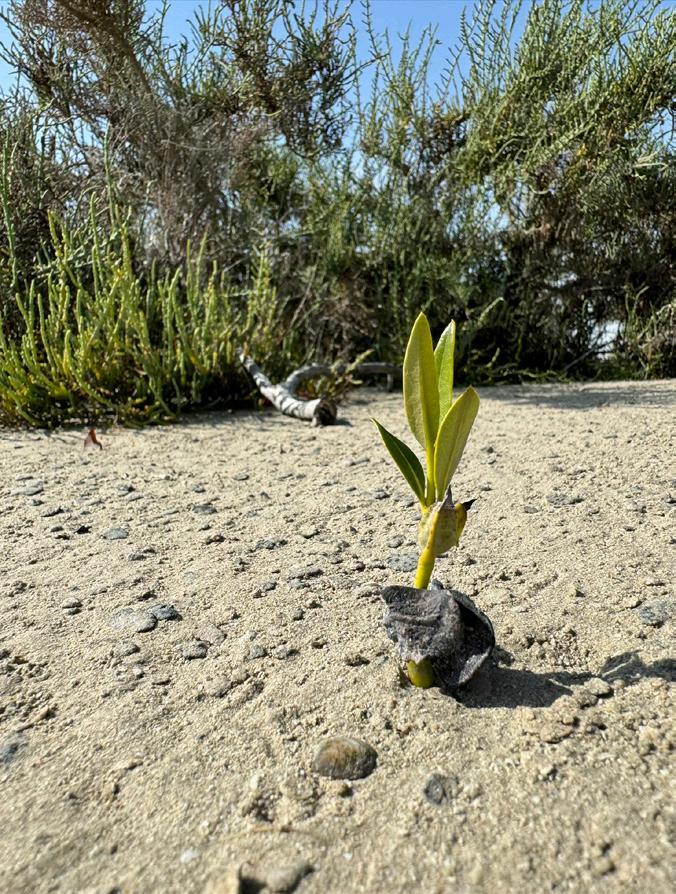
up to four times more carbon than trees in the Amazon rainforest.”
Her Excellency pointed out that studies conducted by EAD revealed the ability of mangrove trees in Abu Dhabi to store carbon at a rate of 0.5 tonnes per hectare per year, which is equivalent to 8,750 tonnes at the emirate level, and the energy consumption of 1,000 homes per year.”
The Ghars Al Emarat Initiative, created within the framework of the Abu Dhabi Climate Change Strategy, also supports the Abu Dhabi Mangrove Initiative, launched in February 2022, during the meeting between His Highness Sheikh Khaled bin Mohamed bin Zayed Al Nahyan, Crown Prince of Abu Dhabi and Chairman of the Abu Dhabi
Executive Council, and His Royal Highness Prince William, the Prince of Wales, at Jubail Mangrove Park. It was founded to provide a platform for developing innovative mangrove planting solutions, and contribute to mitigating the effects of climate change, while raising awareness of mangroves’ importance and the necessity of restoring them. The initiative also enhanced the emirate’s position as a leading global centre for mangrove conservation research and innovation.
Ghars Al Emarat also supports the 13th United Nations Sustainable Development Goal (SDG) related to “Climate Action”, which calls for urgent steps to address climate change and adapt to its effects, as well as national initiatives, including the UAE Net Zero by 2050 strategic initiative, which is in line with the UAE’s goal of planting 100 million mangrove trees by 2030.
Mangroves cover about 176 square kilometres across the Abu Dhabi Emirate, equivalent to 17,600 hectares (11,200 hectares of natural trees and 6,400 hectares of planted trees), with 2,441,600 tonnes of carbon stored by natural mangroves and 676,480 tonnes by planted trees. This means that more than 3 million tonnes of carbon are currently stored by mangroves in Abu Dhabi.
As well as mitigating climate change, mangroves help adapt to the challenge, stabilising coasts, protecting against the impact of storms, and reducing coastal erosion.These natural systems protect infrastructure and communities located along the coast. By protecting and restoring mangrove ecosystems, EAD strengthens nature’s resilience and reduces the impact of climate change on communities.

10 DIVERS FOR THE ENVIRONMENT | JUNE 2024 NEWS
FOLLOWING THE SUCCESS OF THE SINGLE-USE PLASTIC BAG BAN
EAD AND ABU DHABI DEPARTMENT OF ECONOMIC DEVELOPMENT TO BAN SINGLE-USE STYROFOAM PRODUCTS IN JUNE

As part of Environment Agency – Abu Dhabi’s (EAD) Single-Use Plastic Policy which was launched in 2020, a ban on a series of Styrofoam products in the emirate will become effective from the 1st of June 2024.
Styrofoam is a type of plastic called expanded polystyrene and it has a range of uses. As part of the ban, Abu Dhabi, is targeting avoidable, single-use consumer products.
Specifically, the banned products comprise cups, lids, plates and beverage containers (including their caps and lids) made of expanded polystyrene. In addition, food container receptacles for products that are intended for immediate consumption, either on the spot or for takeaway, or containers that have a product that is typically consumed from the receptacle and is ready to be consumed without any further preparation such as cooking, boiling or heating, will also be prohibited.
The products that will be exempt from the ban include those not designed for single consumer use such as big storage boxes and coolers and trays used for meat, fruit, readymade dairy products and other food items for retail sale. Also, all other products designed for medical uses are also exempted.
Her Excellency Dr Shaikha Salem Al Dhaheri,
Secretary General of Environment Agency – Abu Dhabi, said, “As an extension of the Abu Dhabi Single-Use Plastic Policy which we initiated in 2020, and following the extremely successful ban on single-use plastic bags in 2022 and the introduction of the Single-Use Plastic Bottle Return Scheme in 2023, effective from the 1st of June 2024 there will be a ban on some Styrofoam products in the emirate of Abu Dhabi. This move will help reduce litter in the environment as Styrofoam in particular breaks easily into microplastics that can enter the food chain and be harmful to human health as well as affect biodiversity.
“We are striving to make life easy for consumers while maintaining the balance of conserving the environment at the same time, therefore, we have selected items that are avoidable singleuse plastics and have clear and sustainable alternatives. We will also provide support to government and private sector entities to facilitate the shift towards reusable solutions.”
She elaborated, “The success story for the Abu Dhabi Single-Use Plastic Policy is that the consumption of 310 million single-use plastic bags has been avoided up to April 2024, and the number of bags distributed at retailers’ cash counters has reduced up to 95 per cent. In weight, more than 2,000 tonnes of single use plastic bags have been avoided. Similarly,
more than 1,000 tonnes of bottles, equivalent to 67 million bottles, were collected last year”.
Her Excellency Dr Shaikha Salem Al Dhaheri said, “Such great results would not have been possible without consumer and private sector active involvement.”
His Excellency Rashed Abdulkarim Al Blooshi, Undersecretary of the Abu Dhabi Department of Economic Development (ADDED) reaffirmed ADDED’s commitment to support environment-friendly strategies to ensure providing best possible conditions for doing business and preserving the environment. His Excellency Al Blooshi highlighted the significant role played by ADDED in raising awareness among commercial outlets and industrial facilities in the emirate to comply with the single-use plastic policy, reflecting the proactive approach to achieve the policy’s objectives and enabling the private sector's transition to environment-friendly alternatives.
ADDED has shared the circular on Styrofoam ban with more than 50,000 commercial establishments and 80 industrial facilities involved in plastic manufacturing. It also launched an awareness programme, in coordination with EAD targeting commercial and industrial establishments. The programme aimed to introduce the ban policy and present the targeted Styrofoam products. A list of excluded products was also shared during the programme’s workshops as well as the mechanism of reconciling the conditions of economic establishments and switching to locally manufactured alternatives. ADDED is set to conduct field inspection campaigns on sales outlets and industrial establishments to ensure the implementation of the ban across Abu Dhabi according to the specified timetable.

11 JUNE 2024 | DIVERS FOR THE ENVIRONMENT NEWS
THE BREATH BENEATH
ENHANCING LUNG FUNCTION THROUGH FREEDIVING
FEATURE BASSEL OUNAH – APNEA ZONE PHOTOGRAPHY COSTAS CONSTANTINOU

Through the physical and mental strength this sport involves, it also focuses on a holistic practice centred on respiratory and lung development. During the breath work, a person goes through some tough physical exercises that increases the size of the lungs, perfects the oxygen collection, strengthens the breathing muscles, and improves the respiratory system as a whole. This is a study where we dig into the scientific part and validate the advantages of freediving which makes this sport even more attractive for people who want to enhance their respiratory system.
One of the most striking features that sets freedivers apart from regular divers, is their higher lung capacity. This is done by repeatedly
using the same breathing techniques which increase the air the lungs can take, and strengthens the elasticity of the chest wall and respiratory muscles.
Scientific research done revealed that freedivers have a larger total lung capacity than people who do not dive. Instead of a transient effect, it has long-term improvement in lung functioning. The University of Sports Science in Cologne has shown a significant increase in the average lung capacity of freedivers by 6%; this achievement can be used in other sports and physical activities that demand the highest amount of aerobic exercise.
Freediving exploits the organism's ability to optimise oxygen utilisation. By using the apnea
method and holding your breath for a while, the body can easily adjust to the budgeting technique. This adaptation enables them to take longer breaths, making them well-suited for sports.
The Scandinavian Journal of Medicine & Sports Science conducted a study that supports this. The research revealed that freedivers have more myoglobin in their muscle cells, which allows their muscles to store more oxygen. The same adaptation we see in seals and whales, who are regular freedivers, also applies to humans.
Interestingly, this strengthens the diaphragm and other respiratory muscles, regardless of how long you breathe.
In clinical and research placement, I learned that the training is for muscle strength and breathing effectively. The respiratory patients will get help. Ten weeks of regular longdistance breath-holding not only improved the contractile power of the diaphragm by around 15 percent but also made the breath's efficiency visible immediately.
The satisfaction of freediving is not only physical but also mental and emotional. It improves the breathing problems you get, such as asthma or panic attacks, which people usually experience. By breathing slower and inhaling, the freediving response activates our body to stress, and improves asthma attacks and respiratory diseases.
The Journal of Psychosomatic Research have recently discovered that patients with stress and anxiety can ease up to 40 percent of their symptoms by engaging in mindfulness practices, such as freediving training. Such outcomes pave the way for the popularisation of freediving as a sport and further development in psychosomatic treatment.
Lung psychology is so multifaceted and specific when it comes to freediving. Enhancement of aerobic capacity, oxygen consumption optimisation, respiratory system strengthening, and treatment methods offer an excellent platform for respiratory health improvement via freediving. The more we focus on processes that target overall health, the more disciplines like freediving are added to those that positively impact the respiratory system and the interaction between body and mind. It is either a sport or a meditation, a natural medicine that will help us lower stress levels as we feel more deeply underwater.
12 DIVERS FOR THE ENVIRONMENT | JUNE 2024 NEWS
MOHAMMED AL-TANIJI
FEATURE ARWA BADRI PHOTOGRAPHY ANDREY BIZYUKIN

The United Arab Emirates (UAE) is keen on enhancing ties with the Russian Federation to develop the sports sector and benefit from their expertise.The UAE seeks to invest in and strengthen the shared relations through official visits, contributing to fruitful collaborations between the two countries. The Prymorsky Research Centre for Underwater Studies, a non-profit organisation, extended an official invitation to have a professional diver from the UAE participate in the international ice navigation competition to become the first Emirati to compete in this championship.
The competition is held annually in February, under unique and challenging conditions where snow, ice, and blue water with temperatures dropping to -2 degrees Celsius converge. Diving in low temperatures is highly risky, however, professional diver Mohammed AlTaniji managed to prepare, train, and succeed in participating within a short period.
Mohammed Al-Taniji was invited to participate due to his wealth of knowledge, intensive training, and expertise in the technical and commercial diving world. He is the first Emirati to be honoured with a medal by the Mayor of Vladivostok, Konstantin Shestakov. Al-Taniji has received specialised and intensive training in commercial and technical diving from both British and French academies. In 2023, he recorded a dive reaching a depth of 132 metres. What distinguishes him is the knowledge acquired from studying marine engineering and numerous specialised courses. He is an innovative diver who won the first prize in the Excellence and Innovation Award 2019 for inventing a diving apparatus serving specialised divers in shipwreck and
environmental diving. A contract was signed with a national company to transform this innovation into a product.
Mohammed Al-Taniji is a member of the Sharjah International Marine Sports Club, a leading platform in supporting professional athletes in various fields, including diving. This club provides an ideal environment for developing sport talents and offering the necessary support to achieve excellence. AlTaniji received crucial support from the club by providing the necessary equipment for the international participation. The Sharjah Marine Sports Club’s support reflects its commitment to supporting sports and maritime athletes, encouraging emerging champions to exert more effort to achieve success and fulfil their dreams in international marine sport competitions.



13 JUNE 2024 | DIVERS FOR THE ENVIRONMENT NEWS
[MEMBER SPOTLIGHT]
NIGHT DIVE WITH REEF MANTA RAYS
FEATURE PRIYADARSHEE PANIGRAHI – ADVANCED OPEN WATER DIVER

Despite finishing off my Advanced Open Water course in April 2023 and having logged in around 60+ dives, I still hadn’t mustered enough courage to do a night dive. However, our Maldives trip in Nov-Dec last year changed it all.
We stayed in the South Male Atoll at Sun Siyam Olhuveli which is well known to have reef manta rays on its doorstep. A night dive with them is a ‘bucket list’ item for many divers.
Reef manta rays are huge fish with a wingspan that can reach 16 to 18 feet. These majestic fish appear like they are flying underwater and are known for their acrobatic behaviour, often seen leaping or somersaulting out of the water. Reef manta rays are also filter feeders, primarily consuming plankton and small fish. They use their fins, located on either side of their mouths, to funnel food into their mouths.
Reef Mantas come to feed on plankton which are attracted by the huge lights put up on the resort’s jetty. This opportunity was too good to miss.
We decided to do the night dive on the 30th of November. Tisya (my daughter who is a Junior Advanced Open Water diver) and I kitted up for the dive. Sun Siyam’s diving instructor and Maldivian national Athau
Rasheed was our dive guide. He briefed us about the night dive with special emphasis on how a night dive was different from a day dive. We were firmly instructed to not switch our torches off at any time and a special focus was given on how to communicate with each other during the night dive.
We had a shore entry and waited for a few minutes below the jetty, but the initial moment was disappointing with no mantas appearing before us. We then dived into the house reef to see some marine life and came back after a few minutes to the most dazzling underwater display we had ever seen!
Anchoring ourselves to a non-living part of the reef, we watched with bated breath. It was ‘showtime’ and 3 to 4 reef mantas performed all sorts of acrobatic moves underwater. Swooping around us with their huge wings, they appeared omnipresent. It was an incredible feeling to see such magnificent creatures up close and personal. We were shining our torches on them and were able to observe them minutely. It was sheer poetry in motion. The reef mantas were extremely graceful and left us wonderstruck.
Tisya said, “Diving with such gentle giants was a unique and magical experience. It was my first night dive and diving in the darkness with
torches in our hand was certainly a very a different, exhilarating and adventurous outing.”
This dive will definitely remain as one of our most memorable dive outings and has definitely given us a wonderful peek into the lives of the magnificent manta rays.
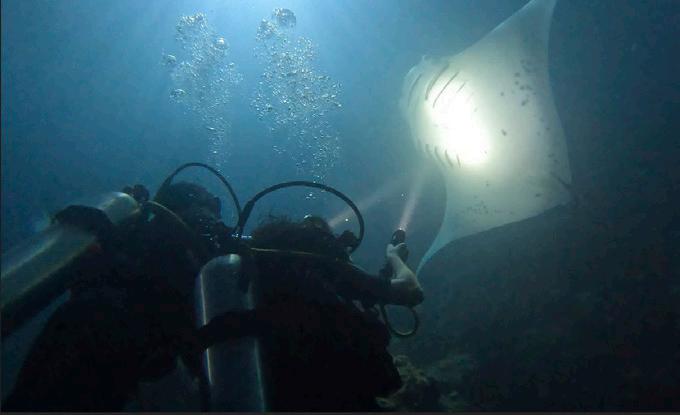

www.instagram.com/sunsiyamdiving www.sunsiyam.com/sun-siyam-olhuveli
14 DIVERS FOR THE ENVIRONMENT | JUNE 2024 NEWS
SUN SIYAM OLHUVELI
DIVING SAFETY: ESSENTIAL TIPS FOR DIVERS
FEATURE DR HASSAN KHAYAL, PADI COURSE DIRECTOR

Beneath the ocean's glittering surface is a fascinating world full of colourful marine life, fascinating coral reefs, and hidden treasures just waiting to be unearthed. Scuba divers find that discovering these undersea treasures is an unparalleled, thrilling experience. Safety is still the top priority, despite the deep's attraction. Following and comprehending diving safety guidelines is crucial for a fun experience, regardless of your level of experience or interest in underwater exploration. As I regularly like to remind my students “the best kind of fun, is safe fun”.
Some of the key tenets of diving safety are:
• Dive within Your Limits: It's critical to understand your individual diving limitations and talents before making the leap. Always dive within your comfort zone and certification level, keeping in mind variables like water temperature, visibility, depth, and currents. Never overextend yourself, and be truthful about your level of health and physical fitness.
• Buddy Up: A vital component of diving safety is the buddy system, which offers aid, assurance, and support to one another underwater. Always go diving with a trustworthy dive partner who values communication and safety as much as you do. Have a comprehensive predive briefing before descending, covering dive objectives, hand signals, emergency protocols, and backup plans.
• Plan Your Dive and Dive Your Plan: An underwater adventure that is both safe and fun starts with careful dive planning. Create a thorough dive plan before you get into the water. It should include the choice of dive site, points of entry and departure, maximum depth and bottom time restrictions, ascent and decompression profiles, and emergency contact details. To predict the weather and possible hazards, consult diving guides, tidal tables, and weather forecasts.
• Conduct Your Pre-Dive Safety Checks: Make a thorough pre-dive safety check to make sure all equipment is secure and operating as it should before diving in. Check the integrity of all of your diving equipment, such as tanks, masks, fins, dive computers, buoyancy control devices (BCDs), regulators, and dive computers.

Before getting in the water, look for any indications of wear, damage, or malfunction and take care of any problems.
• Practice Buoyancy Control: Gaining proficiency in buoyancy control is crucial to preserving stability, buoyancy, and appropriate body alignment during the dive. To achieve neutral buoyancy, reduce effort and conserve energy underwater, use appropriate weighing and buoyancy modifications. Use buoyancy control devices (BCDs) to safely adjust depth and ascent rates, and steer clear of abrupt ascents or descents.
• Monitor Your Air Supply: Sustaining a sufficient supply of air is essential for underwater diver comfort and safety. To keep track of remaining air pressure and bottom time, periodically check your air consumption rate and stay in touch with your diving partner. Decompression sickness and running out of air are risks that should be avoided. Set predefined air reserve limits and get to the surface long before reaching critical levels.
• Stay Alert and Vigilant: To recognise possible risks and reduce them while diving, one must have a thorough understanding of underwater awareness. Keep an eye out for indications of shifting circumstances, underwater obstructions, interactions with marine life, and distress signals from divers. Use established hand signals and gestures to maintain clear communication with your dive companion, and be ready to act fast and decisively in case of emergencies.
• Respect Marine Life and Environment: Divers have an obligation to maintain and preserve marine life and habitats as stewards of the ocean. Keep a safe and respectful distance from underwater animals and refrain from bothering, touching, or upsetting them. Reduce your influence on delicate ecosystems and coral reefs by adhering to recognised conservation recommendations, using appropriate buoyancy control, and avoiding contact with delicate structures.
• Be Prepared for Emergencies: Even with meticulous planning and preparation, emergencies can arise at any time while diving. Assemble the information, abilities, and gear you'll need to handle typical diving emergencies such as malfunctioning
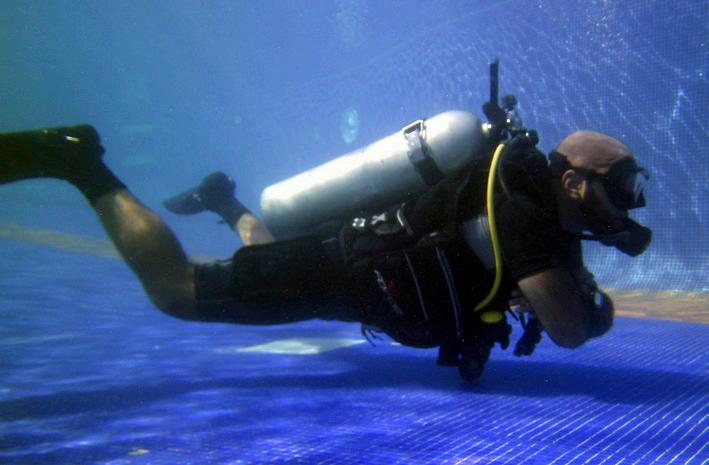
equipment, entanglements, disorientation, and underwater injuries. Keep a fully supplied dive safety kit with communication, signalling, emergency oxygen, and first aid materials on hand.
• Continue Your Diver Education: Scuba diving safety is a lifelong process of growth, learning, and skill building. To improve your underwater diving expertise, comfort level, and understanding, make an investment in ongoing education and training. Take part in workshops, seminars, and specialised courses on diving safety, emergency response tactics, rescue procedures, and navigation.
With the above key tenets of diving safety, hand in hand, the key factors that cause diving accidents must be briefly addressed, as that is a whole different topic on its own, in order to apply the diving safety tenets appropriately. Statistically, the most common reason for diving accidents is diver error, as in, the mistakes a diver makes, rather than circumstances out of their control. With that in mind, the value of applying the diving safety tenets becomes much more apparent as divers can manage to reduce the likelihood or impact of the incidents they might fall victim to. Moreover, as divers become more and more experienced, they also become more and more confident and complacent, and ironically, more likely to have accidents. Therefore, as you become more and more experienced and confident as divers, applying these safety tenets carefully becomes all that much more important too!
Divers are the custodians of the undersea environment, and as such, they are essential to maintaining and safeguarding the delicate ecosystems that exist there. Through the adoption of a safety, responsibility, and respectful culture, divers can take advantage of the ocean's wonders while reducing dangers to both themselves and the marine ecosystem. Divers can experience amazing underwater adventures with confidence, peace of mind, and a profound appreciation for the beauty and diversity of the aquatic world by following fundamental diving safety guidelines. "Once the sea casts its spell, one is held in its net of wonder forever," as Jacques Cousteau once observed. Make a safe dive and watch as the ocean's enchantment shows itself to you.
15 JUNE 2024 | DIVERS FOR THE ENVIRONMENT NEWS
PADI AWARE SURPASSES $500K IN GRANTS
TO EMPOWER LOCAL COMMUNITIES TO TAKE ACTION AND SAVE THE OCEAN
PADI AWARE Foundation™ announces the third year of recipients for its 2024 Mission Hub Community Grant Programme . The global non-profit is continuing to team up with passionate Ocean TorchbearersTM working to create a healthier future for ocean ecosystems around the world by empowering those who are dedicated to accelerating their local actions to drive global ocean change.
From sea turtle conservation, to coral restoration, to seagrass planting, five community initiatives around the planet were selected as the 2024 recipients, bringing the total to 45 grantees since the programme started receiving a total of over US$500,000 in grants collectively.
“We are thrilled to continue our grant programme that directly supports communitybased ocean conservation projects,” says Danna Moore, PADI AWARE® Foundation’s Global Director. “These PADI Dive Centres and NGOs are driving meaningful local action from the heart and often with little or no funding support, and these grants allow them to be true superheroes for our shared blue planet.”
PADI AWARE launched its Mission Hub Community Grant Programme in 2022 to further drive PADI’s Blueprint for Ocean Action, with the grants awarded in the five distinct categories that have been mapped out, identified to drive the most impactful positive ocean change: coral restoration, developing Marine Protected Areas, eliminating marine debris, reducing the effects of climate change, and marine species protection.
PADI joins PADI AWARE in celebrating the following initiatives, welcoming them as grantees in the first cycle of the 2024 Mission Hub Community Grant Programme:
SEA COMMUNITIES (INDONESIA) CORAL RESTORATION
In 2012, Sea Communities was founded in Bali to continue the coral restoration work with the local fishing community, employing citizen scientists to fuel the work. To this day, Sea Communities works with the fishing community and marine scientists from universities around the world to restore the coral habitat. They’ve expanded into coral nurseries, microfragmentation trials, and mass plantings by volunteer divers and local fisherfolk.
This grant will enable Sea Communities to continue the work of STARR (Scientific Trial Active Reef Rehabilitation), bringing community and travelling recreational divers together with scientists to work together on coral conservation.

"I wish more of humanity could dive and see how wondrous it is underwater,” says Elaine Kwee, Co-Founder, Sea Communities. “Science needs to be communicated to the layperson and particularly, to coastal communities that need it. STARR draws these elements together, and provides divers with a meaningful opportunity to take action to protect our blue planet.”
RWENZORI SCUBA DIVERS AND SALVAGE LIMITED (EAST AFRICA)
ELIMINATING MARINE
DEBRIS
Waste management (especially the production of plastic goods) is a problem across the region. With 90% of rivers in Uganda draining into Lake Victoria, the main source of fish, transport, and water supply for 20 million people is also the most polluted body of water in the East African region.
The PADI AWARE Foundation grant will provide critical resources for Rwenzori Scuba Divers to establish the Lake Victoria Rwenzori Scuba Divers and PADI AWARE Conservation Programme (LVRPA Initiative) to address waste management issues affecting the lake. The initiative aims to reduce poor waste management and improve sanitation issues through citizen science, community engagement and training, conservation partnerships, youth initiatives, and Dive Against Debris® clean-ups and surveys in Lake Victoria and its tributaries.
“Our Dive Against Debris on Lake VictoriaRiver Nile Uganda is a game changer to provide data for Uganda to understand the inland contribution to save our ocean,” says George William Mukasa, Director and Project Manager of Rwenzori Scuba Divers and Salvage Limited.
MIKE'S DAUIN BEACH RESORT (PHILIPPINES)
MARINE SPECIES PROTECTION
Mike’s Dauin Beach Resort, a Five Star PADI Dive Resort in Dauin, Philippines, is committed to responsible diving and protecting the fragile marine ecosystem of their local waters, including their 13km coastline that has extensive seagrass beds which provide foraging for green sea turtles.
Their grant will support their Project Pawikan (“sea turtle” in local dialect), which surveys sea turtles and documents the distribution and health of the turtle population and the seagrass beds they frequent. Working with local and national authorities, Project Pawikan will be in a position to inform decision-makers as to how to safeguard Dauin’s sea turtles for future generations.
“Project Pawikan will help raise awareness, locally and beyond of the importance of seagrass beds as Green Turtle foraging grounds, and the need to improve their protection,” says Jonathan Anderson, Project Pawikan Officer.
BIG BUBBLE DIVE RESORT (THAILAND)
CORAL RESTORATION
Operated by locals within the community of Koh Tao, Thailand, Big Bubble Dive Resort is committed to restoring coral reefs in the area. Since 2017, they have been working with the Department of Marine and Coastal Resources Thailand, planting more than 100,000 coral fragments around the island. With the support of PADI AWARE Foundation, Big Bubble Dive Resort expanded the project in 2022.
With a proven survival rate of 80%, Big Bubble Dive Resort is embarking on a new coral restoration initiative with funds from the PADI AWARE grant. They will plant 3,000 coral fragments in Chalok Bay to commemorate Big Bubble Dive Resort's 30th anniversary, mobilising local and international divers to participate through their citizen science programme. The artificial reefs they plant will serve as a resource for interested divers to learn more about coral reef conservation.
“The oceans are too big for one single hand to protect and care for,” says Chatsakul Kaewpanao, PADI Course Director and General Manager of Big Bubble Dive Resort. “However, if many small hands work together, our oceans will definitely get better.”
The PADI AWARE Mission Hub Community Grant Programme is open to all PADI Dive Centres around the world and to locally based NGOs and charities working on marine conservation issues with an operating budget below US$1 million.
FIND OUT MORE
To learn how to take action for ocean conservation in your community, visit: www padiaware org
For more information on funding criteria and eligibility: www.padi.com/aware/community-grants
16 DIVERS FOR THE ENVIRONMENT | JUNE 2024 NEWS
DIVE
COMMUNITY SET TO CELEBRATE 10th
PADI WOMEN’S DIVE DAY

In what marks a massive milestone for PADI® Women’s Dive Day, the world’s largest purpose-driven scuba diving organisation is calling on the 6,600 PADI Dive Centres and Resorts along with the 128,000 PADI Professionals to join them in hosting Ocean TorchbearersTM for the 10th annual PADI Women’s Dive Day. The global event will bring everyone together to explore and protect the blue planet on 20 July 2024.
“Ten years ago, PADI Women’s Dive Day began as a simple idea – encourage more women to go scuba diving,” says Katie Thompson, Senior Director of Environment + Sustainability for PADI Worldwide, and the founder of the PADI Women in Diving Initiative and its annual flagship event. “For over a decade now, passionate PADI dive operators across the globe have collectively planned memorable educational and inspiring events that change lives and positively impact dive communities. Women’s Dive Day has been a catalyst to break down barriers and empower divers of all genders, ages, races, backgrounds, and abilities to believe they too can explore and protect the ocean.”
Since its inception in 2015, there have been
thousands of Women’s Dive Day events that have taken place across 183 countries. These events encourage scuba divers, freedivers, and mermaids to come together to plant new coral nurseries, perform beach and underwater clean-ups, set a world record for the longest underwater female human chain, fundraise for breast cancer research and local women’s shelters, and take their first breaths underwater as the newest PADI Scuba Divers.
“This event has grown into the most celebrated day of diving on the planet, transforming lives and empowering more people to seek adventure and save the ocean together,” continues Thompson. “As a result, we are now seeing PADI certification growth for females outpace that of males.”
Before PADI Women’s Dive Day began, female certifications made up 35% of total yearly PADI certifications. Now, a decade later, they have grown to make up nearly 40% of total certifications yearly.
PADI is encouraging members to plan their own events and register them as soon as
possible, inviting their communities, both divers and non-divers alike, to participate in a PADI Women’s Dive Day event on 20 July 2024. These events will be promoted on the PADI Women’s Dive Day Activities Locator –allowing people to join in on the celebration.
“It’s inspiring to see PADI Members continue to champion this annual celebration year after year, hosting events that unite local communities and encourage diversity while taking meaningful action to protect the underwater world,” continues Thompson. “Females of all ages will take their first breath underwater this July, perhaps fulfilling a dream or overcoming a personal or physical challenge. This was our goal from the beginning.Women’s Dive Day continues to invite more people in and create confident and capable divers who can now share their love of diving and be stewards for the ocean.”
HOST AN EVENT
Want to register a PADI Women’s Dive Day event? Visit: www.padi.com/women/hostanevent
17 JUNE 2024 | DIVERS FOR THE ENVIRONMENT NEWS
ANNIVERSARY
DISCOVER FREEDIVING
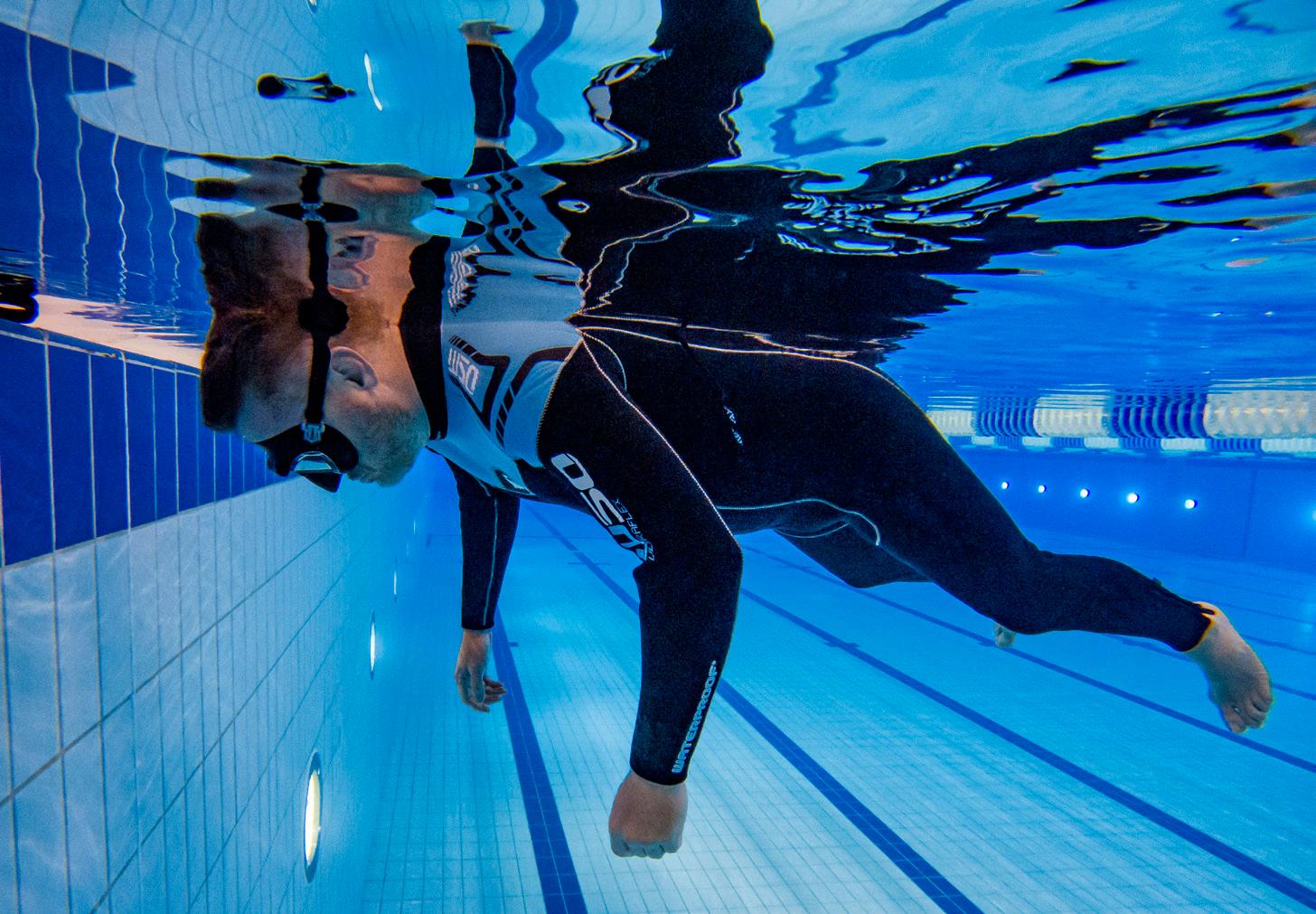

Until now, I’d never considered giving freediving a try. Firstly, it was another hobby to think about on top of all the others. Secondly, I have been a scuba diver since 1992, and don’t have any freedivers in my circle.
However, I do snorkel on the odd occasion, and I’m terrible at holding my breath when ducking underwater – I have to pop back up for air in a matter of seconds. I could swim underwater for 2-3 laps of a pool (depending on how big it was) when I was a kid without fins, so why can’t I do that now?
This is a skill I’m going to find very useful for an upcoming trip to South Africa (look out for my Sardine Run article in September’s issue!), so I thought it might be good to get a few freediving tips and techniques to improve my stamina underwater.
I gave Bassel Ounah from Apnea Zone a shout and asked if we could try the Discover Freediving course to see if this was something worth delving into. The Discover Freediving
course gives you a taste of learning how to Freedive, such as breathing techniques, breathholds at the surface, recovery breathing, and finning with freediving fins.
Finning seemed strange at first, but freediving fins are crafted for power with as little effort as possible, while scuba fins are designed to propel divers with heavy gear.
I was also surprised to learn that you should never exhale when freediving! This runs contrary to everything I’d ever learned as a scuba diver. This is because you always have the same air in your lungs from surface to bottom and back up, rather than inhaling air from a tank. Exhaling on the way up deprives your body of oxygen and can make you more negatively buoyant.
Having a lousy breath-hold, I did manage to surpass the minumum requirement of 1min 30 (an impressive 1min 40!) so there is hope yet. My curiosity was piqued for another round, and I’m looking forward to finding out more.



www.instagram.com/apneazone
www.apneazone.club
18 DIVERS FOR THE ENVIRONMENT | JUNE 2024 NEWS
FEATURE ALLY LANDES PHOTOGRAPHY YEHYA ALAME


19 JUNE 2024 | DIVERS FOR THE ENVIRONMENT
you join a Reef Check EcoDiver Training Course, you will learn about our local ecosystems and you will be able to participate in our regular survey dives which will help us to understand the threats our corals are facing by providing important data. EMAIL: reefcheck@emiratesdiving.com WEBSITE: www.emiratesdiving.com/events/reef-check EDA IS A NON-PROFIT NGO ACCREDITED BY UNEP AS AN INTERNATIONAL ENVIRONMENTAL ORGANISATION
When
CHLOE BLUE DIVING CLUB & AL MAHARA DIVING CENTER
JOIN FORCES FOR A REEF CHECK ADVENTURE

This spring, the Chloe Blue Diving Club, in a dynamic partnership with Al Mahara Diving Center, hosted an exciting and educational 3-day Reef Check Course at the stunning JA The Resort. Under the expert guidance of Kathleen Russell, seven eager Reef Check trainees delved into discovery and conservation, learning the ins and outs of reef monitoring in a fun and engaging environment.
From the moment the course began, it was clear this was going to be a special experience. Day one kicked off with Kathleen introducing the group to the fascinating world of substrates, invertebrates, and reef fish. Through a blend of insightful lectures and hands-on practice, trainees quickly learned to identify various marine species and understand their roles within the reef ecosystem.
Day two was where the real adventure began. Equipped with newfound knowledge and an enthusiasm for marine conservation, our trainees took to the crystal-clear waters surrounding JA The Resort. Guided by Kathleen, they practiced the art of surveying, meticulously recording data on reef health and learning how to monitor changes over time. The beauty of the underwater world combined with the thrill of scientific discovery made for an unforgettable day.
By the third day, the trainees were well on their way to becoming proficient reef guardians.
They completed their surveys with growing confidence, sharing newfound camaraderie and a collective passion for protecting our precious marine environments. The sense of accomplishment was evident as they realised the impact their efforts could have on preserving coral reefs for future generations.
We’d like to share a testimonial from one of our participants, Alexander Kolmakov: “After participating in several clean-ups and hearing time and time again that there is a certification for properly counting different species and understanding different impacts on the coral reef ecosystems, I decided to give it a go. Within one day, we learned everything from what local indicator species are and what they actually indicate, to how random sampling of the environment is carried out. It was engaging, fun, and also helped me immensely with my side project of going through scientific data on species occurrence in the region.
Kathleen Russell also shared her thoughts on the importance of reef monitoring: “Reef check coral monitoring is vital to keeping check on our coral areas, especially in the Arabian Gulf. Though the corals are resilient in the Gulf, we have seen a lot of reef degradation and coral bleaching. Eco divers are the first response as divers go into the water regularly. They have eyes in their coral areas. We know we are experiencing another mass coral bleaching event and we want to be vigilant


in reporting hotspots and bleaching areas. As Reef Check eco divers, we can monitor the bleaching activity and share data across the other hotspots. The more eco divers in the water means we can have more detections and reporting efforts across the globe.”
This Reef Check Course was not just about gaining knowledge; it was about fostering a community of dedicated ocean stewards ready to make a difference. The collaboration between Chloe Blue Diving Club and Al Mahara Diving Center proved that, together, we can achieve great things in the realm of marine conservation.
As we wrap up this fantastic event, we extend our deepest thanks to Kathleen Russell for her inspiring leadership, to Chloe Blue Diving Club for their warm hospitality, and to the 7 incredible trainees for their dedication and enthusiasm.
Keep an eye out for our upcoming schedule of reef check surveys. We invite all divers to join us in our mission to monitor and protect the vibrant coral reefs of the Emirates. Together, we can ensure these underwater wonders continue to thrive for generations to come.
To join our regular reef checks, please email: godive@chloebluescubadiving.com or kathleen@divemahara.com
20 DIVERS FOR THE ENVIRONMENT | JUNE 2024
REEF CHECK
NOAA AND ICRI CONFIRM FOURTH GLOBAL CORAL BLEACHING EVENT
PHOTOS DERTA PRABUNING – REEF CHECK INDONESIA

The world is currently experiencing its fourth global coral bleaching event, according to NOAA scientists and ICRI’s network of global coral reef scientists. It is the second in the last 10 years.
Bleaching-level heat stress, caused by prolonged increases in anomalous ocean temperatures, as remotely monitored and predicted by NOAA’s Coral Reef Watch (CRW), has – and continues to be – extensive across the Atlantic, Pacific, and Indian Oceans.
“From February 2023 to April 2024, significant coral bleaching has been documented in both the Northern and Southern Hemispheres of each major ocean basin,” said Derek Manzello, Ph.D., NOAA CRW coordinator.
Mass bleaching of coral reefs, since early 2023, has been confirmed in at least 53 countries, territories, and local economies, including Florida (USA), the Caribbean, the Eastern Tropical Pacific (including Mexico, El Salvador, Costa Rica, Panama, and Colombia), Australia’s Great Barrier Reef, large areas of the South Pacific (including Fiji, Vanuatu, Tuvalu, Kiribati, and the Samoas), the Red Sea (including the Gulf of Aqaba), the Persian
Gulf, and the Gulf of Aden.
Bleaching must be confirmed within each Ocean basin to make a final determination of a global bleaching event. Reports have now been confirmed of widespread bleaching across parts of the Western Indian Ocean, including Tanzania, Kenya, Mauritius, the Seychelles, Tromelin, Mayotte, and off the western coast of Indonesia.
“As the world’s oceans continue to warm, coral bleaching is becoming more frequent and severe,” Manzello said. “When these events are sufficiently severe or prolonged, they can cause coral mortality, which can negatively impact the goods and services coral reefs provide that people depend on for their livelihoods.”
Where coral bleaching results in mortality, especially on a widespread scale, it impacts economies, livelihoods, food security, and more. However, it is important to remember that coral bleaching does not always lead to coral death. Rather, if the stress driving the bleaching diminishes, corals can recover, with reefs maintaining their biodiversity and continuing to provide the ecosystem services that we rely on.
“Climate model predictions for coral reefs have been suggesting, for years, that bleaching impacts would increase in frequency and magnitude as the oceans warm,” said Jennifer Koss, Director of NOAA’s Coral Reef Conservation Programme (CRCP).
This global event requires global action. The International Coral Reef Initiative (ICRI), a partnership of 101 international members, currently co-chaired by NOAA and the US Department of State, is steadfast in applying resilience-based management actions for coral reefs. In response to the three previous global bleaching events as well as regional and local events, ICRI and its members have advanced coral interventions and restoration in the face of climate change. ICRI develops and shares best practices for the effective management of coral reefs through the implementation of its Plan of Action.
NOAA has incorporated resilience-based management practices, increasing the emphasis on coral restoration, into its 2018 strategic plan, and funded a National Academies of Sciences’ study, leading to the publication of the 2019 Interventions to Increase the Resilience of Coral Reefs.
21 JUNE 2024 | DIVERS FOR THE ENVIRONMENT REEF CHECK

Koss said, “We are on the frontlines of coral reef research, management, and restoration, and are actively and aggressively implementing the recommendations of the 2019 Interventions Report.”
The 2023 heatwave in Florida (USA) was unprecedented; starting earlier, lasting longer, and with recorded temperatures higher than any previous event in the region. During the heat stress event, NOAA deployed the 2019 recommended interventions, building a valuable knowledge base and made significant strides, through its “Mission: Iconic Reefs programme”, to offset some of the negative impacts of global climate change and local stressors on Florida’s corals including moving coral nurseries to deeper, cooler waters and deploying sunshades to protect corals in other areas.
Global bleaching events do not affect all coral reefs equally and require a suite of global, regional, and local interventions. This emphasises the importance of regularly monitoring coral reef ecosystems and not just during bleaching events. Networks such as the Global Coral Reef Monitoring Network, an operational network of ICRI, and the US Coral Reef Task Force, provide mechanisms for reporting on the impact of bleaching on the World’s coral reefs, alongside regional bleaching observation networks.
To share key messages and resources about coral bleaching, its impacts, causes and solutions currently being implemented and developed, ICRI has developed the “Coral Bleaching Hub” to support responses, policy and planning, and encourage global cooperation.
REEF CHECK CHAPTERS
Previous events occurred in 1998, 2010, and 2015, and Reef Check teams around the world have been able to document each
event as they unfolded. This current event has been no exception; Reef Check chapters share their observations here:
Reef Check Dominican Republic: “NOAA recently declared the fourth global massive coral bleaching event, with the Dominican Republic significantly impacted. In 2023, we observed that over 90% of coral colonies bleached as water temperatures soared above 30 degrees Celsius, peaking at 32 degrees during the late summer months. Witnessing our reefs turn ghostly white was alarming. However, by winter and spring, the reefs had regained their normal hues, and temperatures settled at a new normal of 27 degrees Celsius. We are now assessing the survival and mortality of our coral populations to understand their adaptation to these conditions and to inform more effective conservation strategies.” –Ruben Torres, President
Reef Check Malaysia: “Reef Check Malaysia has been monitoring this bleaching event as it unfolded over the last few months, using data from NOAA. In February, we started planning a monitoring programme, including training local teams to monitor the onset, spread, duration and impact of the bleaching event. We wanted to get better data on the impact. We are now conducting regular
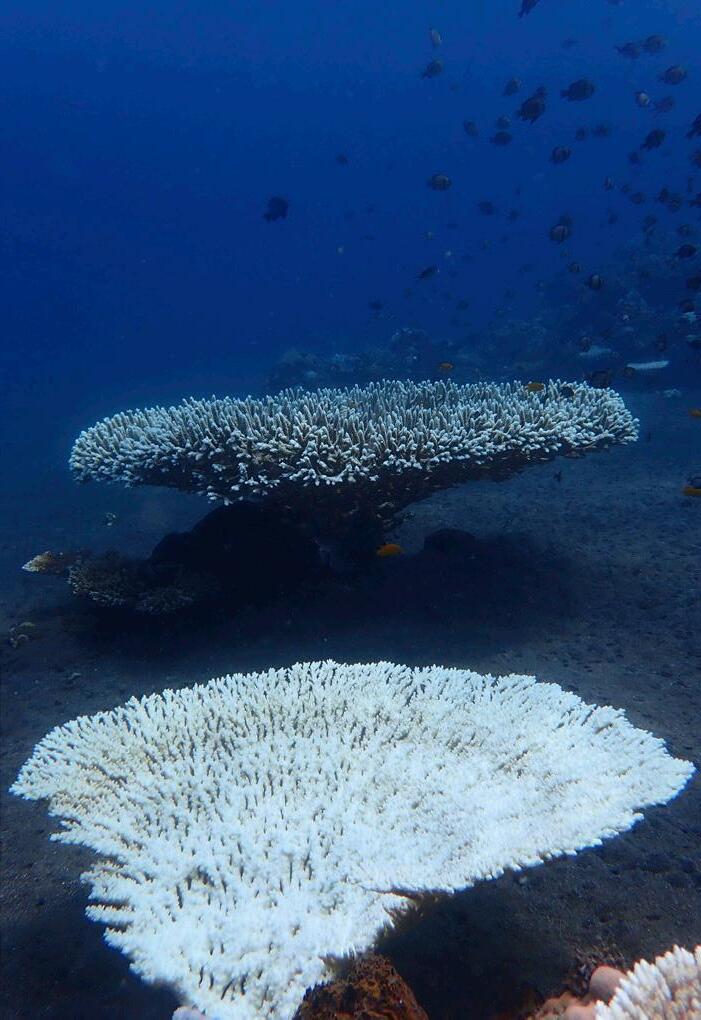
bleaching monitoring surveys, based on the Reef Check standard survey methodology. We have reports of up to 20% bleaching in some areas.” – Julian Hyde, CEO
Reef Check Indonesia: “This bleaching season is unique and of course, the worst has already taken place in November –December 2023. These months are known as the rainy season in Indonesia’s archipelago, but bleaching occurs. Based on network reports, in November – December, bleaching took place in Karimunjawa Island, North Sulawesi, Bali, West and East of Nusa Tenggara, Raja Ampat, and several other places in Indonesia.
Reef Check Indonesia works closely with the Ministry of Marine Affairs and Fisheries, through the Director of Ecosystem and Aquatic Biota Conservation, to provide monitoring advice to the network so that coral bleaching monitoring can be monitored effectively and efficiently.
Now, we are preparing to release the previous bleaching report (November 2023 – January 2024) and monitoring advice for a bleaching alert in the middle of 2024 (June – July). We hope that bleaching does not occur, but if it takes place, we are ready.” – Derta Prabuning, Executive Director

22 DIVERS FOR THE ENVIRONMENT | JUNE 2024 REEF CHECK
NOT JUST CORAL:
REEF CHECK MALAYSIA BROADENS SCOPE
BY REEF CHECK MALAYSIA


In conjunction with Earth Day, Reef Check Malaysia was thrilled to announce that after 16 years of coral reef conservation, we’re making waves with a major pivot! Introducing the evolution of Reef Check Malaysia (RCM), as we broaden our scope to protect all marine ecosystems.
RCM is now a ‘marine ecosystems conservation’ organisation as we shift our focus to include seagrass and mangrove ecosystems, deepening our collective understanding of environmental interconnectedness. Here is our new mission and vision: Our CEO, Julian Hyde, explains more about our pivot in focus here.
CORAL BLEACHING
Coral bleaching occurrences have become more frequent and severe in recent decades, posing a significant threat to coral reef ecosystems around the world. The loss of coral reefs has surpassed the ecological, economic, and social consequences threshold, as coral reefs are the world’s most diverse marine ecosystems, in addition to providing coastal protection, supporting fisheries, and contributing to tourism.
NOAA’s Coral Reef Watch is showing the predicted mass coral bleaching happening this year. Our Reef Check Malaysia teams at various locations are also actively monitoring for coral bleaching and have activated RCM’s Coral Bleaching Response Plan, having received a warning from NOAA.
We welcome the public to help us monitor the health of Malaysia’s coral reefs. If you’re in Malaysia and have seen any bleaching corals, you can report your observations to us at https://bit.ly/rcmbleachingreport or by scanning the QR code. We can work together towards the preservation and recovery of our coral reefs.
LOCAL MARINE CONSERVATION GROUPS MEET
A few weeks ago, RCM organised a trip for the members of the Redang Marine Conservation Group (RMCG). Led by our colleagues from

to Tioman Island,
The RMCG team spent four days on Tioman, learning and sharing experiences with the TMCG team on various marine conservation efforts and issues. They also had the opportunity to conduct marine biodiversity monitoring as well as visiting “Rumah Hijau” where all the recycling activities on the island are conducted. RCM has been working to send our colleagues on the ground from one location to another, in an effort to help them learn and understand each other’s work better and gain necessary insights that will help them serve their community better.
WASTE MANAGEMENT & RECYCLING PROGRAMME
Since its introduction about three years ago, the local islanders of Mantanani have been exposed to waste management and its benefits. Recently, our colleague on the island organised a community engagement session focusing on waste management, attended by close to 100 islanders. We discussed the challenges faced by the efforts, and also updated them regarding the current status and progress of the waste management programme. We also took the opportunity to award 80 households with a “Certificate of Excellence” for their full participation and compliance with the programme throughout 2023.
In an effort to extend the programme, our local waste management team on Mantanani embarked on a trial to compost daily collected waste. On the first day, the team successfully processed more than 80kg of food waste which will be composted. This extension was tested as a bid to reduce the amount of food waste that is collected by the local team every day. We hope that in the near future, composting will be a regular activity adopted by the local community.
Meanwhile in the Mersing group of islands, the recycling programme in Pulau Tinggi has successfully collected over 100kg of recyclable

materials, including plastic bottles, metal and aluminium tins, and glass bottles. Since its inception in August 2023, the programme has received overwhelming support and participation from the island community members. Additionally, tourism operators on the island have expressed interest to collaborate in this initiative, further enhancing waste management efforts on the island. This year, we plan to extend the recycling programme to Pulau Aur and Pemanggil. We hope that by sharing the outcomes and progress achieved through the recycling programmes in Pulau Sibu and Pulau Tinggi with other island communities, the initiatives will also be accepted across the Mersing islands.
MOORING BUOYS INSTALLATION
Our colleagues in Semporna, together with representatives from Jeti Pelancong Semporna, the Semporna Professional Divers Association – SPDA, Semporna District Office, youth leaders from the Larapan Marine Conservation Groups, and Pulau Sipadan Resorts & Tours, deployed four mooring buoys at Timba Island. These sites are famous with tourists, who come over for snorkelling or diving. Recognising the possible damage caused by anchor impact, the installation was done promptly to solve the problem and to promote the use of mooring buoys at other sites too. Each of the buoys are able to accommodate 3 to 5 boats at a time, as they are supported by sinkers made from metal drums filled with cement.
In the Mersing group of islands, we have successfully installed an additional eight mooring buoys at various snorkelling sites. This activity was conducted in collaboration with Mersing District Council, the local island community, and boat operators. The installation of mooring buoys offers a more environmentally friendly alternative compared to the usage of anchors which can be damaging to marine habitats such as coral reefs, seagrass beds and other underwater ecosystems. Additionally, the mooring buoys also help to facilitate safe boat operations and island-hopping activities around coral reef areas on the islands.
23 JUNE 2024 | DIVERS FOR THE ENVIRONMENT REEF CHECK
Redang Island, they paid a visit
to meet our RCM colleagues and the Tioman Marine Conservation Group (TMCG) team!
EMPOWERING MOZAMBIQUE’S MARINE CONSERVATIONISTS: A DIVE INTO THE REEF CHECK PROGRAMME
BY MAPUTO DIVE CENTRE


In the heart of Mozambique, a transformative journey unfolds as aspiring marine conservationists dive into the depths of the ocean, not just to explore its wonders but to emerge as guardians of its future. Maputo Dive Centre (known as “Centro de Mergulho de Maputo” in Portuguese), Mozambique’s pioneering dive centre, has become a beacon of hope and empowerment, guiding individuals from diverse backgrounds on a path to scientific diving and marine conservation. Last month, they celebrated a significant milestone, with the graduation of 9 university students, including 5 from Universidade Pedagógica, 3 from Universidade Eduardo Mondlane, and 1 independent learner.
Evander Nhaule: Evander is a graduate in languages and international relations. He found his calling in the ocean’s embrace. “I found my vocation in diving thanks to unexpectedly seeing whales in my vicinity,” Evander sharing his journey from being an ocean enthusiast to a scientific diver is a testament to the transformative power of the Reef Check programme. “I was happy when they announced the scientific diving course because I never wanted to see the ocean as a ‘recreational tourist’ but rather with scientific eyes that enable me to understand what I’m really seeing before me. This course can take on leadership roles that support marine conservation actions and develop the Blue Economy, which is what I propose to do.”
Esperança Bila: Esperança is a final-year student in biology teaching and laboratory management from Maputo’s Universidade Pedagógica, and echoes Evander’s sentiment. Her motivation stems from her background in conservation biology, her involvement in seagrass research and a deep understanding of the marine ecosystem’s complexity. “The diving course has given a significant boost to my skills as a biologist,” Esperança states. Her experience in the Reef Check programme has been nothing short of incredible, “Diving is a passion. During the training, I was
able to acquire knowledge and scientific methodologies focused on constructing questions that should be investigated. This is the essence of the scientific journey, where generated answers can be rigorously tested and validated. In scientific diving, the experience transcends merely observing the captivating beauty and vastness of the underwater world. It involves systematically gathering data to address scientific inquiries.”
Both Evander and Esperança highlight the programme’s impact on their personal and professional growth. For Evander, it’s about “increasing my necessary experience to gain recognition in my monitoring capabilities.” Esperança sees her future in contributing to marine biodiversity conservation. Their journeys through underwater data collection and analysis, identification of indicator species, and an entry-level in the coral reef monitoring programme marks the beginning of a promising career in marine conservation.
But for most of the students, this was more than just a scientific diving course. They completed a much longer journey that began years ago when they learned to swim and dive recreationally before becoming scientific divers. It is a step forward in Maputo Dive Centre’s mission to develop the next generation of marine conservationists, researchers, and conservation area managers in Mozambique.
There is an urgent mission for coral reef conservation in Mozambique and the recent approval of the national strategy for the management and conservation of coral reefs underscores the urgency of this mission. Mozambique has over 2,500km of coastline but lacks research and monitoring capacity for Marine Protected Areas. Swimming, snorkelling, and diving are fundamental skills needed.
This first group of graduates will be crucial in helping to achieve the goals set out in the national strategy, but this cannot be a one-time exercise. Continuous training is needed to build

an adequate workforce. With this in mind, and learning from the experience of the graduates, Maputo Dive Centre conceptualised the Zero to Hero Diving Programme to develop local capacity for the research and monitoring of the coral reefs.
ZERO TO HERO DIVING PROGRAMME
Scaling scientific diving with the Reef Check programme and the Zero to Hero Diving Programme, will be an annual project of 9 to 12 months. They will take participants with zero underwater skills and teach them to swim, snorkel, and dive, including scientific diving methods through the Reef Check programme. It is the replication of the experience that last month’s graduates had, in a single structured course. The goal is to continue bridging the gap between education and employment, complementing university theory with the introduction of practical knowledge and skills to work comfortably and safely underwater.
We extend our sincere gratitude to Reef Check, Associação Natura Moçambique, the Italian Agency for development cooperation, and all individual donors for their support in funding the courses to date. We also thank Universidade Pedagógica for their participation in these trainings with their students, Maputo National Park where the training was conducted, and Dr Yara Tibiriçá for writing and teaching the scientific diving curriculum, and teaching the Reef Check curriculum. Your contributions have been fundamental in shaping the future of these graduates.
If you are interested in supporting our mission to build the future for marine conservationists, please get in touch. Let’s make the Zero to Hero Diving Programme a success together!
MAPUTO
DIVE CENTRE
www.instagram.com/centrodemergulhodemaputo info@cmm.co.mz
24 DIVERS FOR THE ENVIRONMENT | JUNE 2024 REEF CHECK
JOIN RED SEA DIVING SAFARI IN JULY FOR AN ECODIVER COURSE AND SURVEYS
BY STEPHAN MOLDZIO, REEF CHECK ECODIVER COURSE DIRECTOR
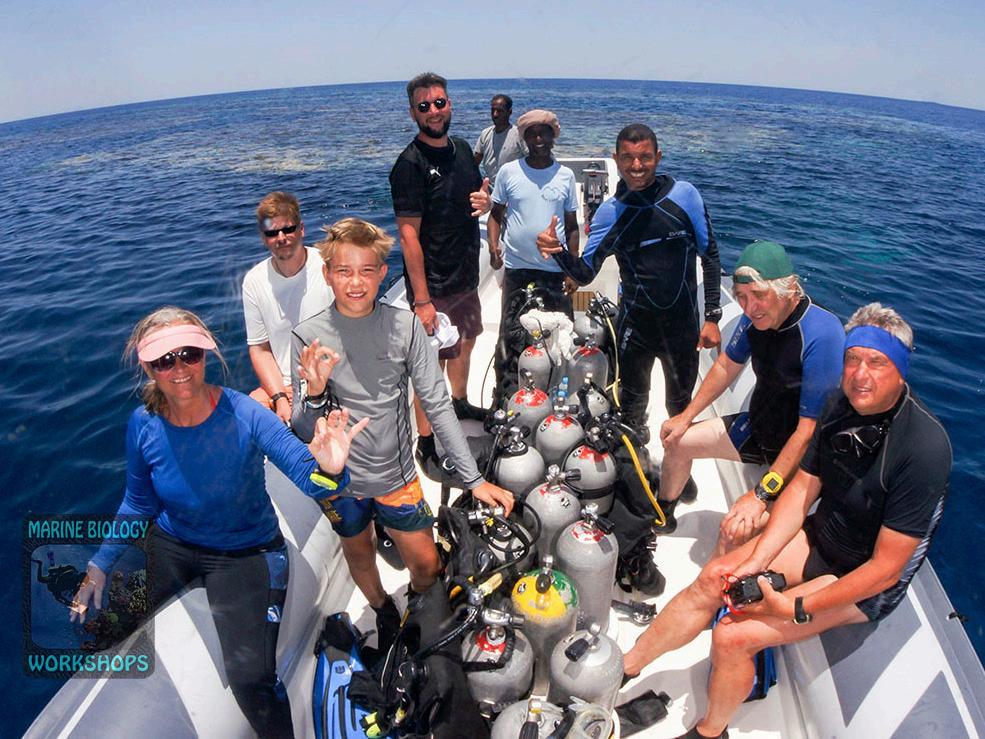
2023 marked the 15th year of Red Sea Diving Safari’s reef monitoring programme which took place in Marsa Shagra in July last year. We had six course participants and for the subsequent surveys, six certified EcoDivers joined us. As experienced Reef Checkers, they not only helped with the data collection, but also with laying out and collecting the two transect lines.
The Reef Check theory, survey sessions, and the practical dives alternated during the course. Participants first learned about the Reef Check method and the different indicator groups of fish, invertebrates & human impacts, as well as substrates (coral, algae, reef rock, sand, etc.). On each day of the course, we conducted two training dives on the reef to practice identifying indicators and using underwater hand signals. On the third day, the practical application of the Reef Check method was practiced on land along the transect line during a beach exercise.
Once all the participants had successfully completed the tests to identify the indicator organisms, they were certified as Reef Check EcoDivers. When it came time for the test survey on the final day, it was clear to all participants that it was time to get serious!
We had planned Reef Check surveys at five different reefs. With two 100m transect lines, we were able to set the transects for both depths simultaneously. The survey teams were also able to complete both depths in one dive, first at 8.5m and then at 3.5m.
About our results: The substrate team found an average hard coral cover of 49.5% across all five survey sites and both depths. Marsa Shagra North had the highest value with 65.0% at 3.5m depths, and 43.1% at 8.5m depths.
In this area, the reef slope is a little shallower and not so steep, so there is more light at the deeper levels and therefore more coral growth. For giant clams, the difference between the shallow and deeper levels was particularly evident. This is because giant clams also have symbiotic algae in their mantle lobes and therefore prefer light-flooded, shallow sloping reefs.
The only other invertebrates we found during our surveys were a few pencil urchins, banded coral shrimps and at Wadi Lahami, a large crown-of-thorns starfish (Acanthaster planci).
The ‘Invertebrate and Human Impacts team’ looked in all the caves and crevices during the surveys since most invertebrates hide during the day from their predators. During our night dives we found the full spectrum of invertebrates who had come out of their hiding places.
We found the most groupers larger than 30cm at Marsa Shagra North with 1.75 individuals per 500m³. Specimens smaller than 30cm are not counted in the Reef Check method. In addition to more than 30 years of consistent protection, the extraordinary width of the reef flat around Marsa Shagra
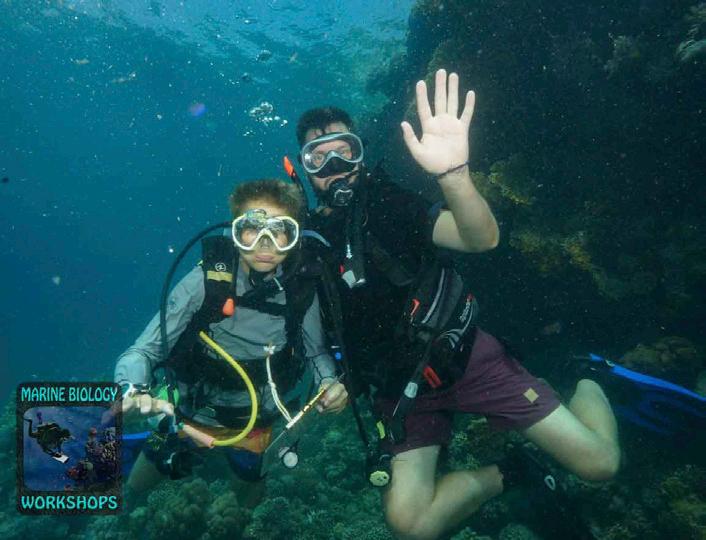

contributes to the abundance of fish and high species diversity.
After our last two surveys at Wadi Lahami House Reef, we were able to dive the fantastic reefs of the Fury Shoals. While the offshore reefs of Angel and Malahy boast epic reef formations, Daisy captivated us with its nutrient-rich conditions, abundance of fish, and lush coral growth. In addition to the more common species, these reefs are home to the rare hooded butterflyfish (Chaetodon larvatus) and the endemic Red Sea longnose filefish (Oxymonacanthus halli). Both species feed exclusively on coral polyps and are therefore dependent on areas of dense coral cover.
A big thank you goes out to Red Sea Diving Safari for all their support and great cooperation! The next Reef Check course will take place in Marsa Nakari, Egypt on the 18-21 of July 2024, with five subsequent surveys on the 22-25 of July. Spaces are available for both certified Reef Check EcoDivers, and divers who would like to be trained and certified as EcoDivers.
Are you interested in learning more about the diversity of coral reefs and taking part in reef surveys to collect scientific data? Send us an email at info@marinebiologyworkshops.de
25 JUNE 2024 | DIVERS FOR THE ENVIRONMENT REEF CHECK
MORE INFORMATION AT: www.greencorals.de/en/reef-check-2
AN EDA YOUTH PROGRAMME: BEACH CLEAN-UP ACTIVITY
EDA has launched its new Youth Programme dedicated to the younger members up to the age of 18. More activities will be introduced over time, but we invited our young members to register to their first Beach Clean-up to mark the occasion of Earth Day 2024 on Friday the 19th of April in Jumeirah 1 at the Mercato Beach alongside La Mer South.
Amongst the most common items collected at this beach were plastic bags, bottle caps, and cigarette butts which continue to stagger the numbers. 1,414 cigarette butts were collected and separated for Goumbook’s ‘Save the Butts – Waste to Value’ programme.
A total of 8kg was collected! A job well done by Isaac Al-Zu’bi, Sultan Abdulla Alblooshi, Mahmoud Abbasi, Gayatri Sri Samhita, Chanakya Sri Samardh, and Hasher Hassan Aljasmi.
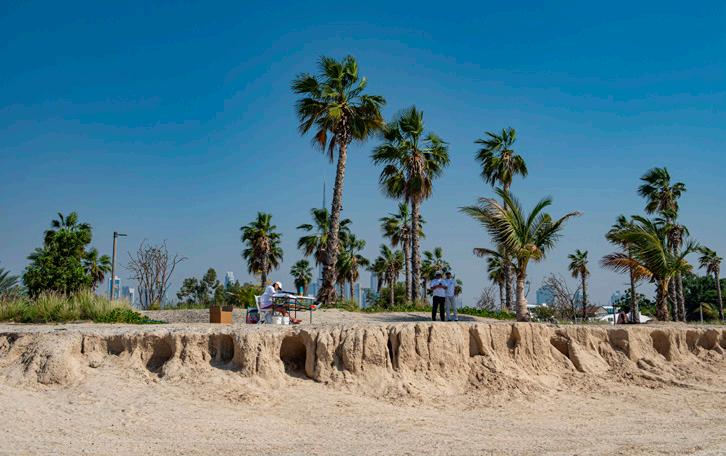








26 DIVERS FOR THE ENVIRONMENT | JUNE 2024 KIDS CORNER AN EDA YOUTH PROGRAMME: BEACH CLEAN-UP ACTIVITY Mercato Beach/La Mer South | 6 Youths MOST LIKELY TO FIND ITEMS TOTAL Grocery Bags (plastic) 35 Other Bags (plastic) 12 Beverage Bottles (plastic) 5 Beverage Cans 4 Bottle Caps (metal) 15 Bottle Caps (plastic) 67 Cigarette Butts 1,414 Cups, Plates (plastic) 3 Food Containers (plastic) 11 Food Wrappers (candy, chips, etc) 21 Lids (plastic) 3 Straws/Stirrers (plastic) 3 Utensils (plastic) 7 FISHING & BOATING Line, Nets, Traps, Rope, etc 5 PERSONAL HYGIENE Gloves & Masks (PPE) 1 ILLEGAL DUMPING Construction Materials 1 OTHER ITEMS/DEBRIS Electronic Waste (phones, batteries) 1 Tobacoo Products (lighters, wrap) 2 Toys 1 Other Plastic Waste 28 Other Waste (metal, paper, etc) 2 GRAND TOTAL OF ITEMS 1,641 TOTAL BAGS COLLECTED 1 TOTAL WEIGHT (KG) 8
A UNIQUE MESSAGE FROM THE BOTTOM OF THE SEA!
BY TISYA PANIGRAHI (13) – JUNIOR ADVANCED OPEN WATER DIVER
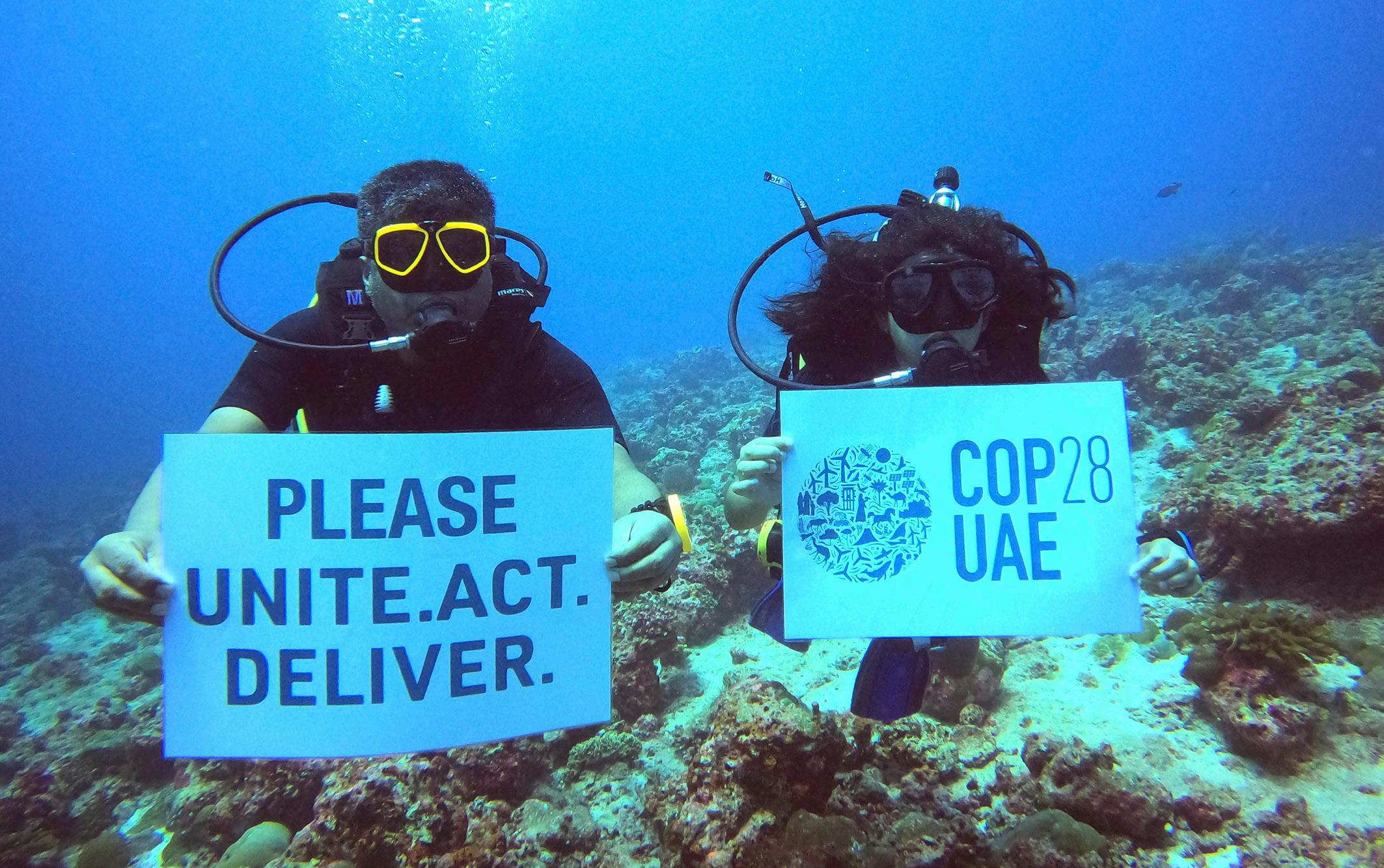
When I found out that COP28 was being held in Dubai at the time, I knew that I had to spread the word somehow. Since COP28 happened over the UAE’s National Day, we decided to do a dive to show how far the country has gone in environmental efforts.
In school we are well educated on the consequences of global warming on the planet. As a diver, I have the privilege to see marine life up close, but in the future, this may not be possible for the future generations to experience if we continue to abuse our planet’s resources.
We chose the Maldives for our dive location because it is the lowest point in the world, therefore at the current rate of global warming, almost 80% of the Maldives could become uninhabitable by 2050. As the ice caps melt, more water enters the ocean, leaving a higher risk for island countries to be submerged in water. Since COP28’s main purpose was to discuss ways to help the planet, we wanted to show what was at risk if we didn’t discuss these matters.
It would be a shame to lose such beautiful countries such as the Maldives due to our
carelessness. It would also be a shame for other generations to not get the opportunity to see such beautiful life underwater. We wanted to draw the attention of the conference attendees and remind them once again that they have to act fast, or else it will be too late for any kind of intervention. We've tried to do our part as divers to help people understand what they would lose and how we could prevent it by showcasing the beauty of underwater life as well as raising awareness about this event and how it could help the planet for the better.
Global warming leads to a warming ocean which causes thermal stress that contributes to coral bleaching. The colourful underwater coral reefs become white in colour due to bleaching. Diving in the Maldives, particularly around the reefs off Sun Siyam Olhuveli Resort has been magical for me as I got to see large marine life like sharks, reef mantas, eagle rays, turtles, etc. while enjoying thrilling drift dives fuelled by ocean currents.
Cocoa Corner, near Kandooma Thila, was the site where we captured the photo of us holding the COP28 signs. I did this dive with my father who is also an Advanced Open Water
diver. While I held COP28’s logo, my father carried our simple message of ‘Please Unite. Act. Deliver’ which was our way of calling for action. Maldivian national, Hassan Yaaniu who is a diving instructor with Sun Siyam Resort Olhuveli’s Diving School accompanied us to take our photo.
The water was crystal clear. When we entered the channel, I could see a little bit of the sandy bottom. Everywhere we turned we saw a school of fish or a big colony of corals combined with eagle rays cutting through the water, and sharks within an arm’s reach made it one of the most gorgeous sites I have dived.
I do hope our message reached the right ears and contributed in a small way to urge people to act quickly so that our planet can be saved!

27 JUNE 2024 | DIVERS FOR THE ENVIRONMENT
KIDS CORNER

GOPRO THE HERO12 BLACK
FEATURE AND PHOTOGRAPHY ALLY LANDES
The HERO12 with its full frame option has given me even more now that I don’t have to make the rational choice whether I need the shot in landscape or portrait to then find the opportunity has passed me by. Long live full frame!
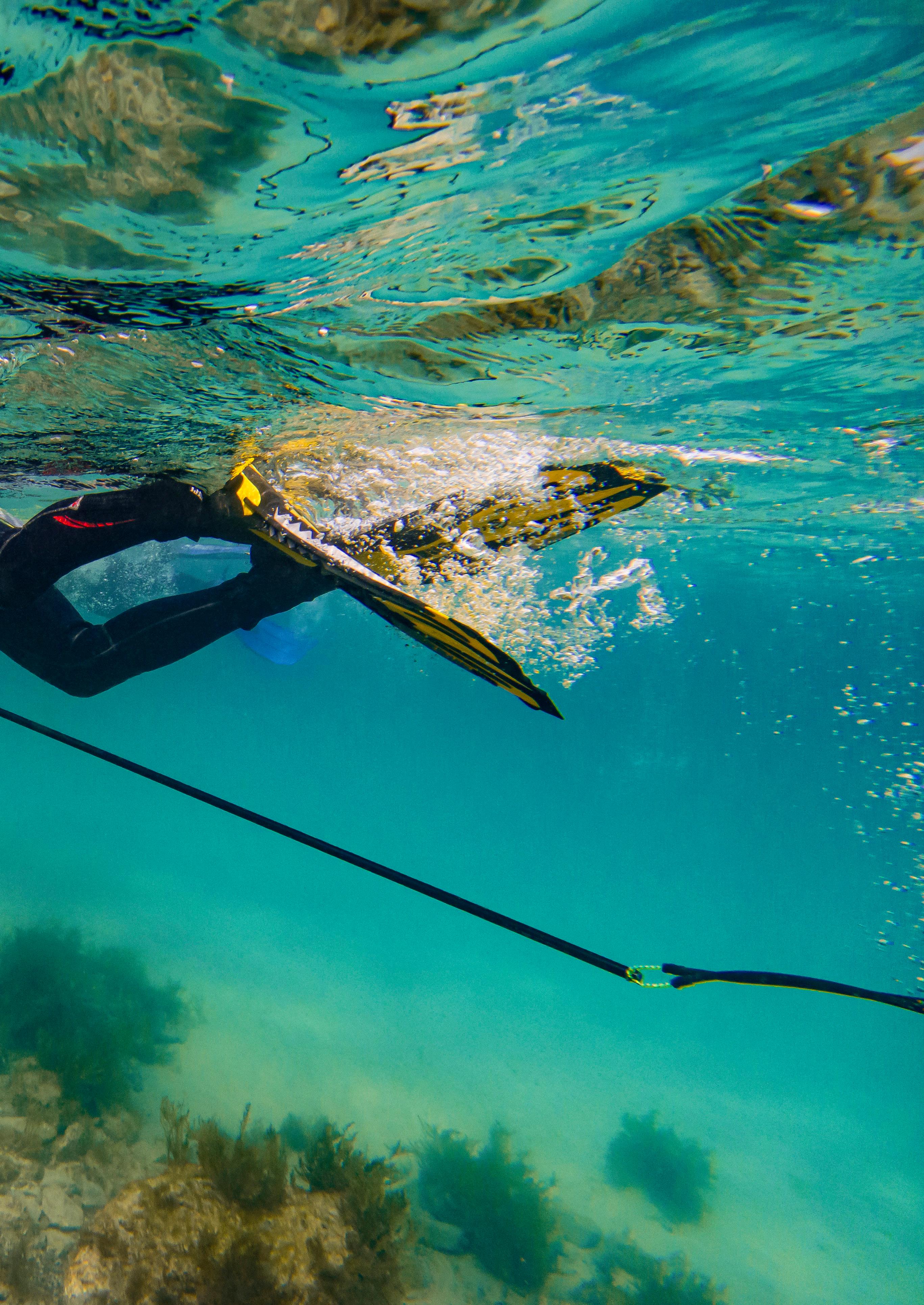


I made the overall switch to GoPros for all my underwater photography and videos back in 2013. I can honestly say, I haven’t looked back or changed my mind. I’ve just learnt to grow with them.
Gone are the days when I lugged around a heavy and cumbersome Ikelite housing for an old Sony video camera I recorded all my footage onto Hi8 tapes since 2004 – which travelled in a fashionably padded cooler bag. I also had my old Nikon D700 DSLR for my topside photography, an extra wide angle lens, extra Hi8 tapes, cables, and accessories in my backpack without the handy divider compartments I can no longer live without.
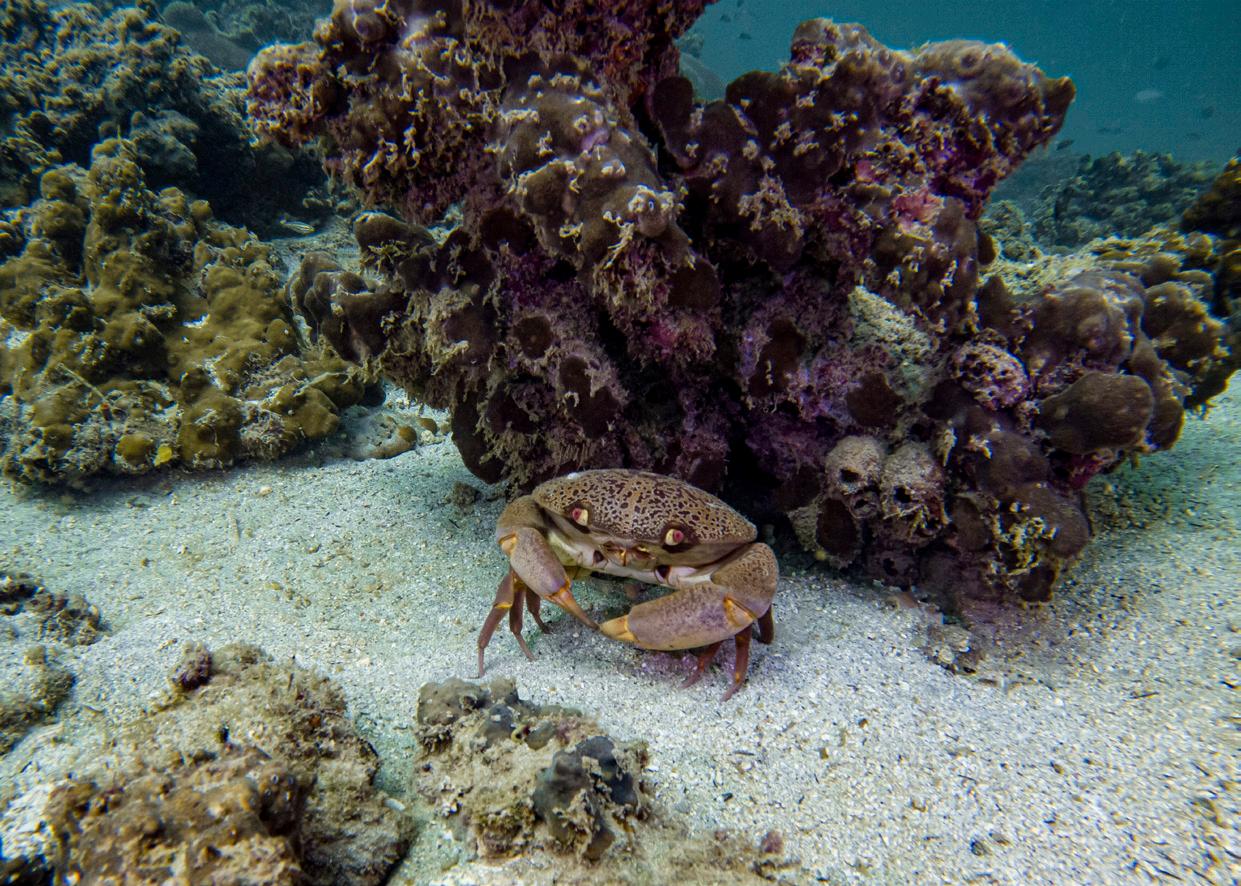
Travelling with all that weight, on top of my dive kit, sucked! That however seems like a lifetime ago now.
GoPros have come such a long way. It still amazes me what you can do with your stills and videos in post production from such a tiny, but mighty camera. I still heavily rely on my Nikon D750 for topside material, but I’ve been against buying a housing and strobes to take it underwater as I specifically eliminated the burden of extra weight on trips. And why not, when I can have, not 1, not 2, but 3 GoPros as backups, and ready for anything?
I also happily take my GoPro in my pocket
when I want to go out without the heavy backpack and extras for topside shots with my settings set in RAW wide angle. I can still get what I need for publication. If you need to manually change a setting, you have the power at your fingertips with your controls in Pro option. I edit my GoPro shots exactly the same way I would my DSLR’s RAW files.
My very first GoPro was the HERO3, which I admit, I didn’t love, but it was a damn sight better than my old Sony video recorder and its Hi8 tapes. Then I got the HERO5 Black, which I STILL have and use to this day with my Backscatter macro lens as it offers the narrow lens focal length which I prefer to linear. To
30 DIVERS FOR THE ENVIRONMENT | JUNE 2024 PRODUCT REVIEWS
be honest, I’m a little disappointed GoPro removed narrow from the new cameras. It does make a difference for macro.
I only wish RAW would become available for all focal lengths in future cameras, and not just in wide angle.
Then I had the HERO7 Black (which sadly flooded on a recent trip in Sri Lanka, thanks to an ill fitted O-ring). I very much like that the newer cameras are all rugged and waterproof to 10m without the Protective Housing which means there is a better chance of saving it if a leak does spring when in the housing. And then there’s my trusted HERO8 which stands in as my backup these days since my new HERO12 Black made an entry. And what a treat it has been!
With the new (to me) 8:7 aspect ratio (introduced in the HERO11) you can crop your photos and videos without any quality loss. The full frame is a game changer when you need taller, vertical crops for any social media platform.
The linear and horizontal lock option is a nice touch. Unlock it and tilt your GoPro sideways, if you want it to film in linear, but you can also crop that in the GoPro Quik app, or in post production in Adobe Premiere Pro which I prefer. It suits all user preferences.
I’m incredibly impressed with the video stabilisation in the HERO12! I’ve always had to run a stabilising effect over my underwater footage in my edits from my HERO8, but it never stabilised enough without some loss of quality. I’ve managed to put the 12 through some tests. It’s been on all my most recent dives, on a very bumpy mountain biking trip shook by rocks and gravel, on a choppy boat ride out at sea, and the images stand solid!
I always take two GoPros aligned side by side with my wide angle light setup from BigBlue. My HERO5 set in narrow field of view (FOV) for macro sits on my diving rig on my left, and my HERO12 set in wide angle sits on my right, both ready for whichever FOV is needed. Working in ocean conservation, my dual GoPro access has allowed me to get all the shots I need in one dive. The HERO12 with its full frame option has given me even more now that I don’t have to make the rational choice whether I need the shot in landscape or portrait to then find the opportunity has passed me by. Long live full frame!
A lot of fun can be had experimenting with the timelapse which includes TimeWarp, Star Trails, Light Painting and more. One I will be playing with when the weather cools back down and we will spend the cooler months in the UAE deserts. I’m looking at a whole load of projects coming up over the summer months where I will be spending the majority of my time, underwater.

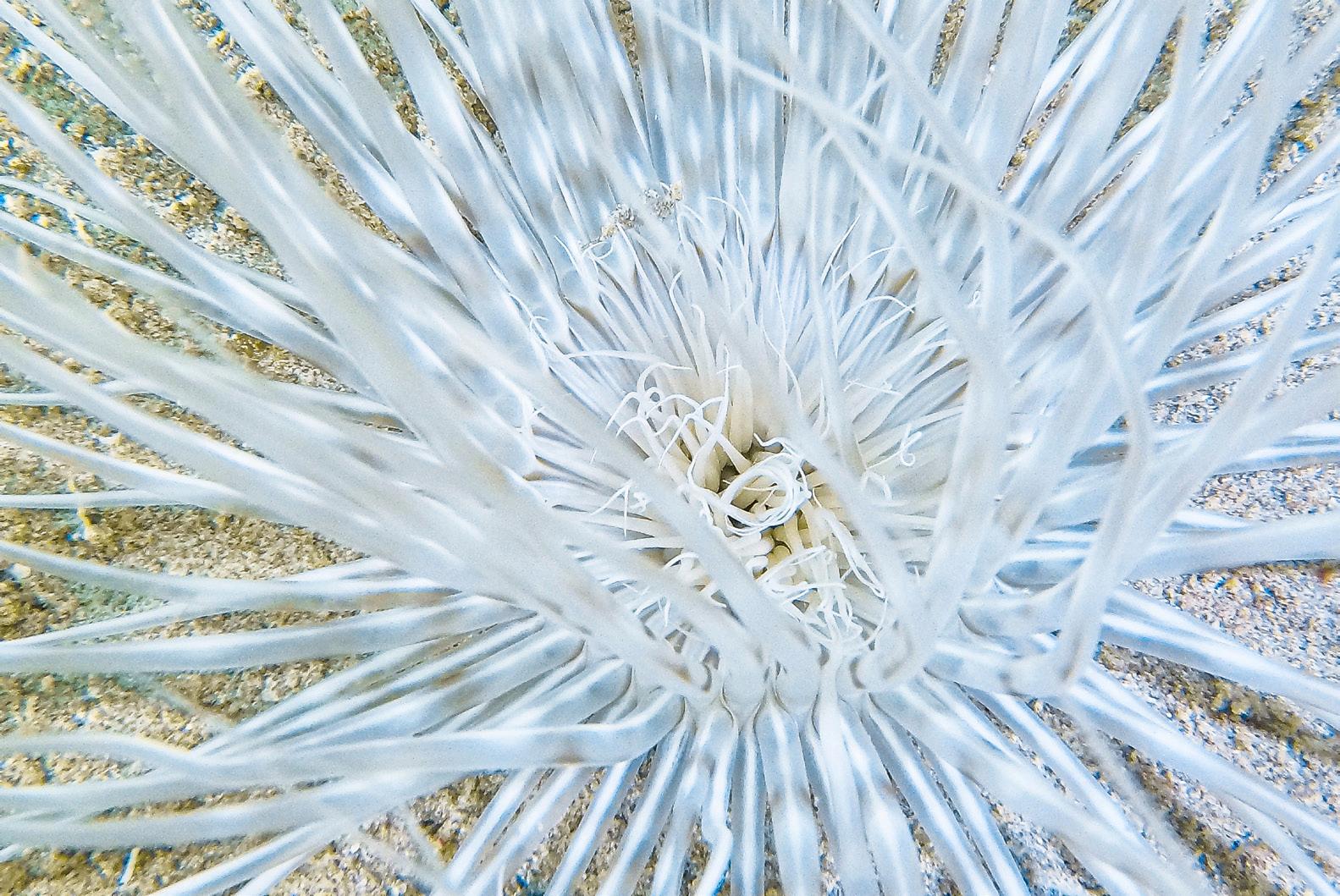

www.youtube.com/@AllyLandes www.instagram.com/allylandesphotography
FOLLOW GOPROME www.instagram.com/goprome

31 JUNE 2024 | DIVERS FOR THE ENVIRONMENT PRODUCT REVIEWS
GOPRO PHOTOS & VIDEOS All Things Underwater are Shot with GoPro HERO5, HERO7, HERO8 & HERO12
Macro shot, including seahorse below, taken with GoPro HERO5

BCG’S 2024 BEACH CLEAN-UP
FEATURE AND PHOTOGRAPHY ALLY LANDES
The team collected 9kg of rubbish in what was originally believed to be a clean beach. After an hour of scouring the sands, the small items of rubbish quickly surfaced.

FEATURES
The Boston Consulting Group (BCG in the Middle East) conducted their annual beach clean-up on the 1st of March with EDA as part of the Cleanup Arabia campaign, and their Community Service Day. This year’s activity was run on Sunrise Beach in Dubai and open to BCG family members.
The team collected 9kg of rubbish in what was originally believed to be a clean beach. After an hour of scouring the sands, the small items of rubbish quickly surfaced. The most alarming items collected were the 31 batteries left behind by the popup picnic companies that
are allowed to operate on the beach. The 505 zip ties are also a result of these popups, as well as the plastic and fabric flowers used for decoration which were counted under other plastic waste and other waste.
The results have been shared to the International Coastal Cleanup’s Ocean Conservancy database, and with Dubai Municipality who also came to collect the rubbish at the end of the activity.
The 1,349 cigarette butts were delivered to Goumbook for their ‘Save the Butts –Waste to Value’ programme which is the



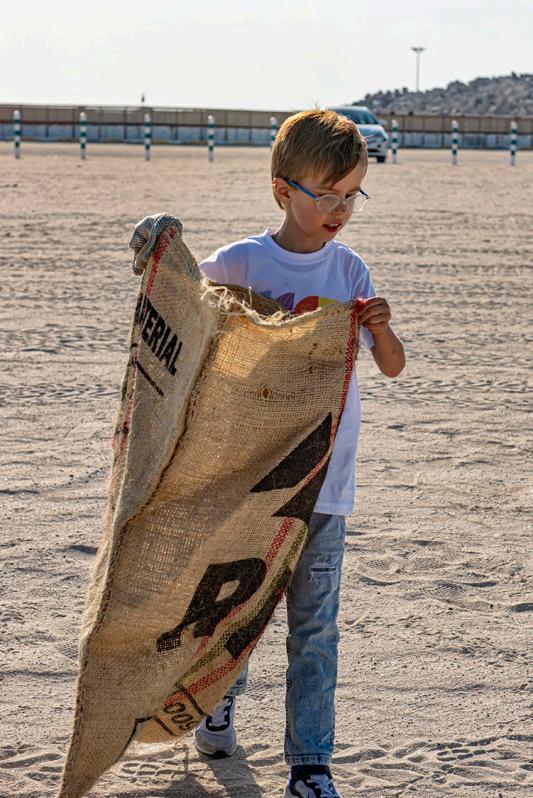
first sustainability initiative run in the UAE that adopts a Circular Economy approach to environmental pollution, by recycling cigarette butts into valuable manufacturing material.
According to The World Health Organisation (WHO) and its published report – Tobacco and its Environmental Impact: “Cigarette butts have consistently comprised 30-40% of all items picked up in annual international coastal and urban clean-ups since the 1980s”.
For more information on ‘Save the Butts’, go to: www.goumbook.com/save-the-butts



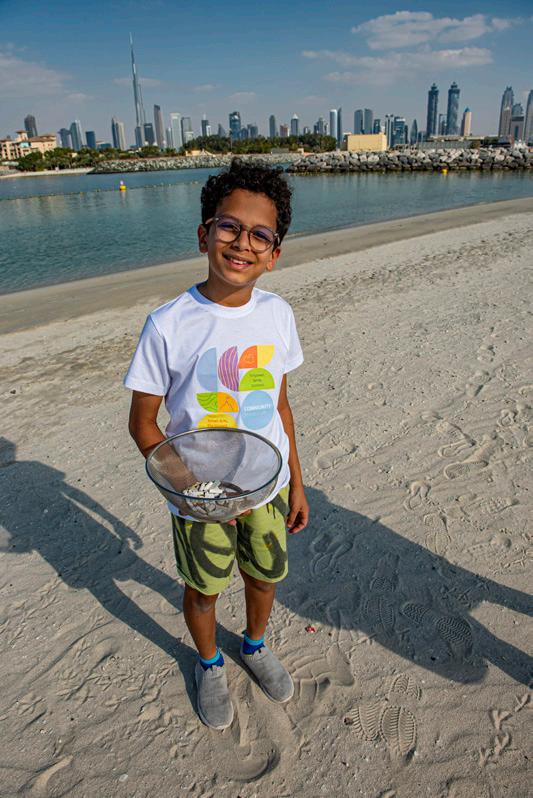
34 DIVERS FOR THE ENVIRONMENT | JUNE 2024







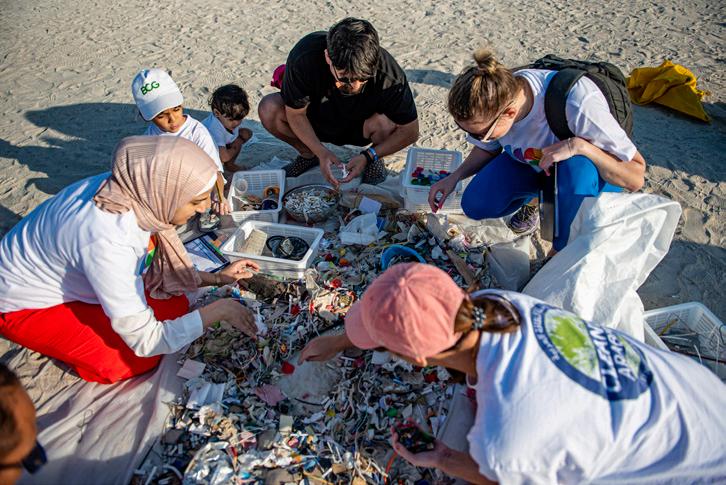



35 JUNE 2024 | DIVERS FOR THE ENVIRONMENT FEATURES BEACH CLEAN-UP | DUBAI Sunrise Beach | 22 Adults & 18 Youths MOST LIKELY TO FIND ITEMS TOTAL Grocery Bags (plastic) 8 Other Bags (plastic) 11 Beverage Bottles (glass) 3 Beverage Bottles (plastic) 4 Beverage Cans 2 Bottle Caps (metal) 30 Bottle Caps (plastic) 153 Cigarette Butts 1,349 Cups, Plates (paper) 9 Cups, Plates (plastic) 1 Food Containers (plastic) 8 Food Wrappers 73 Lids (plastic) 34 Straws/Stirrers (plastic) 76 Utensils (plastic) 10 FISHING & BOATING Line, nets, traps, rope, etc 64 PERSONAL HYGIENE Gloves & Masks (PPE) 3 OTHER ITEMS/DEBRIS Balloons 63 Tobacco Products (lighters, wrap) 1 Toys 7 Other Plastic Waste 154 Other Waste (metal, paper, etc) 368 TINY TRASH LESS THAN 2.5CM Plastic/Foam Pieces 1 OTHER ITEMS NOT LISTED AA & AAA Batteries 31 Zip Ties 505 Pliers 1 Super Glue Tubes 2 GRAND TOTAL OF ITEMS 2,971 TOTAL BAGS COLLECTED 1 TOTAL WEIGHT (KG) 9

STRATEGIC PARTNER: AN EVENT BY:
SECOND CLEANUP ARABIA
PCFC MARINA – UMM SUQUIEM 1 DIVE CLEAN-UP
FEATURE AND PHOTOGRAPHY ALLY LANDES
These clean-ups form part of a wider partnership between DP World and EDA, which will continue to see the two entities collaborate on a number of ocean conservation initiatives and educational activities throughout the year.



CLEAN-UP PARTNERS:

Emirates Diving Association (EDA) and DP World, in cooperation with the Ports, Customs and Free Zone Corporation (PCFC) joined forces for the second time this year, conducting a successful dive clean-up at the PCFC Marinas – Umm Suqueim 1 in Jumeirah 3 on Saturday the 27th of April.
15 adults and 6 youth divers, and 13 surface support volunteers from EDA and the Dubai Voluntary Diving Team (DVDT) gathered at the harbour for a morning of intensive cleanup efforts. Equipped with scuba gear and motivated by a common goal, the team set out to rid the opposite side of the marina of debris and waste that had not been cleaned
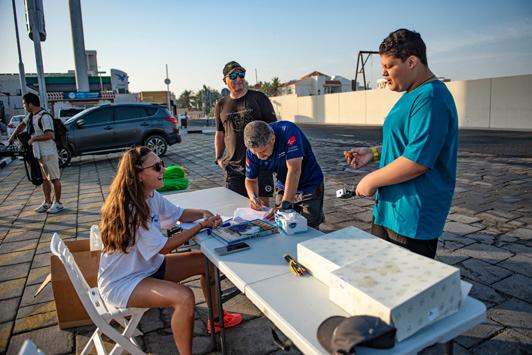
since the harbours existence. The dive teams had successfully cleaned the other end in the first quarter in February, that had first been cleaned in 2017.
These clean-ups form part of a wider partnership between DP World and EDA, which will continue to see the two entities collaborate on a number of ocean conservation initiatives and educational activities throughout the year.
In total, EDA and the DVDT dive teams removed an impressive 375kg of waste from only a short area of 150 metres of the harbour in the allocated time slot. There will be several


more clean-ups to run here in the third and fourth quarter as we tackle all the rest of the debris in this location. Amongst all the waste collected, the most common items collected continue to include large amounts of plastic and glass bottles, beverage cans, and fishing ropes and lines.
Once the waste was collected, it was counted and weighed, with the data submitted to the Ocean Conservancy, and to the Ports, Customs and Free Zone Corporation to contribute towards the monitoring of marine waste at a national and global level. A big thank you goes to Dubai Municipality for coming to collect and dispose of the waste.




38 DIVERS FOR THE ENVIRONMENT | JUNE 2024 FEATURES


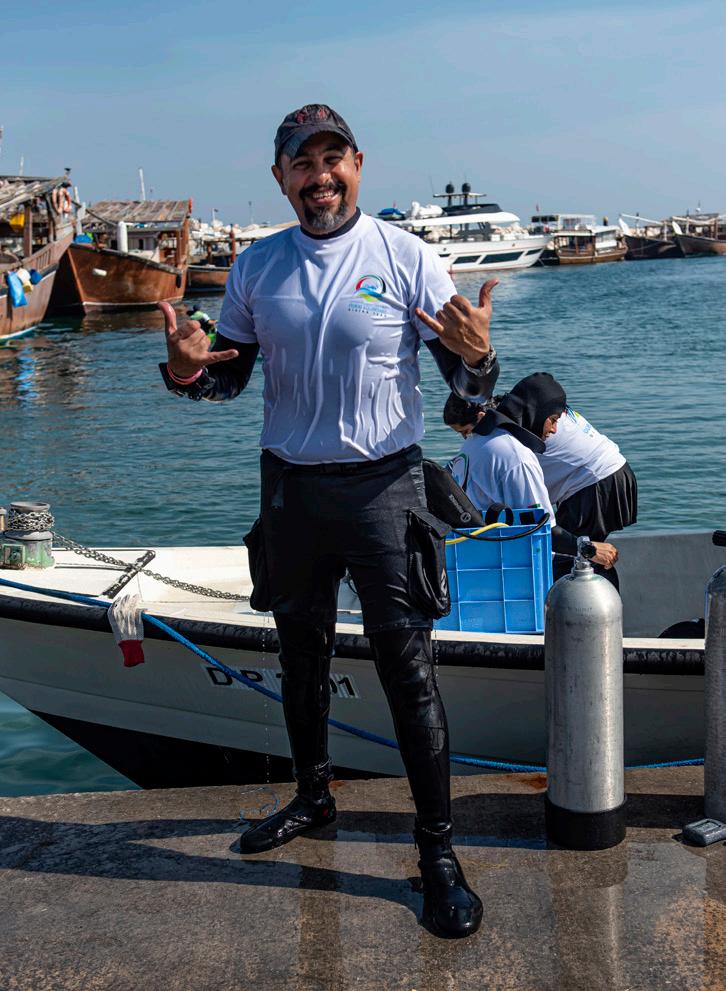


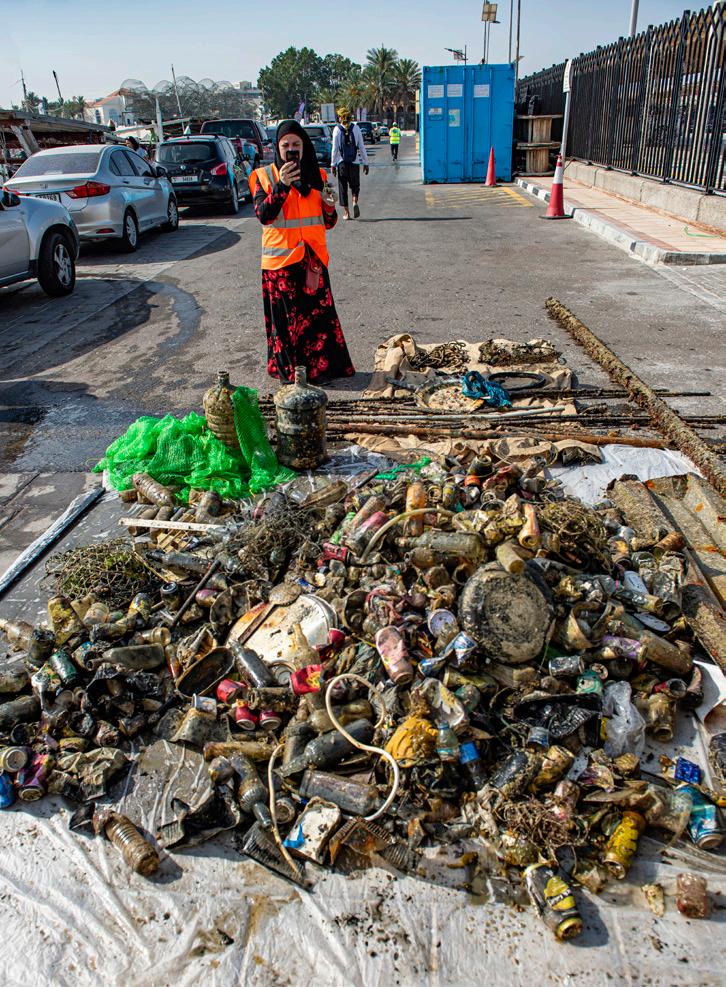

39 JUNE 2024 | DIVERS FOR THE ENVIRONMENT FEATURES MARINA DIVE CLEAN-UP | DUBAI PCFC Umm Suquiem 1 | 15 Adults, 6 Youths MOST LIKELY TO FIND ITEMS TOTAL Grocery Bags (plastic) 25 Beverage Bottles (glass) 230 Beverage Bottles (plastic) 253 Beverage Cans 427 Cups, Plates (plastic) 52 Food Containers (plastic) 21 Food Wrappers (candy, chips, etc) 4 Lids (plastic) 17 Utensils (plastic) 5 FISHING & BOATING Line, Nets, Traps, Rope, etc 52 Foam Dock Pieces 4 PACKAGING MATERIAL Other Plastic Bottles (oil, bleach, etc) 7 Strapping Bands 1 PERSONAL HYGIENE Gloves & Masks (PPE) 2 ILLEGAL DUMPING Appliances 1 Construction Materials 37 Tyres 1 OTHER ITEMS/DEBRIS Clothing 19 E-cigarettes 7 Electronic Waste (phones, batteries) 10 Footwear (shoes/slippers) 2 Tobacco Products (lighters, wrap) 1 Other Plastic Waste 132 Other Waste (metal, paper, etc) 65 OTHER ITEMS NOT LISTED Metal Cooking Spoons 2 Saucepan 1 Toothbrushes 3 PVC Banner 1 5 Gallon Water Bottles 2 Buckets 3 GRAND TOTAL OF ITEMS 1,387 TOTAL BAGS COLLECTED 28 TOTAL WEIGHT (KG) 375

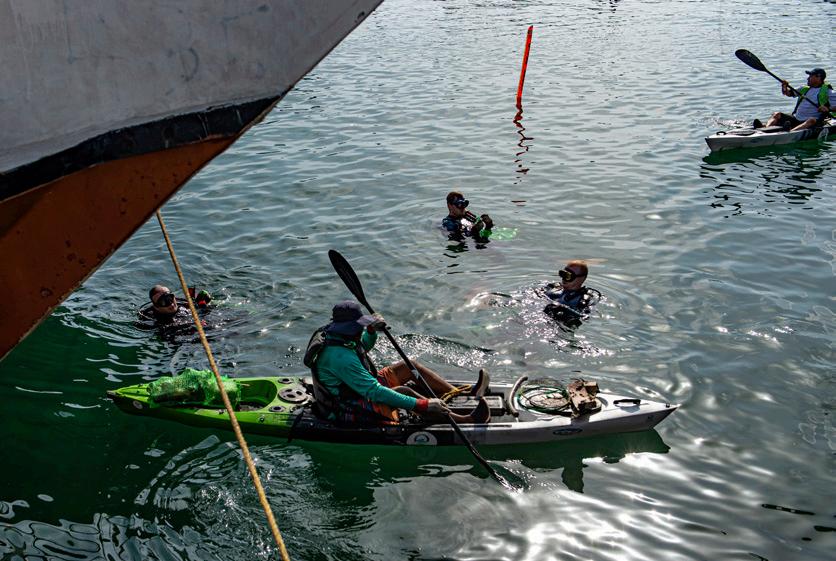













FEATURES


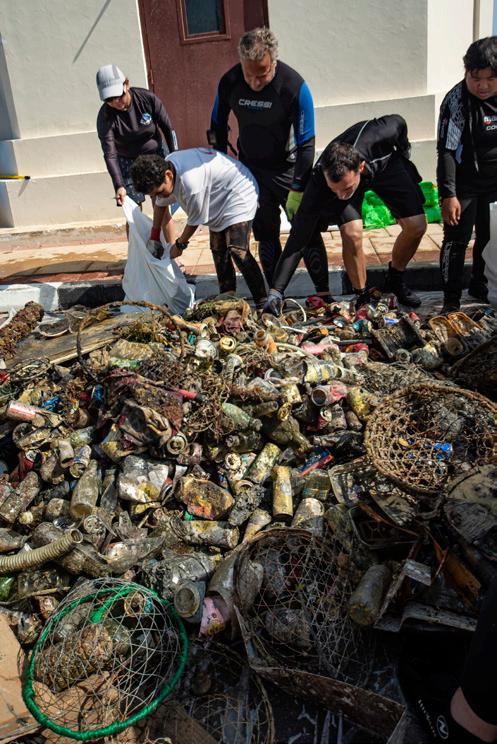

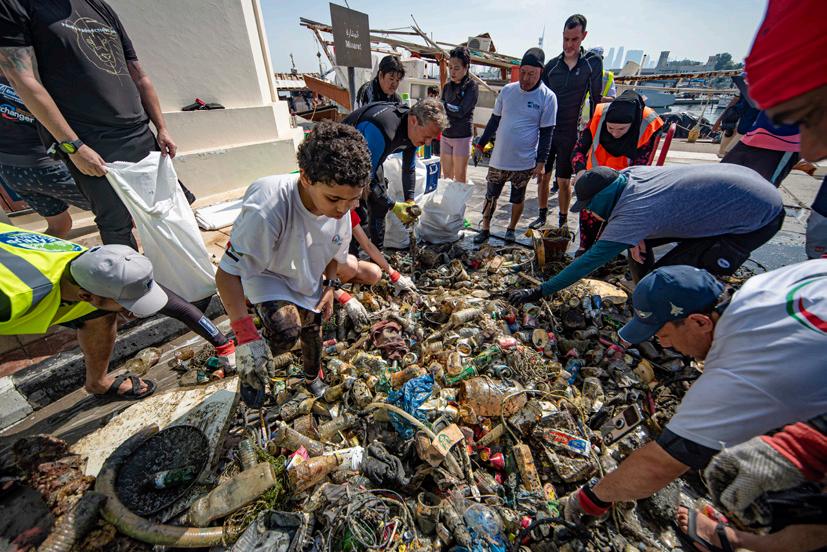





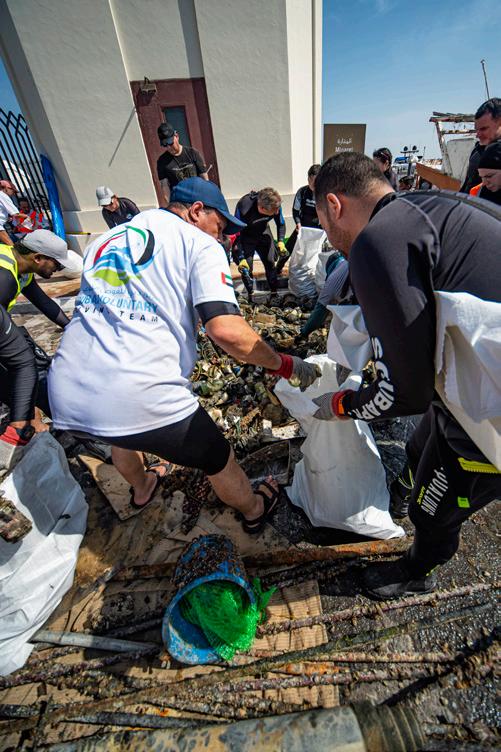

FEATURES

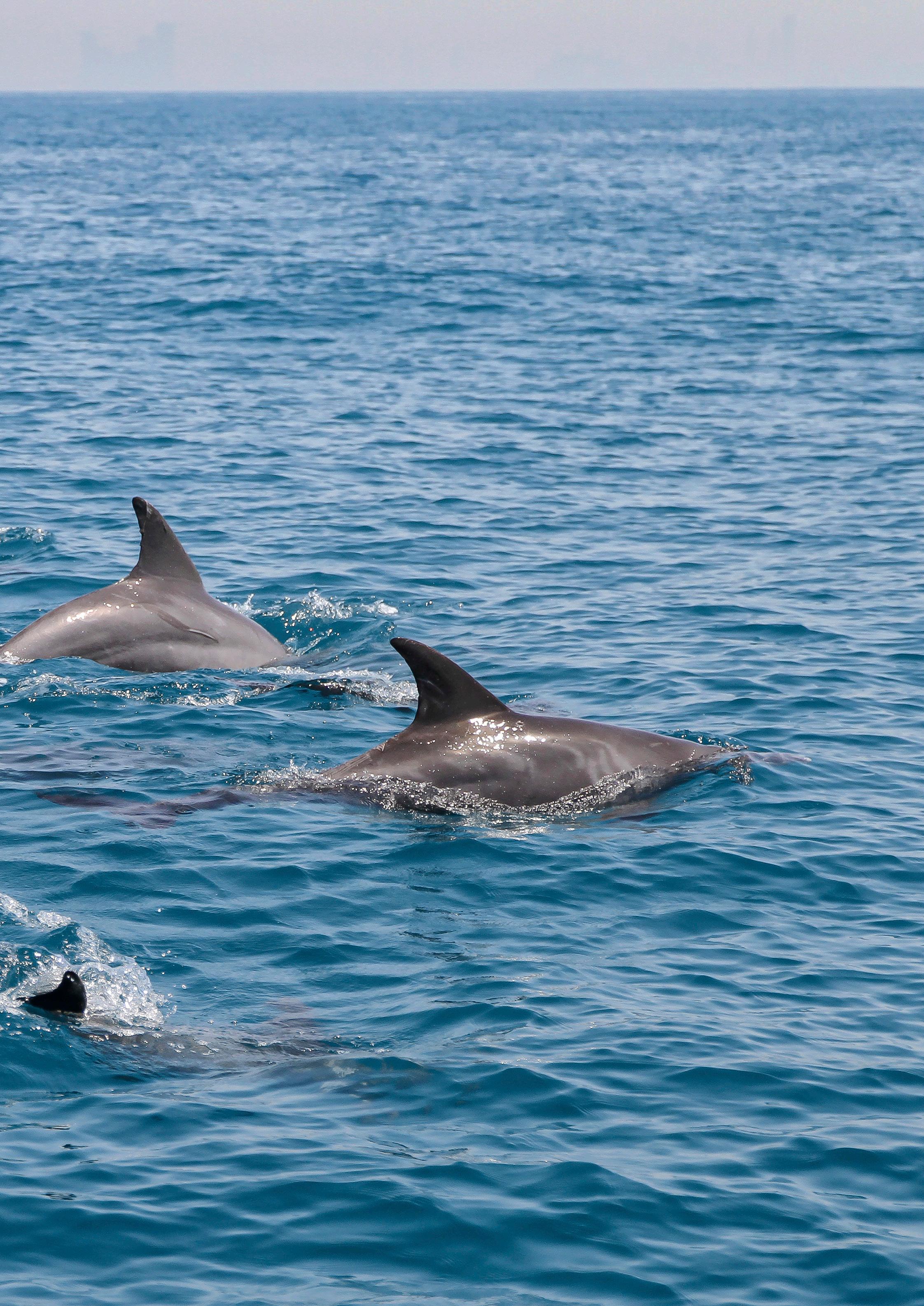
BRINGING BONES BACK TO LIFE:
HOW WHALE & DOLPHIN SPECIMENS CAN BECOME VITAL INFORMATION IN SUPPORTING THEIR CONSERVATION
FEATURE ADA NATOLI CONTRIBUTIONS HAMDA ALMOSAWI, CAITLIN MCFARLANE, BRYANA COPE
The Zayed University team visits the Oman Natural History Museum to shed light on the identity of the Gulf bottlenose dolphin population
Indo-Pacific bottlenose dolphins in Dubai waters are usually sighted in groups. The number can vary from a few, to over 70 individuals. Some individuals have been observed in Dubai waters since 2013.


Not many people can relate to the importance of recovering the carcass of a dead animal, except some scientists, generally considered pretty “nutty” by the rest of the world!
But from the careful analysis of a dead animal, there is a wealth of information that can be obtained. The scientific value is even higher in the case of wild species, that are difficult to observe, areas where little information about a species is available, or if the species is endangered. A good example of this is the case of whales, dolphins and porpoises. Boat based surveys to study them require considerable time and resources. It is risky and demanding to practice “catch and release” tagging and, unlike turtles, they do not come ashore at any stage of their life. They do occasionally wash ashore dead or alive, individually or in
groups, in what is generally referred to as “a stranding”. In the UAE we have recorded over 120 stranding events since 2006.
Many factors can result in strandings of whales, dolphins and porpoises (collectively called cetaceans) such as natural causes, old age, diseases, parasites, as well as human induced causes including boat or ship strikes, fishing gear entanglement, chemical pollution, noise pollution, including seismic surveys and underwater military exercises, climate change and extensive continuous disturbances that ultimately impact the animals’ health. The careful analysis of a deceased cetacean by trained personnel can shed light on the potential cause of death and help identify the threats in a specific region that can hamper the survival of the population. Different samples
can be collected to investigate life parameters otherwise impossible to determine by visual observation of living individuals. Even bone remains, particularly the skulls, can be a source of important information, and they can be preserved for a long time easily enough. The analysis of morphological characteristics can aid the assessment of population differentiation or even define different species.
Whales and dolphins are highly mobile species able to move across long distances in the open ocean, however not all species do. Some species of dolphins, especially those utilising diverse coastal waters, form small populations that tend to be resident in one area and adapt to the local environment. Adaptation to a specific environment can lead to accumulate morphological characteristics that
44 DIVERS FOR THE ENVIRONMENT | JUNE 2024 FEATURES
ABOVE: This is an example of photographic data collection from a skull by Hamda Almosawi. Over 400 pictures are taken from each skull at different angles to then reconstruct the 3D image using a dedicated computer programme. Once the 3D image is reconstructed, exact measurements can be taken. BELOW: An analogue precision caliper is used to take most of the measurements to the decimal of a millimetre. OPPOSITE PAGE: The number, shape and size of teeth are an important diagnostic factor that can aid the species identification. An Indo-Pacific bottlenose dolphin tooth count is usually between 22-24.

FEATURES

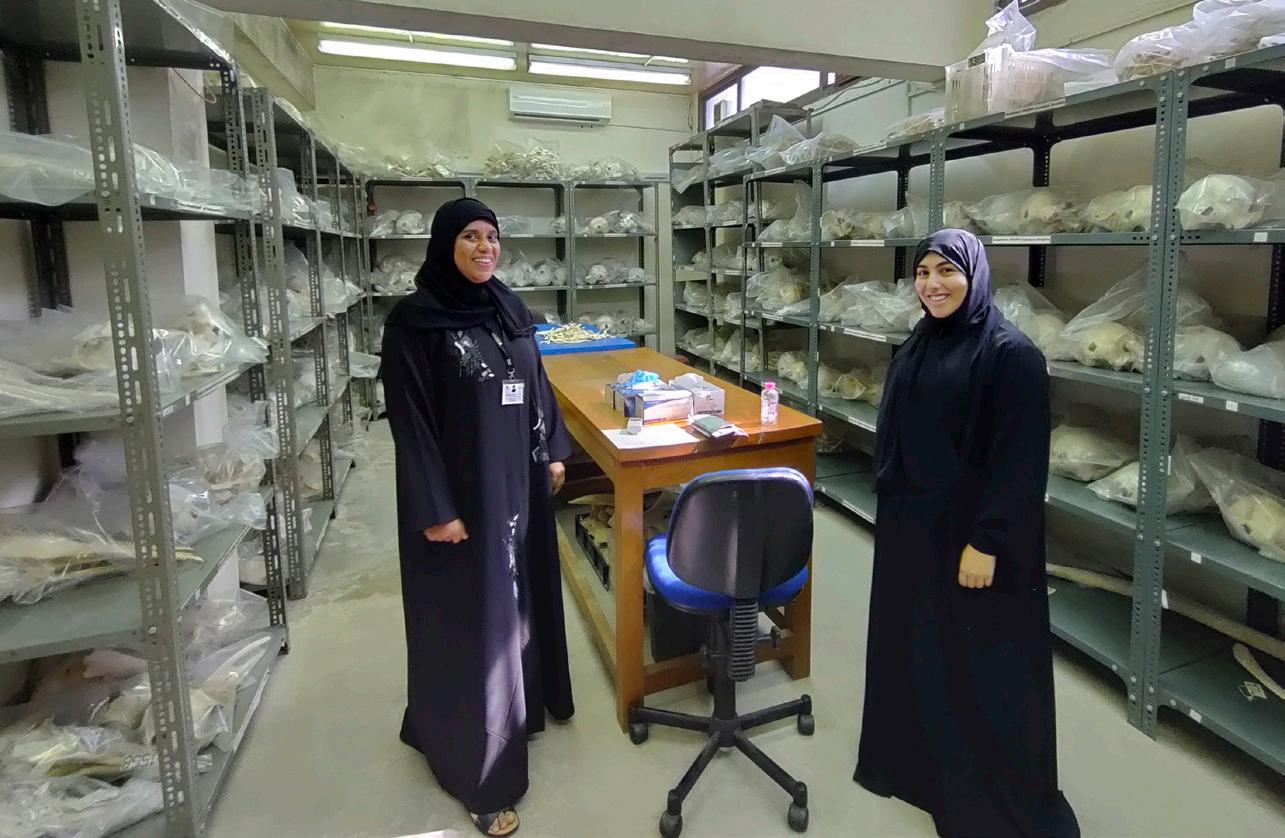

facilitate the survival of the individuals in that specific environment, ultimately determining population divergence that with time can result in what scientist define as “speciation”, or the appearance of a new species.
The bottlenose dolphin is one example. It occurs in all oceans world-wide, in both pelagic and coastal waters and is capable of movements across oceans of thousands of kilometres. Two species are commonly recognised, the common bottlenose dolphin (Tursiops truncatus) and the Indo-Pacific bottlenose dolphin (Tursiops aduncus). However, across most of its range, coastal resident populations rarely venture outside their home range, usually not wider than a few hundred kilometres. Some of these populations have diverged so drastically that they have recently been recognised as different species, such as the Tursiops erebennus that inhabits the estuarine regions along the Eastern North Atlantic, or as different subspecies, like the Tursiops truncatus gephyreus and Tursiops
truncatus ponticus, inhabiting a restricted coastal area in Brazil and Argentina, and the Black Sea respectively. These dolphins look different, but only a detailed examination of bone remains, in particular skulls, accompanied by DNA analysis enabled scientists to confirm such differences. What are the conservations implications? Essential! Understanding whether a population is differentiated from another, and by which degree, or whether it represents a different subspecies or species is a game changer in ensuring its protection. Small isolated groups of animals that occur only in a restricted area are more at risk of extinction, and therefore in need of dedicated actions to ensure their long term survival.
The bottlenose dolphins inhabiting the UAE Gulf coastal waters are recognised as IndoPacific bottlenose dolphin or Tursiops aduncus However, from recent genetic analyses of a wider sample of Indo-Pacific bottlenose dolphin from the northern Indian Ocean, including samples from Oman, Pakistan
and India, two different lineages emerged, but whether each of them is confined in a specific area is unclear. The presence of these two distinct lineages was also detected by morphometric analysis of bottlenose dolphin skulls collected in the region, but unfortunately none of these studies included specimens from the Arabian Gulf.
So, which type of bottlenose dolphins are in the Arabian Gulf? Is it different from those inhabiting the neighbouring waters of the Gulf of Oman, considering that the characteristics of the Gulf waters are so strikingly different from those of the contiguous ocean? And which lineage would it be? Or will it be a completely different one?
On this quest, a team from the UAE Dolphin Project Initiative, Zayed University, decided to analyse a small collection of bottlenose dolphins’ skulls recovered from strandings occurred along the UAE coastlines in the past years, with the target of comparing them with
46 DIVERS FOR THE ENVIRONMENT | JUNE 2024
FEATURES
TOP ROW: The whale and dolphin collection rooms at the Oman Natural History Museum with Hanan Mansoor Al Nabhani, head of the marine and terrestrial section, and Hamda Almosawi, research assistant at Zayed University. BELOW: Measuring skulls requires a suit of tools that enable the researchers to collect precise measurements of different magnitudes, some of them to the millimetre. Set of precision calipers, rulers, and squares.



those ones already analysed in the above study. Hamda Almosawi, a young Zayed University graduate, took on the challenge to learn all the different morphometric measurements utilised in the published study, contacted the authors for advice and started measuring.
Measuring a skull precisely, so that data can be compared across studies, is not an easy task! How to take those measurements is a job itself and it is a learning curve that takes dedication, determination and improves only with practice. About 45 different measurements had to be taken from each specimen, and to correctly measure each of them, one must learn how to find the exact location on the skull.
To enable us to compare the UAE skulls with those from Oman, the collection already measured by previous researchers, the only option was to calibrate our measurements on the same skulls the previous researchers measured. So, the team headed to the Oman Natural History Museum (ONHM) – Ministry of Heritage and Culture in Muscat, where part of the skulls previously measured are preserved. We decided to complement the standard morphometric measurements with a 3D geometric morphometric analysis in collaboration with researchers at the Museum and Institute of Zoology, Polish Academy of Sciences in Poland.This new technique enables researchers to create a 3D scan of an object from 2D images directly where the skulls are stored and without having an expensive CT scan. This technique, with the aid of computer
power, allows us to take more standardised measurements that can easily be compared across research groups.
We managed to complete all the calibrations and we fully scanned nine skulls from Oman. Now, back in the UAE we can apply this wealth of new knowledge to measure and scan the skulls from our coastline and compare them with the Omani ones and those from the rest of the world. Will they be different? Watch this space to find out!
Meanwhile, you can help! If you come across a dead whale or dolphin while walking along the beach, or you find bone remains, please call us at the UAE Dolphin Project Initiative (+971 56 671 7164) and contribute to increase the UAE collection of whale and dolphin specimens.The more skulls we can measure, the stronger the data. All the remains collected will eventually be housed at the Abu Dhabi Natural History Museum where they will safely be stored for the next generation of UAE scientists. We truly hope that our efforts will also contribute to the conservation of these charismatic species in UAE waters.
We are extremely grateful to Azzah Ahmed Al Jabri, Director of the Oman Natural History Museum, Muscat, Hanan Mansoor Al Nabhani, and to all the staff for accepting our request to visit the whale and dolphin collection and for their very kind support. A very special thanks also to Portofino Shipyard for providing us with a custom made caliper.
REPORT YOUR SIGHTINGS!
If you encounter a whale or dolphin, collecting information is extremely useful to us.
1. Take videos or photos (if you can). You are there in that moment so you become the scientist. Every image of any quality is better than nothing and will help experts to confirm the species. If you can take photographs and videos when you are on the side of whales or dolphins when fins are clearly visible, it can help scientists track the individuals, but please keep a safe distance!
2. CALL as soon as possible if you are witnessing a special sighting, or you encounter a dead animal so experts can hopefully reach the site and gather more information.
3. Take note of the date, time, and approximate location – if GPS is not available, a dot on google maps works great! Also report how many individuals you see.
4. You can send your data to us via: sightings@uaedolphinproject.org www.uaedolphinproject.org www.facebook.com/UAEDolphinProject www.instagram.com/uaedolphinproject +971 56 671 7164 +971 50 955 1742 or +971 56 671 7164
47 JUNE 2024 | DIVERS FOR THE ENVIRONMENT
ABOVE LEFT: Hamda Almosawi, research assistant at Zayed University uses the custom made caliper to measure the total skull length. RIGHT: Bone remains can be found on beaches either as remnants of an old unreported stranding or as they are washed ashore.They often go unnoticed as people think there is no value in reporting them.They are instead extremely important for scientists as a wealth of information can be obtained by careful analysis.
FEATURES


BATTLING THE CROWN-OF-THORNS
OUTBREAK ON THE UAE’S EAST COAST
FEATURE DR HENRIK STAHL, UNIVERSITY OF KHORFAKKAN PHOTOGRAPHY ALLY LANDES
The collection operation was a meticulous planned process, designed to minimise risk and ensure the safety of both the divers and the marine environment. During the day-long operation, a total of 119 CoTS were collected, studied, and safely removed from the affected dive sites.
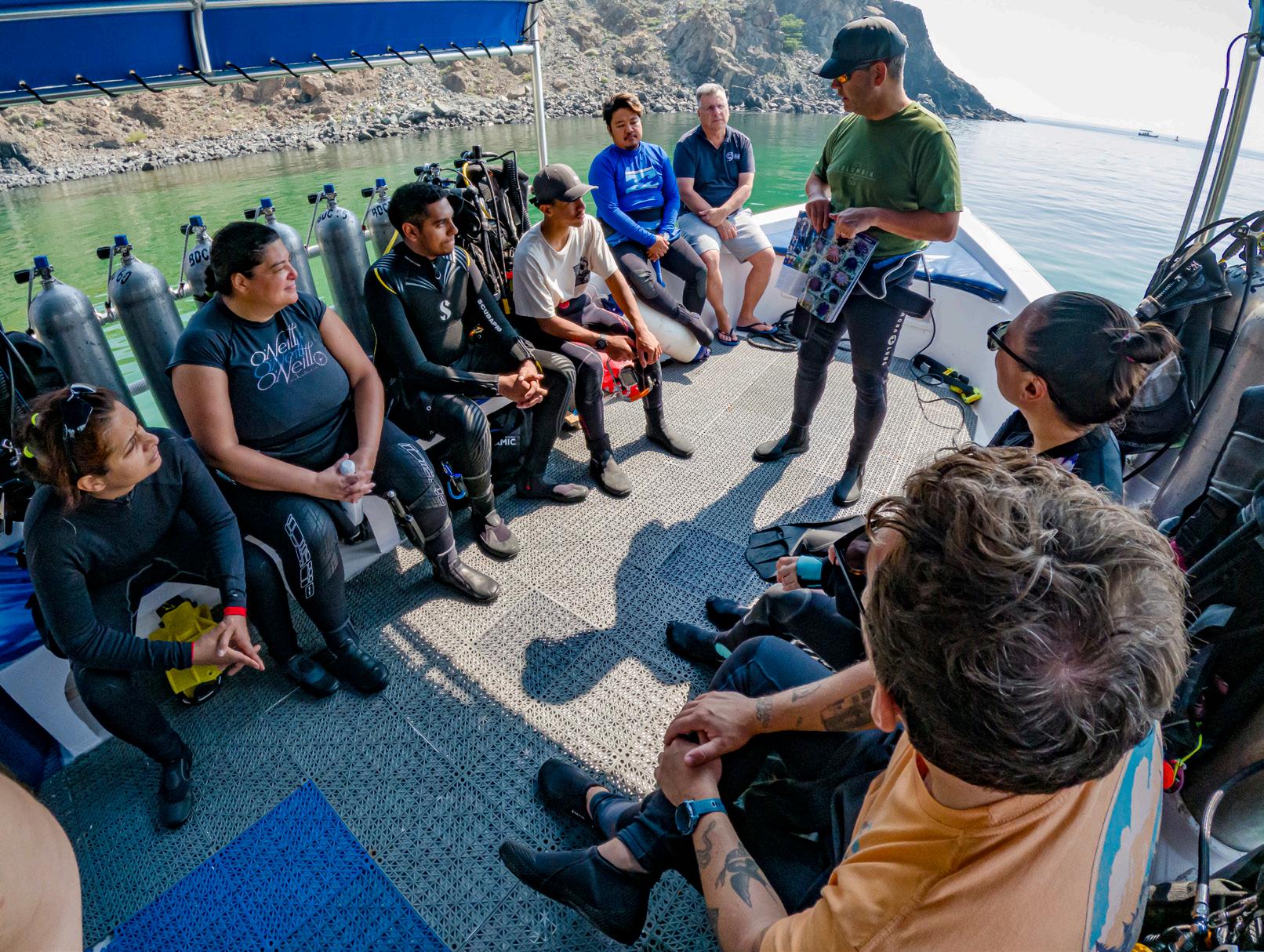

In the previous issue of the EDA Magazine, we brought to light the alarming outbreak of Crown-of-Thorns sea stars (CoTS) off the East Coast of the UAE, a situation potentially threatening the delicate coral ecosystems of this region. Two popular dive sites, Martini Bay and Hole-in-the-wall Bay, were found with high densities of these coral-devouring sea stars, leading to damage of the corals at these locations. In response to this urgent issue, a coordinated conservation effort was launched in late April this year, involving a dedicated team of divers and scientists.
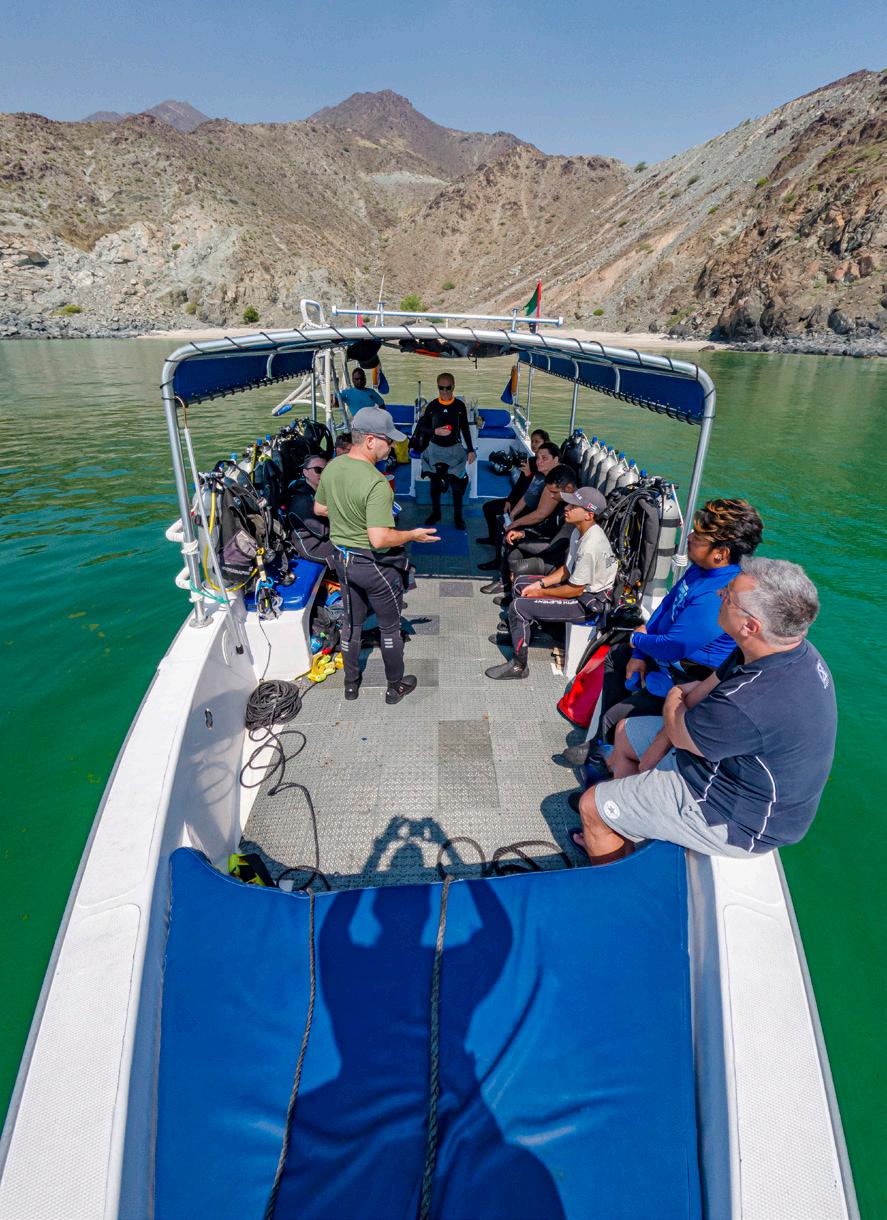


THE URGENT RESPONSE TO AN ECOLOGICAL THREAT
After confirming the outbreak of CoTS on two sites, swift action was required, and after receiving the necessary permissions from the relevant authorities, a collaborative team composed of divers from the Emirates Diving Association (EDA), the Dubai Voluntary Diving Team (DVDT), and scientists from the University of Khorfakkan (Sharjah, UAE) and the University of Milano-Biccoca (Italy), organised a mission to collect, study , and finally cull the CoTS from the two sites. The primary

goal was to mitigate the immediate threat to the coral reefs in the area and gather data for future preventive measures and increase our understanding of these corrailivorous sea stars.
THE COLLECTION EFFORT: PRECISION AND SAFETY FIRST
The collection operation was a meticulous planned process, designed to minimise risk and ensure the safety of both the divers and the marine environment. Four pairs of divers, equipped with gloves, sturdy bags, and tongs, undertook the task of collecting the CoTS.
50 DIVERS FOR THE ENVIRONMENT | JUNE 2024
FEATURES

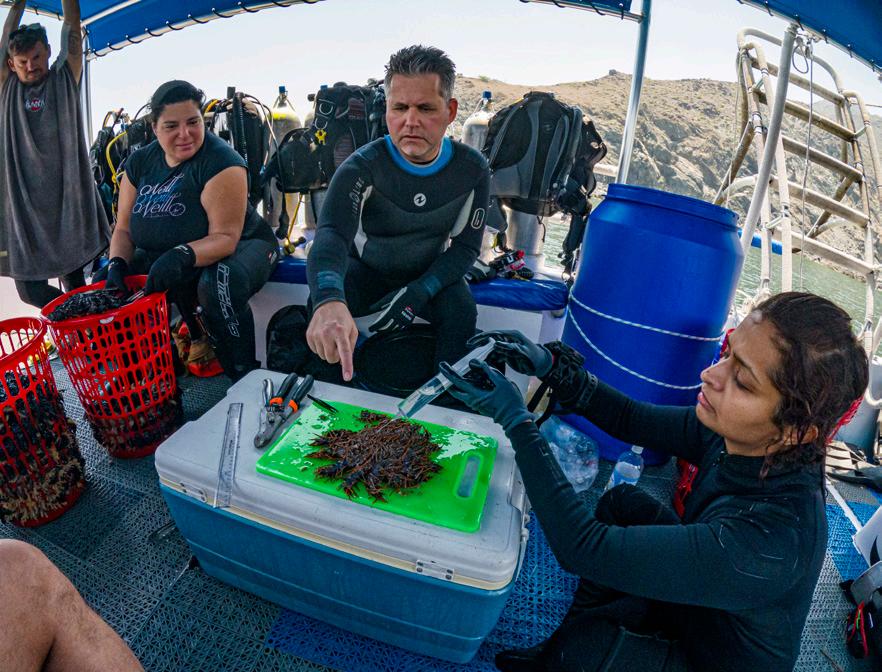

During the day-long operation, a total of 119 CoTS were collected, studied, and safely removed from the affected dive sites.
Given the venomous spines of the CoTS, which can cause severe pain or even anaphylactic shock in worst case scenarios, the divers exercised extreme caution during collection and handling.The CoTS spines are coated with a thin layer of venomous slime as a defence mechanism against predators. Although no stings have been recorded in the UAE to our knowledge, the potential risk necessitated


a careful and controlled collection process. Therefore, divers were trained to avoid direct contact with the sea stars, ensuring that no one was stung during the operation.
ONBOARD ANALYSIS AND CULLING OF THE COTS
Once the collected CoTS were brought onboard the dive boat, the team undertook the next critical steps. Each sea star was measured, and samples were collected for DNA analysis and molecular studies back in the laboratory. Notably, the collected CoTS
exhibited two distinct colour types: one black and electric blue, and another brown and purple. This visual variation prompted further investigation to determine whether these two colour types represent different species or simply variations within the same species.
To cull the sea stars, the team employed a method that has been scientifically proven effective in other parts of the world suffering from CoTS outbreaks, such as the Great Barrier Reef and the Maldives. Each CoTS was injected with 20ml of 5% household vinegar,
51 JUNE 2024 | DIVERS FOR THE ENVIRONMENT
FEATURES
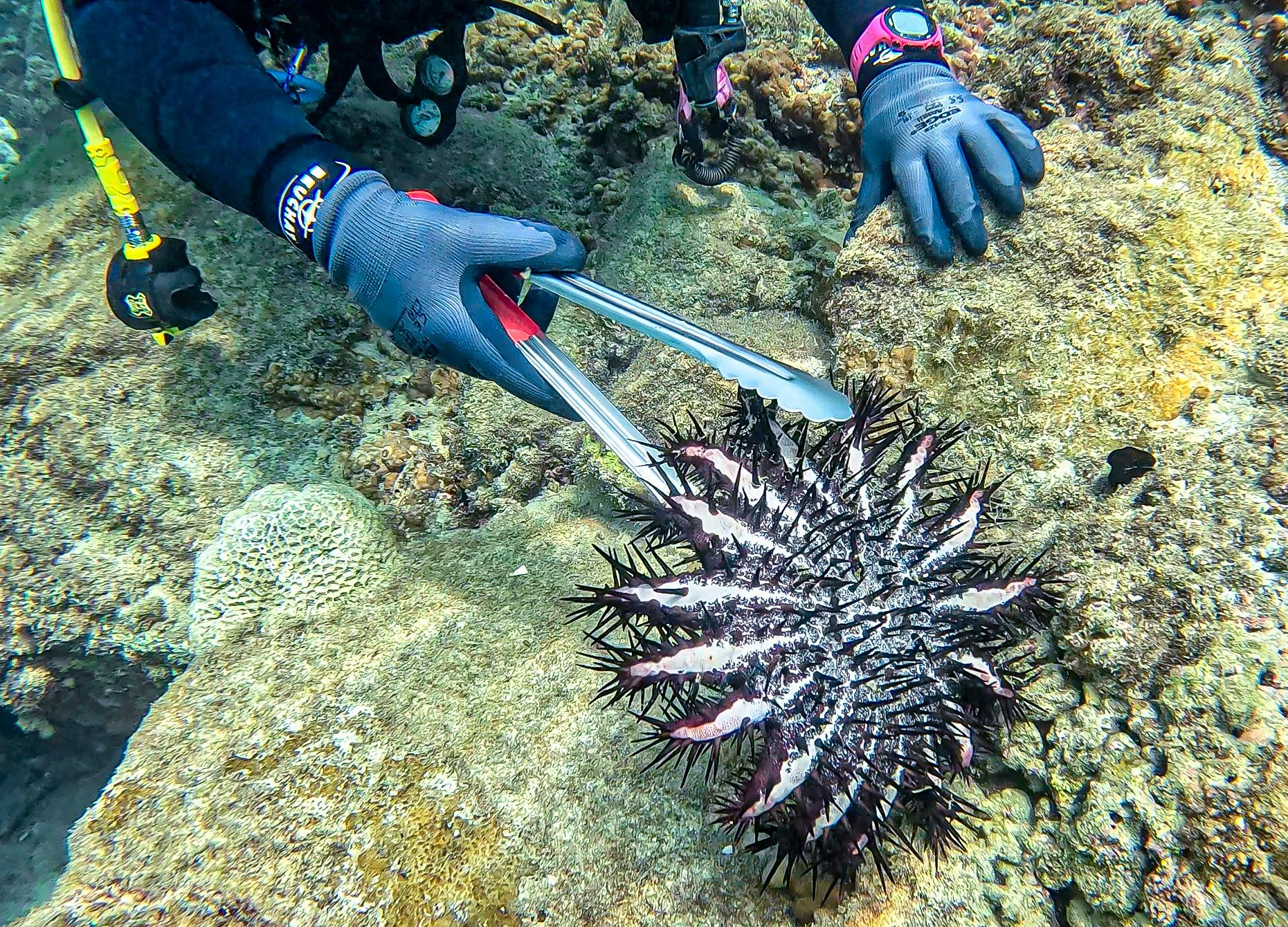

FEATURES

which will cause the CoTS to dissolve within 24-48 hours.To be on the safe side, the injected CoTS were then disposed of in deep water several nautical miles offshore. This method is both efficient and environmentally safe, ensuring that the outbreak can be controlled without introducing any harmful chemicals into the marine ecosystem.
SCIENTIFIC IMPLICATIONS AND FUTURE RESEARCH
The collection and culling operation not only addressed the immediate threat, but also laid the groundwork for future research. The DNA samples collected will undergo thorough analysis to determine the genetic diversity of the CoTS population in the UAE waters. This information is crucial for understanding the dynamics of the outbreak and developing targeted strategies for prevention and control.
Furthermore, identifying whether the two distinct colour types are separate species or variations of the same species will enhance our understanding of CoTS biology and ecology. Such knowledge is vital for predicting future outbreaks and implementing effective monitoring programmes.
A COMMUNITY EFFORT FOR OCEAN CONSERVATION
The success of this operation underscores the importance of community involvement and scientific collaboration in marine conservation efforts. The combined expertise of divers, scientists, and volunteers was instrumental in addressing the CoTS outbreak efficiently and safely in this case. This initiative also highlights the role of local organisations and volunteers in marine conservation efforts and raising awareness about marine environmental issues.
LOOKING AHEAD: SUSTAINING CORAL REEF HEALTH
While the immediate threat posed by the CoTS outbreak has been mitigated at the mentioned sites, more information is needed about CoTS in this region. Continuous monitoring and research are essential to ensure the long-term health of the coral reefs in the region. Hopefully, the data collected from this operation will help to inform future strategies and build resilience against potential future outbreaks of CoTS in UAE waters.
Public education and awareness campaigns are crucial in fostering a culture of conservation.
By engaging local communities, divers, and stakeholders, we can create a collective effort to protect and preserve the UAE’s precious marine ecosystems.
REPORT YOUR COTS SIGHTINGS
Divers and snorkellers are encouraged to report any sightings of Crown-ofThorns sea stars along the UAE’s east coast to Henrik.stahl@ukf.ac.ae and/or magazine@emiratesdiving.com
ACKNOWLEDGEMENTS
Thank you to DP World for all the support they provide through their strategic partnership with EDA.
Thank you to Professor Paolo Galli and Dr Davide Seveso from the University of MilanoBiccoca, the wonderful EDA team members for the successful environmental clean-up: Rania Shawki Mostafa, Vickie Langton, Gordon T. Smith, Yousef Abdulla Muhsen, Baraa Zaky, Rajni Gupta, Tiago Santiago Silva, and to the Barracuda Diving Centre (BDC) for the superb organisation and coordination by their staff team, Jay Zer and Lablu Rahaman!
53 JUNE 2024 | DIVERS FOR THE ENVIRONMENT FEATURES
L-R: Gordon T. Smith, Tiago Santiago Silva, Dr Henrik Stahl – University of Khorfakkan, Lablu Rahaman from BDC, Rania Shawki Mostafa – EDA’s Reef Check Trainer, Jay Zer from BDC, Paolo Galli – University of Milano-Biccoca, Ally Landes – EDA’s Project Director, Rajni Gupta (DVDT), Vickie Langton, Yousef Abdulla Muhsen (DVDT), and Baraa Zaky (DVDT).
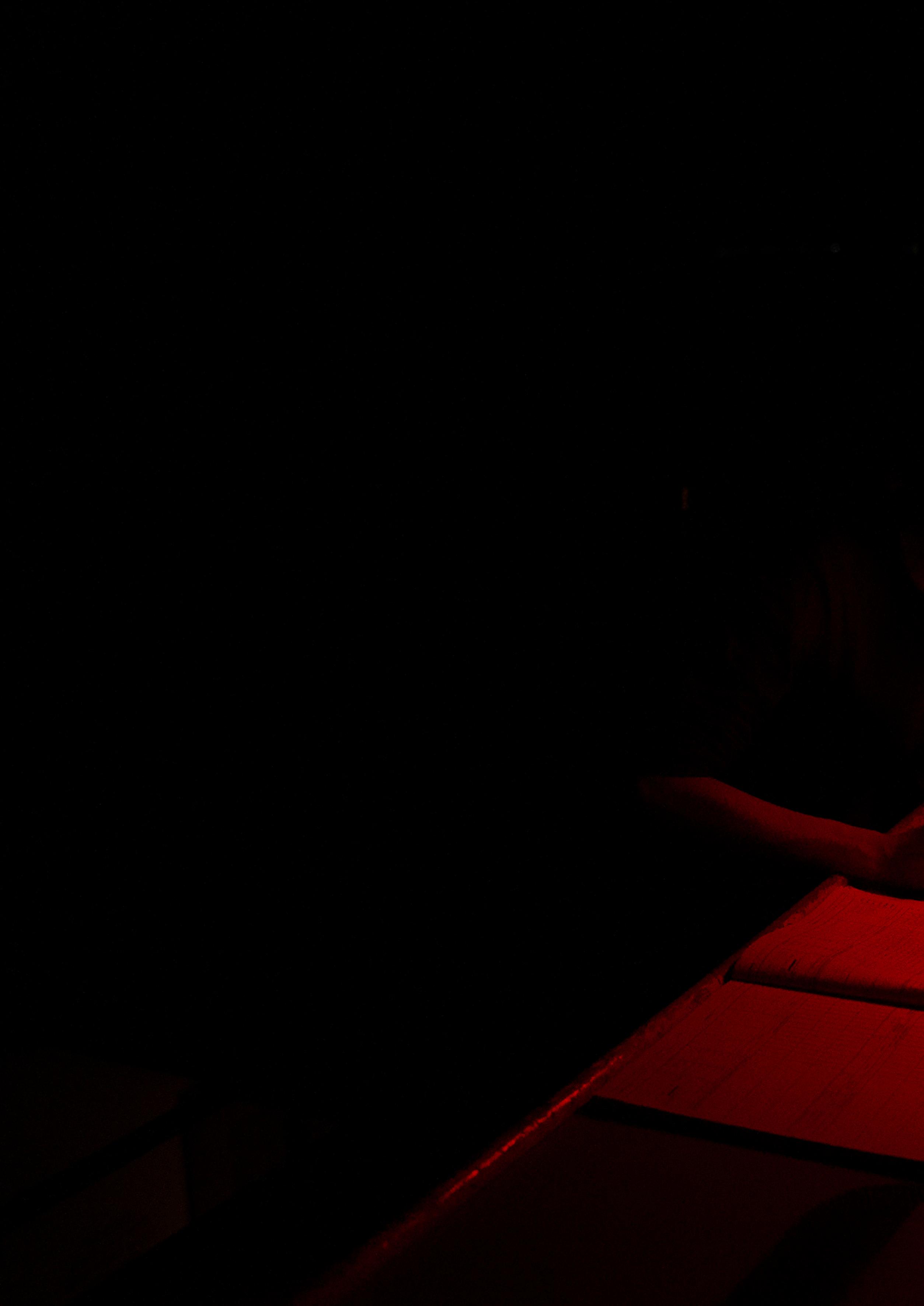
VANISHING VAQUITAS:
THE CRITICAL FIGHT FOR SURVIVAL IN THE UPPER GULF OF BAJA CALIFORNIA, MEXICO
FEATURE MARCO GARCIA-LEON PHOTOGRAPHY SEA SHEPHERD CONSERVATION SOCIETY
The fight for the Vaquita transcends local boundaries, resonating as a global concern that mirrors wider environmental crises. It serves as a poignant example of the profound repercussions of human actions on marine ecosystems and underscores the intricate relationship between local economic activities and global conservation endeavours.
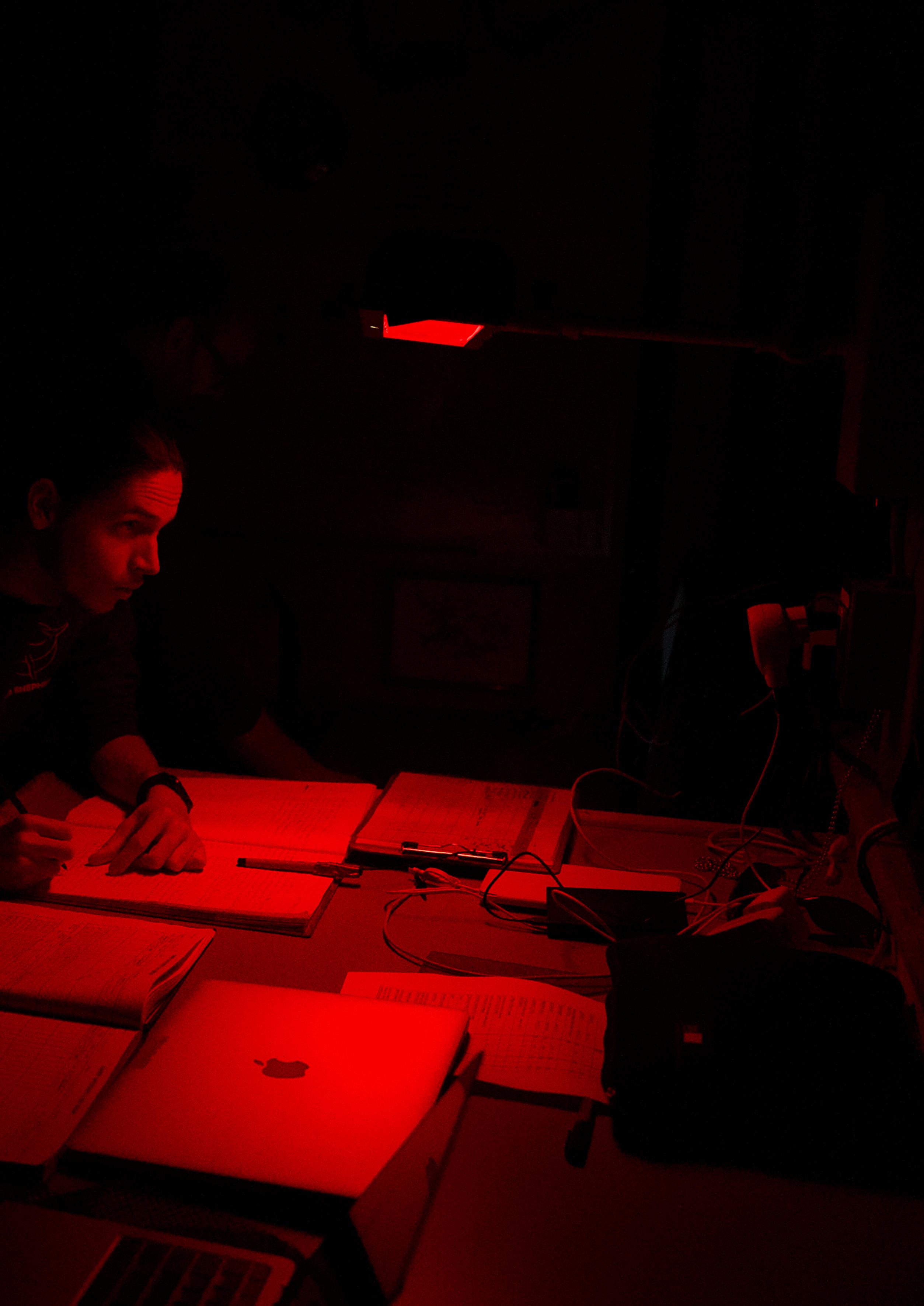


In Mexico’s Upper Gulf of California, a harrowing battle unfolds to rescue the planet’s most imperilled marine mammal, the Vaquita porpoise. Revered for its elusive essence, the Vaquita thrives solely within this narrow stretch, with a mere handful – less than 20 individuals – hanging precariously on the verge of extinction. This grave predicament stems chiefly from illicit fishing methods ensnaring these diminutive cetaceans in gill nets designed for another imperilled species, the totoaba fish, whose swim bladder is coveted as a rare and lucrative commodity fetching exorbitant sums on the black market, commanding prices that soar into the thousands and even millions.
SEA SHEPHERD’S MISSION
In the vast expanse of our planet's ocean, where the delicate balance of marine life hangs in the balance, Sea Shepherd emerges as a steadfast guardian, defending endangered marine wildlife with unwavering determination and tireless resolve.
With ships as vessels of change and captains as guiding beacons, Sea Shepherd – a non profit NGO – embarks on courageous missions spanning the globe's most fragile

ecosystems. From the chilling waters surrounding the Faroe Islands, where the haunting cries of Pilot Whales and Bottlenose Dolphins echo amidst the threat of barbaric slaughter, to the serene expanse of Mexico's Upper Gulf of California, where the endangered Vaquita Porpoise teeters on the brink of extinction, Sea Shepherd’s dedication knows no bounds.
Driven solely by the generosity of supporters, Sea Shepherd's mission is a testament to the power of collective action and the unyielding spirit of compassion. The organisation is a beacon of hope for marine wildlife in peril, mobilising its resources, expertise, and unwavering commitment to safeguarding the ocean and the magnificent creatures that call them home.
OPERATION MILAGRO
Since 2015, Sea Shepherd has been at the forefront of efforts to preserve the remaining Vaquita population. Collaborating with Mexican authorities, the Mexican navy, and leading researchers, Sea Shepherd has launched a multifaceted campaign called “Operation Milagro.” (“Miracle”, in Spanish).
This initiative focuses on the eradication of illegal fishing gear from the designated 'Zero Tolerance Area' (ZTA) – an area where fishing is completely forbidden within the Vaquita Refuge – a UNESCO recognised and federally protected sanctuary where gill net fishing is strictly prohibited.
The commitment of the Sea Shepherd fleet is unwavering. Spearheading this endeavour is the newly introduced vessel, M/V Seahorse, equipped with state-of-the-art technology and supported by long-range drones. This advanced system meticulously monitors the Vaquita Refuge, swiftly locating and extracting dangerous gill nets. To date, Sea Shepherd’s conservation efforts have resulted in the removal of over 1,000 pieces of illegal fishing equipment from the refuge. These initiatives not only safeguard the Vaquita but also rescue thousands of other marine animals ensnared in these perilous traps, including sea turtles, dolphins, sea lions, and the critically endangered totoaba.
The debut of the M/V Seahorse heralds a pivotal moment in the campaign to preserve the Vaquita. Following its launch, illegal fishing
56 DIVERS FOR THE ENVIRONMENT | JUNE 2024 FEATURES
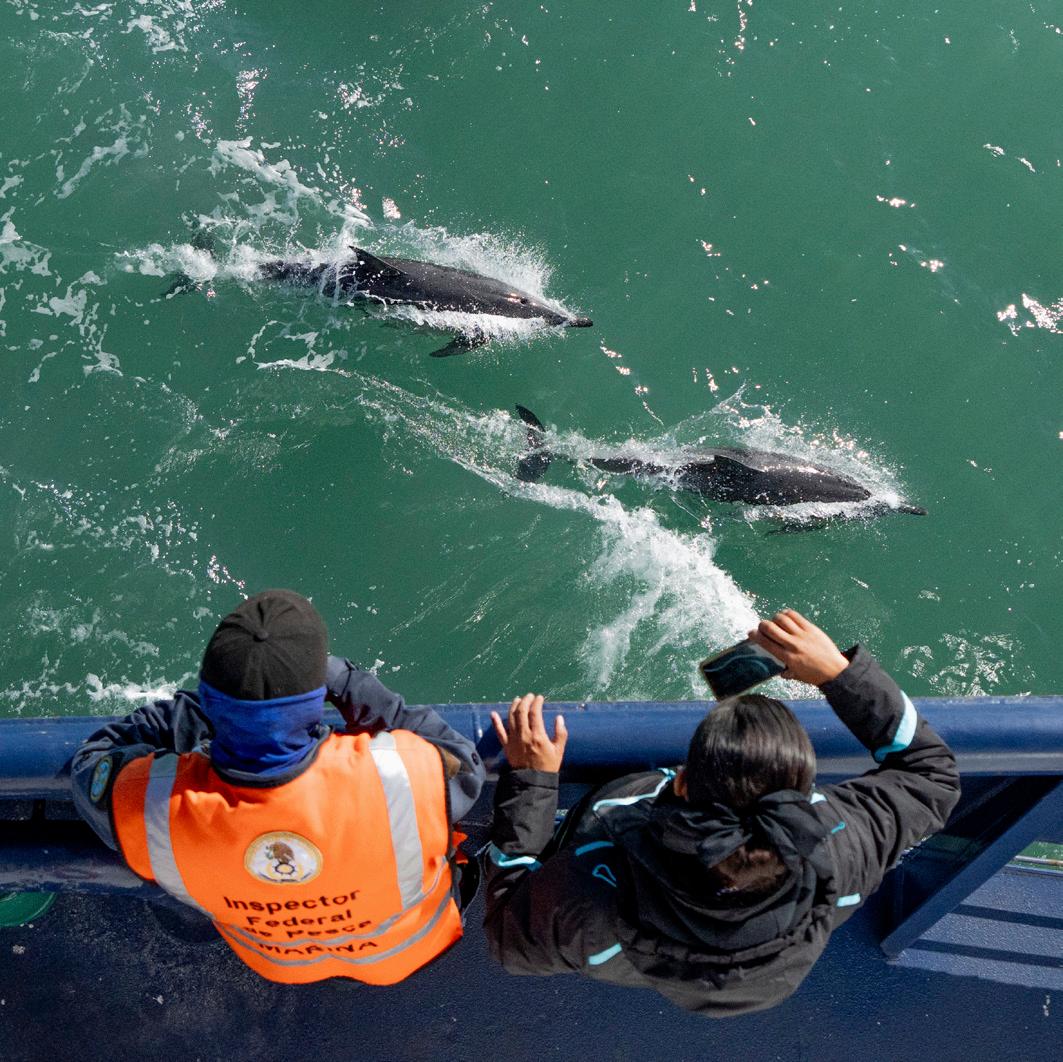

activities within the ZTA of the Vaquita Refuge plummeted by a staggering 90%. This notable achievement follows the momentum of 2022, when illegal fishing hours decreased by 79%. These remarkable results underscore the steadfast and impactful conservation tactics implemented by Sea Shepherd in collaboration with their partners in the Mexican government.
THE VITAL SIGNIFICANCE OF SAVING THE VAQUITA
The fight for the Vaquita transcends local boundaries, resonating as a global concern that mirrors wider environmental crises. It serves as a poignant example of the profound repercussions of human actions on marine ecosystems and underscores the intricate relationship between local economic activities and global conservation endeavours.
The Vaquita is a keystone species, indicative of the health of the marine environment in the Upper Gulf of Baja California. Protecting the Vaquita, therefore, is about more than saving an endangered species; it is about maintaining the balance of a fragile marine ecosystem. The loss of the Vaquita would signify a failure to protect one of the world’s most unique


natural habitats, with potentially far-reaching ecological consequences.
HOW YOU CAN HELP
The battle to save the Vaquita is ongoing, and it demands global attention and support. Every individual can contribute to this crucial cause.
Education and advocacy play critical roles in conservation. By educating ourselves and others about the importance of biodiversity and the specific needs of species like the Vaquita, we foster a deeper connection to our ocean’s environmental challenges, empowering more people to act.
The fate of the Vaquita hangs in the balance. This is not just a conservation issue; it is a moral imperative. The Vaquita’s plight is a poignant reminder of the broader environmental crises facing our planet and the urgent need for concerted action to ensure that our ocean, and the life within them, endure for future generations.
Sea Shepherd’s Direct Action is based on the foundational belief that each of us has the power to protect the ocean, and we have
many ways to include you in our campaigns, from volunteering on-shore with waterway clean-ups and hosting events, to joining our Direct Action Crew monthly giving programme or coming on-board and crewing one of our vessels.
Let us be the voice for the voiceless and ensure that the Vaquita does not vanish on our watch. Join the fight to save a species, support Sea Shepherd, and help keep the ocean teeming with life.

FOLLOW SEA SHEPHERD ON: www.instagram.com/seashepherdsscs www.twitter.com/seashepherdsscs www.seashepherd.org
You can donate to Sea Shepherd here: www.seashepherd.org/donate/
57 JUNE 2024 | DIVERS FOR THE ENVIRONMENT FEATURES










DIGITAL ONLINE RESULTS EDA’S UNDERWATER PHOTOGRAPHY AND FILM COMPETITION 2024
EVENT PARTNER PRINTING PARTNER AN EVENT BY WWW.EMIRATESDIVING.COM/EVENTS/DIGITAL-ONLINE
Photo by Mishaal Ashok – Digital Online 2024

BEST OF UAE’S PHOTOGRAPHY TALENT AWARDED AT EDA’S 15th ANNUAL DIGITAL ONLINE UNDERWATER
PHOTOGRAPHY & FILM COMPETITION
Celebrating its 15th year, the Digital Online Underwater Photography & Film Competition, rewarded the best of the UAE’s underwater photography talent across the video and multiple image categories hosted at Deep Dive Dubai on the 20th of May.
Prizes were awarded to the winners by Juma Khalifa bin Thalith, EDA’s Chairman and celebrated author, Ali Khalifa bin Thalith, renowned photographer and filmmaker and Secretary General of the Hamdan bin Mohammed bin Rashid Al Maktoum International Photography Award, and Mohamed Faraj Abdulla Jaber, EDA’s Health, Safety and Technical Inspector.
Attendees were also treated to a special guest appearance by award-winning underwater photographer and cinematographer Tobias Friedrich, courtesy of Grand Stores, a leading distributor and retailer of photographic
equipment.Tobias gave a keynote presentation offering expert guidance and tips on underwater photography to the audience.
Commenting on the 2024 awards ceremony, Ibrahim Al Zu’ubi, Co-Founder of the Emirates Diving Association said, “My warmest congratulations to all the winners tonight, we have seen some breathtaking work in the imagery and videography of these talented ocean enthusiasts. It’s truly heartwarming to see such fantastic submissions from all the competitors, supporting our mission to reveal the underwater world we care about so deeply to audiences across the United Arab Emirates and the world. I’m also deeply grateful to our sponsors for the event, who never fail to provide superb prizes to reward the winners for their exceptional work. The competition could not succeed without you.”
During the awards ceremony, the 1st, 2nd and
3rd place prizes were presented to winners across seven categories, with over 13 different nationalities represented in the list of winners, including four Emirati nationals.
Deciding on the winners was the panel of judges comprising world-renowned photographers, authors and researchers from across the globe, including the UAE’s very own Mohamed Almusallami, an awardwinning underwater photographer and marine biologist, affiliate at Mohammed bin Rashid Academy of Scientists, Head of Fisheries Management at the Environment Agency – Abu Dhabi, and a Board Member at the Emirates Zoos and Aquariums Association.
Categories in the competition included Macro, Wide Angle, Best of the UAE, Black & White, Behaviour, Creative Underwater Photography, and the Video category, for which this year’s theme was ‘Coexistence’.
60 DIVERS FOR THE ENVIRONMENT | JUNE 2024
UNDERWATER PHOTOGRAPHY

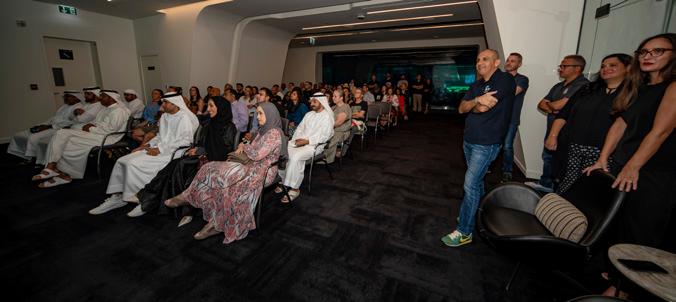
The Awards presentation was finished off with a Fun Raffle for 4 lucky audience winners with 2 dry bags and 2 sun hat prizes from CREST Diving.
THE PEOPLE’S CHOICE AWARDS
The People’s Choice Awards took place on EDA’s Facebook page from the 17-23 of May which included all the photos entered into this year’s competition. The photos with the most likes received a First, Second and Third place prize voted by the public, and the most liked video received an overall winning prize for best film.
Winners were announced on the social media platforms on the 24th of May. Prizes were awarded to the winners from CREST Diving, Emirates Diving Association, Al Boom Diving, and Goblin Diving Center. The results can be found on page 80.

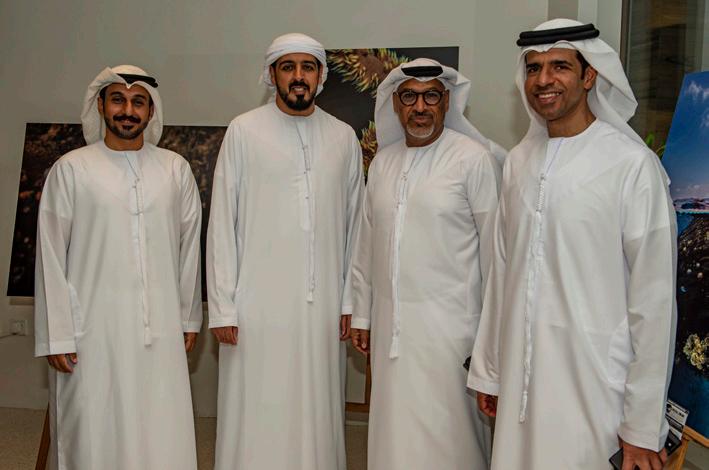

61 JUNE 2024 | DIVERS FOR THE ENVIRONMENT UNDERWATER PHOTOGRAPHY
Tobias Friedrich, Isidora, and Ali Khalifa bin Thalith
Juma Khalifa bin Thalith, EDA’s Chairman
Mohamed Almusallami, Saleh Al Hammadi, Mohamed Faraj Abdulla Jaber, and Khalid Alrazooqi
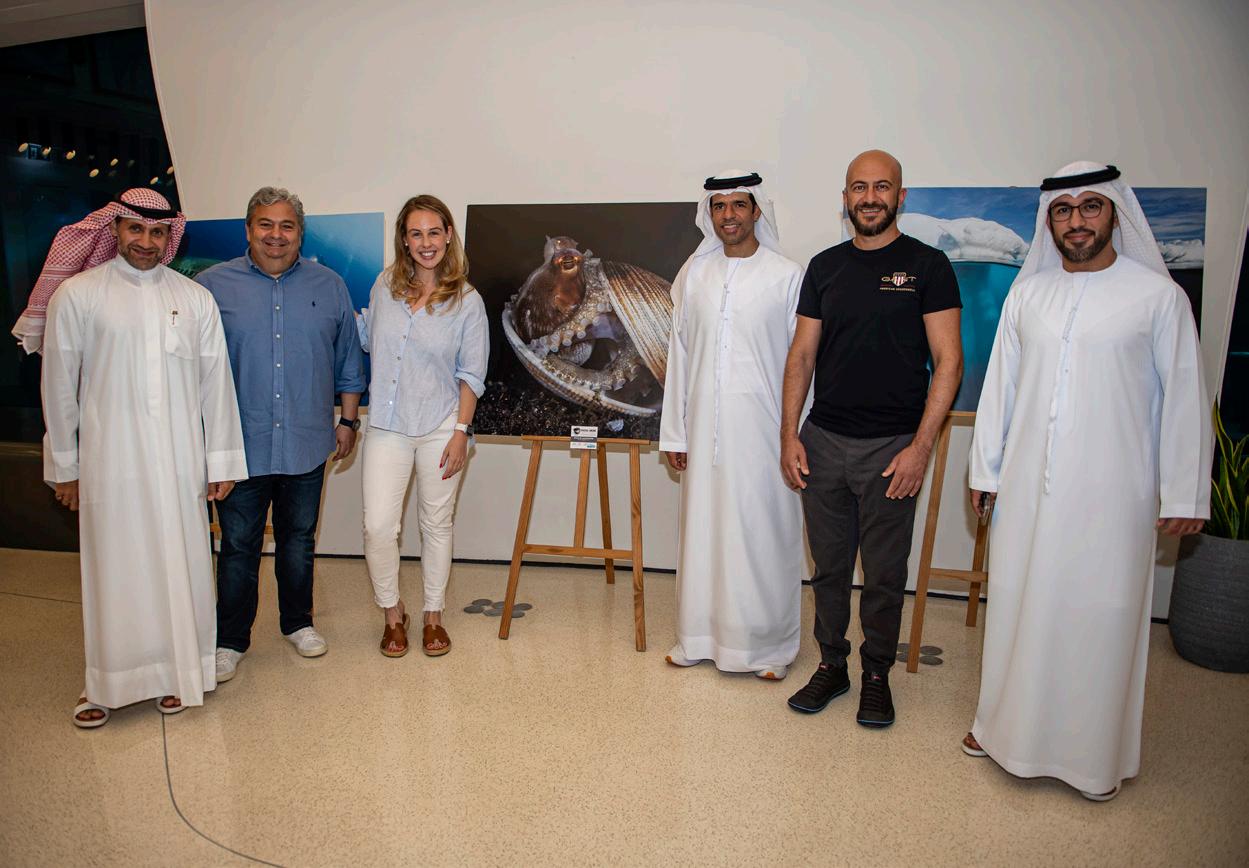





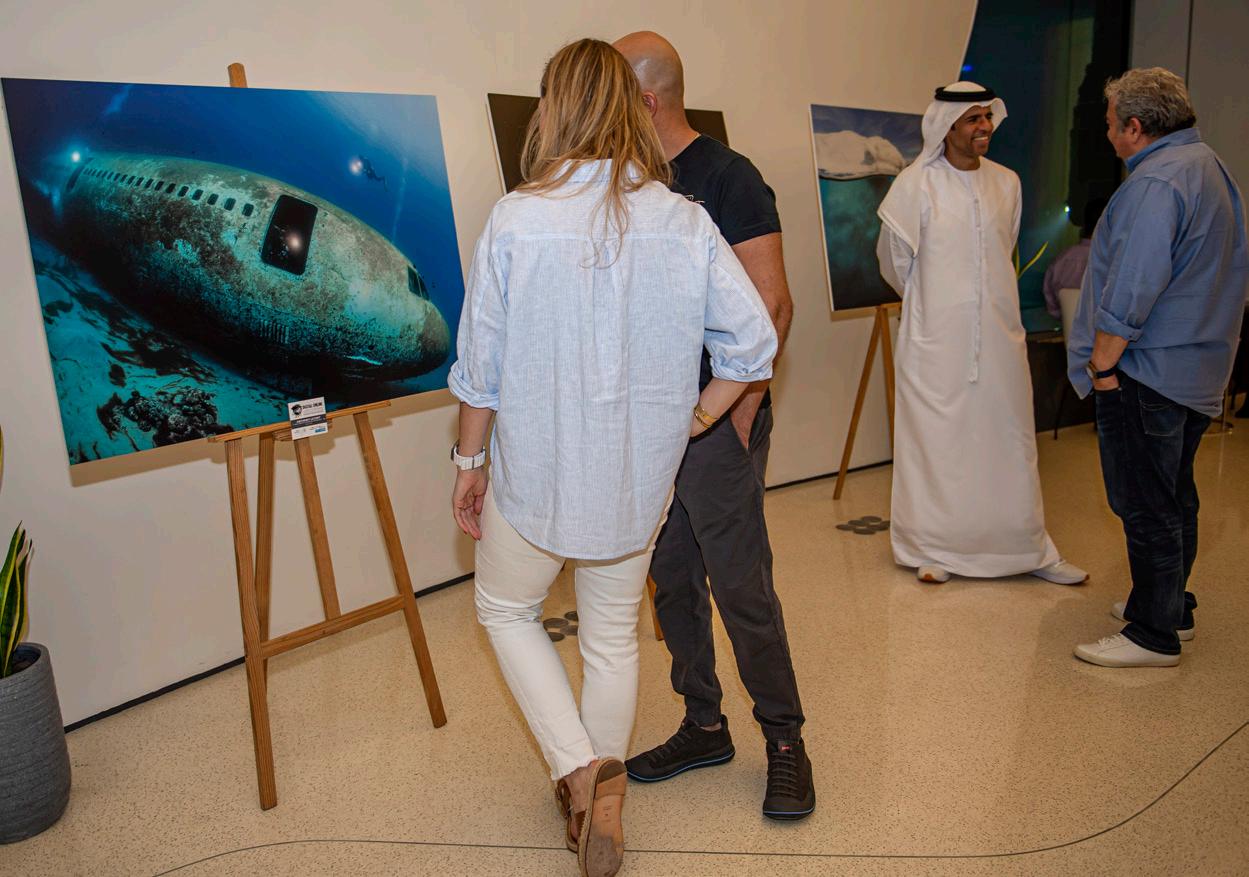

UNDERWATER PHOTOGRAPHY
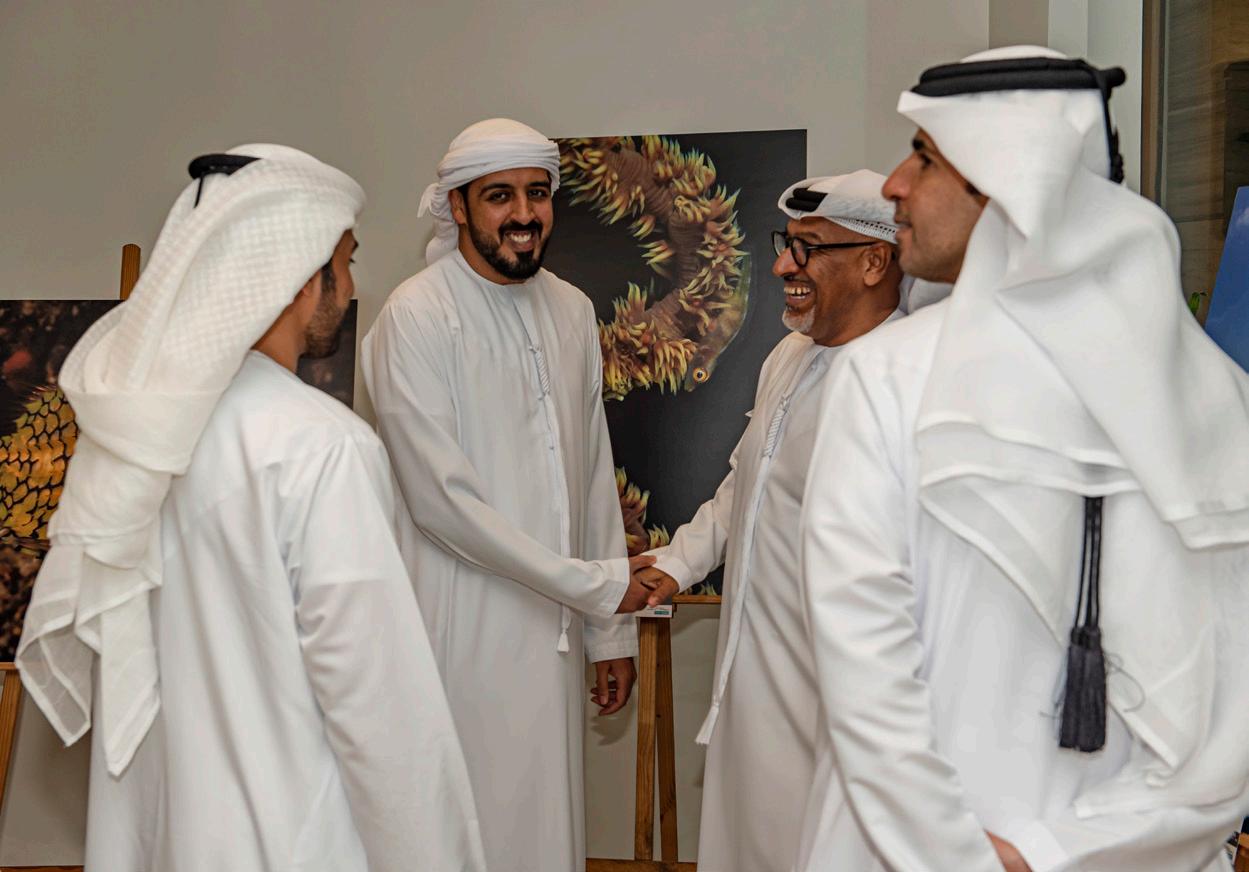

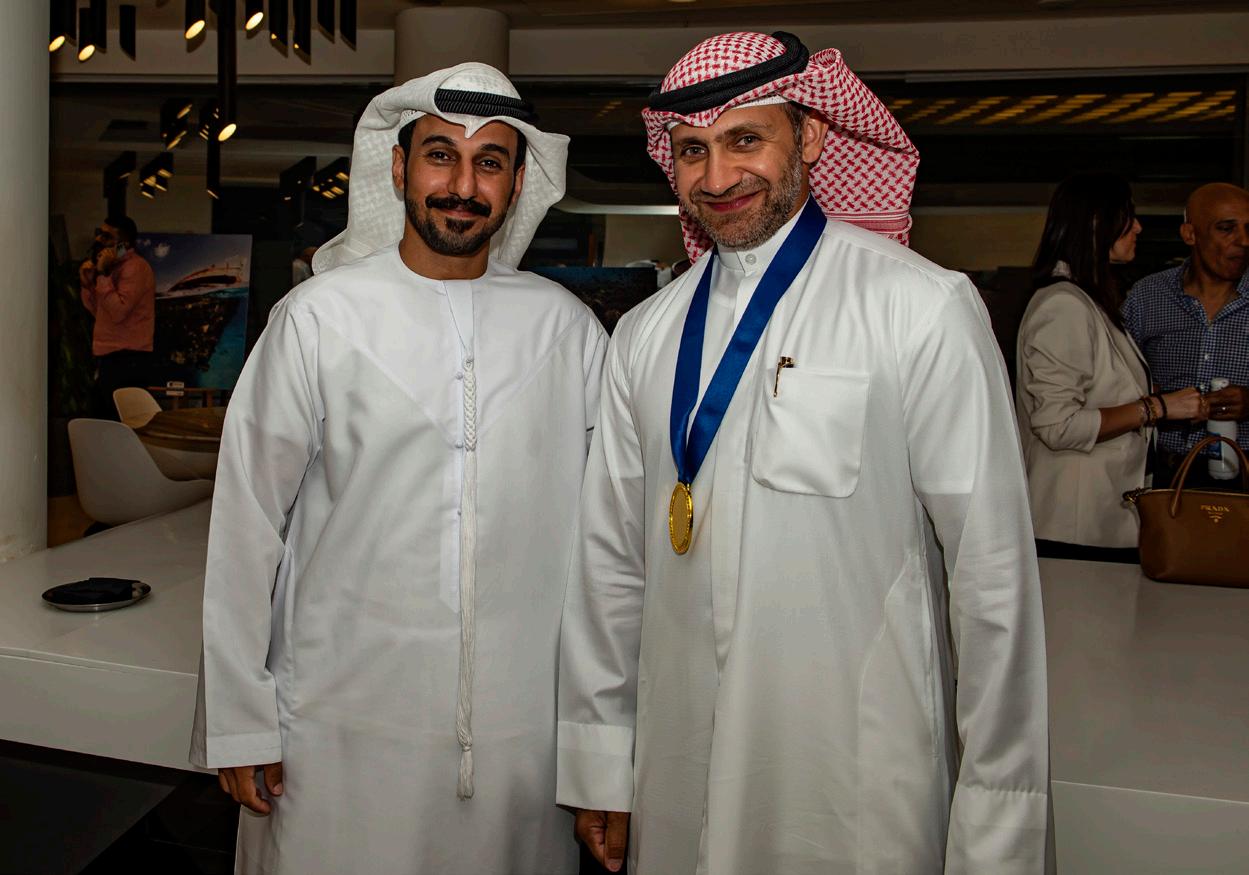



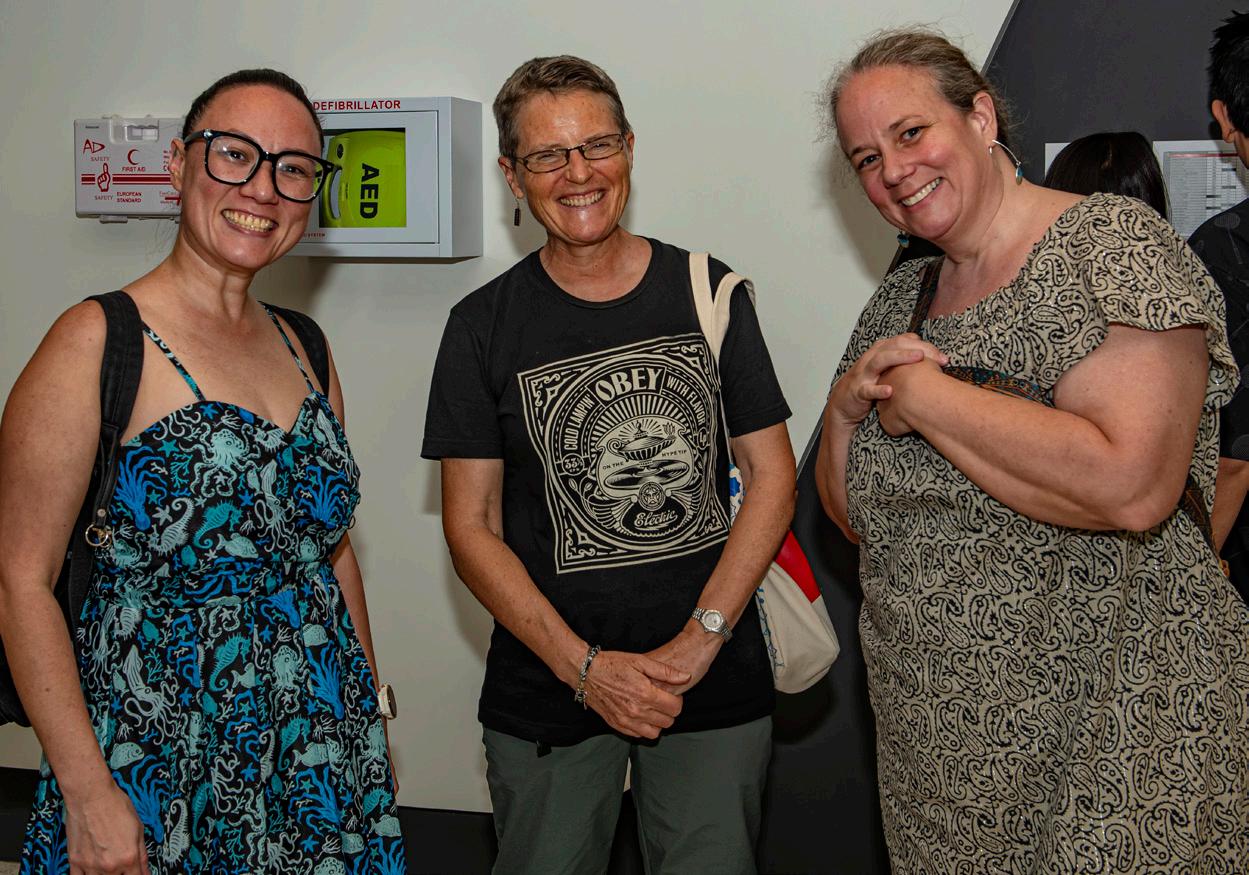

UNDERWATER PHOTOGRAPHY


DIGITAL ONLINE 2009-2024
Digital Online – EDA’s Underwater Photography and Film Competition, celebrates its 15th year!
The competition was introduced by EDA in 2009 to resident photographers to develop a relationship and human interaction amongst those unfamiliar with the underwater world environment.The competition holds both local and international marine life categories to offer variety between our local and international diving fans. The film category was introduced



as an extension to the competition in 2012 to share our underwater world through motion pictures and deliver a better understanding of the habitats and surroundings.
The event sees continuous and steady growth with new underwater photographers taking part and joining our regular annual participants. The enthusiasm and passion strives on, and the drive to bring our underwater world’s conservation to the forefront increases even more so. The purpose of Digital Online is to keep our underwater world visible by

displaying its hidden beauties and to exemplify its importance to all life on Earth through the powers of its ecosystems.
The event has attained equal success with nondivers who come to support the participating photographers and videographers at the annual Awards & Exhibition Opening Night. Whether it’s through discussions, or articles published for our readers through our free quarterly magazine, Divers for the Environment, the inspiration the event brings, is a success in its own right.
64 DIVERS FOR THE ENVIRONMENT | JUNE 2024 UNDERWATER PHOTOGRAPHY
OVERALL PHOTO & VIDEO WINNERS 2024 This year’s overall winners for Digital Online’s Photographer 2024 is Ahmed Al-Ali, and Digital Online’s Videographer 2024 is Yevheniia Rehush who have both received this year’s trophies. Congratulations to all our participants for taking part and sharing their work with us, and thank you to all our guests who came to support the event. VIDEO COEXISTENCE 28 Yevheniia Rehush 405 29 Arwa Badri 397 30 Suretta Venter 372 31 Luan Le Ngoc 297 PHOTOGRAPHY BEHAVIOUR UAE BW CREATIVE MACRO WA TOTAL 1 Ahmed Al-Ali 456 395 446 360 467 394 2518 2 Levente Rozsahegyi 471 324 391 458 382 480 2506 3 Suretta Venter 416 445 432 381 369 414 2457 4 Kerstin Binoth 478 427 341 370 443 376 2435 5 Hadi El Osta 403 367 364 400 396 358 2288 6 Anthony Leydet 441 415 469 464 477 2266 7 Mohamed Mohsen Ibrahim 388 407 337 372 430 302 2236 8 Gordon T. Smith 406 352 351 399 355 371 2234 9 Luan Le Ngoc 420 414 370 315 375 333 2227 10 Khalid Alrazooqi 521 459 365 400 458 2203 11 Felipe Morales 327 330 421 433 317 332 2160 12 Anastasia Demkina 490 402 401 442 404 2139 13 Hesma Fivaz 304 331 356 288 422 332 2033 14 Marwa Elagroudy 406 401 433 405 361 2006 15 Fakhruddin Husein 401 416 358 421 344 1940 16 Naima Amari 378 361 429 367 376 1911 17 Yuriy Rakhmatullin 400 368 310 395 406 1879 18 Yevheniia Rehush 332 379 406 321 408 1846 19 Philippe Lecomte 488 402 453 467 1810 20 Mishaal Ashok 360 475 401 453 1689 21 Alba Rodriguez 333 286 349 278 279 1525 22 Jonathan Laperdrix 390 352 322 382 1446 23 Ahmed Alkaabi 405 432 432 1269 24 Tiago Santiago Silva 427 414 841 25 Uzeyr Kamora 407 426 833 26 Lynette Ferreira 309 253 237 799 27 Sneha Shetty 460 460
THE WINNERS
THE SPONSORS AND THE PRIZES
1. Yevheniia Rehush | 1st Place Video (405)
SPONSOR: MONSTER MIDDLE EAST
Monster Bundle including a GoPro HERO12, a LARQ bottle, and a ROCKETBOOK
2. Khalid Alrazooqi | 1st Place Behaviour (521)
SPONSOR: MONSTER MIDDLE EAST
Monster Bundle including a GoPro HERO12, a LARQ bottle, and a ROCKETBOOK
3. Philippe Lecomte | 1st Place Best of the UAE (488)
SPONSOR: DIVERS DOWN
6 Dives Package to dive the East Coast’s dive sites. Includes tank and weights – www.diversdownuae.com
4. Levente Rozsahegyi | 1st Place Wide Angle (480)
SPONSOR: PELAGIC DIVERS FUVAHMULAH
Maldives experience: 3 nights with bed & breakfast, 2 days of diving (3 dives/day) for one – www.pelagicdiversfuvahmulah.com
5. Mishaal Ashok | 1st Place Black & White (475) SPONSOR: DIVE CAMPUS PADI Tec Course – www.divecampus.com
6. Anthony Leydet | 1st Place Creative Photography (469) SPONSOR: XR HUB Isotta Housing for GoPro – www.xrdiving.com
7. Ahmed Al-Ali | 1st Place Macro (467) SPONSOR: GRAND STORES
SEALIFE ReefMaster SL350 RM-4K Underwater Camera –www.grandstores.com & www.sealife-cameras.com
8. Arwa Badri | 2nd Place Video (397) SPONSOR: DIVE CAMPUS ORCA Dive Light 910V 5000 Lumens – www.divecampus.com
9. Anastasia Demkina | 2nd Place Behaviour (490) SPONSOR: GRAND STORES
SEALIFE SportDiver SL400-U Underwater Smartphone Housing –www.grandstores.com & www.sealife-cameras.com
10. Sneha Shetty | 2nd Place Black & White (460)
SPONSOR: CREST DIVING CREST Light Wave Dive Computer CR-5L – www.crestdiving.com
11. Suretta Venter | 2nd Place Best of the UAE (445)
SPONSOR: GRAND STORES
SEALIFE Sea Dragon Mini 1300S Power Kit (SLKITO8) –www.grandstores.com & www.sealife-cameras.com
12. Kerstin Binoth | 2nd Place Macro (443) SPONSOR: GOBLIN DIVING CENTER
4 Dives Package to dive the East Coast’s dive sites. Includes tank and weights – www.facebook.com/GoblinDC
13. Felipe Morales | 2nd Place Creative Photography (433)
SPONSOR: NEPTUNE DIVING CENTRE
2 days/2 nights on a shared liveaboard in the Musandam with 6 dives included – www.neptunecenter.ae
14. Uzeyr Kamora | 2nd Place Wide Angle (426)
SPONSOR: CREST DIVING CREST Light Wave Dive Computer CR-5L – www.crestdiving.com
15. Suretta Venter | 3rd Place Video (372)
SPONSOR: SANDY BEACH DIVE ACADEMY
Two tank boat dive + one shore dive on East Coast (Fujairah) –www.divesandybeach.com
16. Marwa El-Agroudy | 3rd Place Black & White (433)
SPONSOR: CREST DIVING
CREST White Dive Computer CR-4 – www.crestdiving.com
17. Ahmed Alkaabi | 3rd Place Macro (432)
SPONSOR: GOBLIN DIVING CENTER
4 Dives Package to dive the East Coast’s dive sites. Includes tank and weights – www.facebook.com/GoblinDC
18. Tiago Santiago Silva | 3rd Place Best of the UAE (427)
SPONSOR: XR HUB
Blackwater Dive – www.xrdiving.com
19. Luan Le Ngoc | 3rd Place Behaviour (420)
SPONSOR: AL MAHARA DIVING CENTER
2-hour kayak excursion at Eastern Mangroves for 2 pax, one Abu Dhabi wreck or reef dive, and one shark dive at the National Aquarium for 1 person – www.divemahara.com
20. Yevheniia Rehush | 3rd Place Creative Photography (406)
SPONSOR: CREST DIVING
CREST White Dive Computer CR-4 – www.crestdiving.com
21. Yuriy Rakhmatullin | 3rd Place Wide Angle (406)
SPONSOR: CREST DIVING
CREST Dry Bag and CREST Black Hat – www.crestdiving.com
COMPETITION CLAUSE
EDA does not disclose photographers’ names during the judging process. The competition is run fairly and without prejudice, professionally adhering to all of Digital Online’s rules and guidelines throughout.
NOTE: Photographers are only able to win one prize each. Entrants with multiple winning entries are given priority in the points awarded.
HIGHLY COMMENDED
Photographers who have won multiple photo entries, win a prize for their highest score only. They receive an honourable mention for their other winning images which are also printed for the exhibition.
SECOND PLACE
1. Anthony Leydet | 2nd Place Macro (477)
2. Anthony Leydet | 2nd Place Macro (464)
3. Khalid Alrazooqi | 2nd Place Best of the UAE (459)
4. Levente Rozsahegyi | 2nd Place Creative Photography (458)
THIRD PLACE
5. Kerstin Binoth | 3rd Place Behaviour (478)
6. Philippe Lecomte | 3rd Place Wide Angle (467)
7. Philippe Lecomte | 3rd Place Macro (453)
8. Ahmed Al-Ali | 3rd Place Black & White (446)
65 JUNE 2024 | DIVERS FOR THE ENVIRONMENT UNDERWATER PHOTOGRAPHY
THE DIGITAL ONLINE JUDGES
PIER NIRANDARA
Author, Travel Writer, Film Producer, Underwater Photographer

Pier began her career as Thailand’s youngest author of three bestselling novels, multiple graphic novels, and short stories with over 200,000 copies sold in multiple languages. She has served as Director of Development at Sony Columbia Pictures, and as VP of Film & TV at A-Major Media, Hollywood’s first Asian American-driven production company. A TEDx speaker and literary ambassador for the Bangkok Metropolitan/UNESCO, Pier has won 2 Solas Awards for Best Travel Writing of the Year, 2 Lowell Thomas Awards from the Society of American Travel Writers, and Gold at the Book Passage Travel Writers & Photographers Conference 2023. Pier is also a PADI AmbassaDiver™ and founder of Immersiv Expeditions, where she leads trips to swim with marine wildlife. Her photography has been recognised by competitions including Ocean Photographer of the Year, and she was awarded the 2023 Ocean Storytelling Photography Grant by the Save Our Seas Foundation.
WEBSITES: www.piernirandara.com and www.immersivexpeditions.com INSTAGRAM: www.instagram.com/piersgreatperhaps
WILSON MCCOURTNEY
Underwater Cinematographer, Filmmaker & Wildlife Conservationist
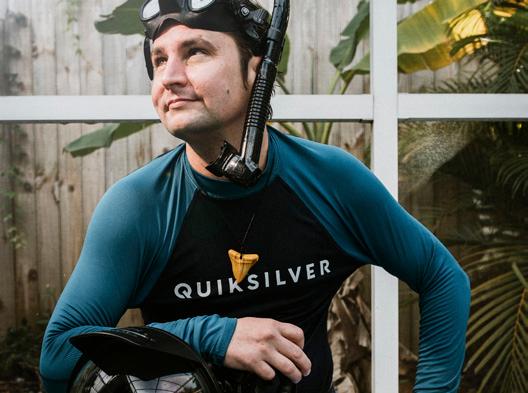
Wilson McCourtney is an underwater cinematographer, documentary filmmaker, and a wildlife conservationist. Having grown up in Florida, he developed a connection with the natural world at an early age that has fuelled his creative career and solidified his mission in life which is to protect our oceans and save wildlife.
In 2020 he played an instrumental role in passing the Kristin Jacobs Ocean Conservation Act which outlawed the import and export of shark fins in Florida. He directed a feature film called “Fighting For Florida” which is about saving sharks in Florida, minimising the horrific effects of Red Tide, and rescuing pelicans from fishing line entanglement which is slated to be released in 2024. When he’s not underwater or fighting for the planet, Wilson spends his time in Portland, Maine with friends and family hiking in the woods and exploring the vast wilderness of the NorthEast.
YOUTUBE: www.youtube.com/wilsonmccourtney
FACEBOOK: www.facebook.com/wilson.mccourtney
INSTAGRAM: www.instagram.com/wildlifewilson www.instagram.com/fightingforfloridafilm
SIMONE CAPRODOSSI | SUNDIVE BYRON BAY

Simone is an Italian underwater photographer, who has been awarded in several prestigious competitions and published internationally. After over 10 years of corporate life in Dubai, he moved to Australia where he co-owns and manages Sundive Byron Bay, a PADI 5 Star Dive Centre offering dives at the amazing Julian Rocks in Byron Bay. After travelling to and photographing many unique diving destinations worldwide, he also runs expeditions with Sundive to help others experience and photograph his favourite ones such as the Sardine Run and Djibouti. Simone was the Overall Winner of Digital Online for two consecutive years until he became a judge for the competition and has been a main feature contributor to the EDA magazine, ‘Divers for the Environment’.
FACEBOOK: www.facebook.com/SimoneCaprodossiPhotography INSTAGRAM: www.instagram.com/scaprodossi
DAVID DILEY | SCARLET VIEW MEDIA
Filmmaker, Underwater Cinematographer and Digital Colourist

David is a multi-award winning Filmmaker, Underwater Cinematographer and Digital Colourist from the UK best known for his work with sharks and large marine megafauna as well as his multi-award winning feature documentary, “Of Shark and Man”.
His profile has increased rapidly thanks to his work on a wide variety of projects for film and television, alongside his commercial work for a number of household brands.
David is the owner of Scarlet View Media, a high end boutique Production House in the north of England, and is a Panasonic Professional Ambassador and Angelbird Media Creative.
WEBSITE: www.scarletviewmedia.com
FACEBOOK: www.facebook.com/daviddileyfilmmaker
Underwater Photographer and Marine Biologist

Mohamed is a son of the Arabian Gulf. Coming from a long line of legendary pearl divers and fishermen, a strong bond ties him to the deep blue. He started his passion as a freediver and a spear-fisherman at an early age and naturally fell in love with the beauty of the underwater world. He took up underwater photography in 2008, and has won several awards and been published internationally since. His eye-catching and distinctive style pushes the limits to how photographers represent life below the waves. Mohamed has dedicated himself to conservation and to the Art of Underwater Photography, putting forth the message, “The Ocean has given our ancestors everything, now it is our turn to give back”. As a marine scientist with a masters degree in Environmental Science, he works closely with sea turtles, dugongs, dolphins, and sharks, where he is also responsible for many rare scientific discoveries in the Arabian Gulf region. Mohamed is also a PADI Instructor, an affiliate at Mohammed bin Rashid Academy of Scientists (MBRAS), the Head of Fisheries Management at the Environment Agency – Abu Dhabi, and a Board Member at the Emirates Zoos and Aquariums Association.
INSTAGRAM: www.instagram.com/b47r
ALLY LANDES | EMIRATES DIVING ASSOCIATION
Project Director, Editor, Graphic Designer, and Photographer

Ally joined EDA in December 2004 when she created and introduced the organisation’s quarterly magazine, “Divers for the Environment”. She played a central role in the development of Digital Online – EDA’s Underwater Photography and Film Competition from its launch in 2009, as well as introducing the film category as an extension in 2012
to share our underwater world through motion pictures, and has managed the event since inception. Today, Ally continues to oversee the EDA team and develop the brand, manages design and production of the magazine, handles photography and videography, and runs the organisation’s events and social media, all in the name of ocean conservation.
WEBSITE: www.emiratesdiving.com
INSTAGRAM: www.instagram.com/emiratesdivingassociation www.instagram.com/eda_uae
66 DIVERS FOR THE ENVIRONMENT | JUNE 2024 UNDERWATER PHOTOGRAPHY
MOHAMED ALMUSALLAMI
Underwater Photographer


UNDERWATER PHOTOGRAPHY
1st PLACE: Khalid Alrazooqi | Behaviour – 521 pts Indonesia
1st PLACE: Levente Rozsahegyi | Wide Angle – 480 pts Antarctica
 1st PLACE: Philippe Lecomte | Best of the UAE – 488 pts
1st PLACE: Philippe Lecomte | Best of the UAE – 488 pts
UNDERWATER PHOTOGRAPHY
Inchcape 2, Khorfakkan, UAE
 1st PLACE: Mishaal Ashok | Black & White – 475 pts
1st PLACE: Mishaal Ashok | Black & White – 475 pts
UNDERWATER PHOTOGRAPHY
Maldives

PHOTOGRAPHY
UNDERWATER
1st PLACE: Ahmad Al-Ali | Macro – 467 pts Kalba, Sharjah, UAE


UNDERWATER PHOTOGRAPHY
1st PLACE: Anthony Leydet | Creative Underwater Photography – 469 pts Aqaba, Jordan
2nd PLACE: Anastasia Demkina | Behaviour – 490 pts Maldives


UNDERWATER PHOTOGRAPHY
2nd PLACE: Suretta Venter | Best of the UAE – 445 pts Snoopy Island, Dibba, Fujairah, UAE
2nd PLACE: Sneha Shetty | Black & White – 460 pts Daymaniyat Islands, Oman
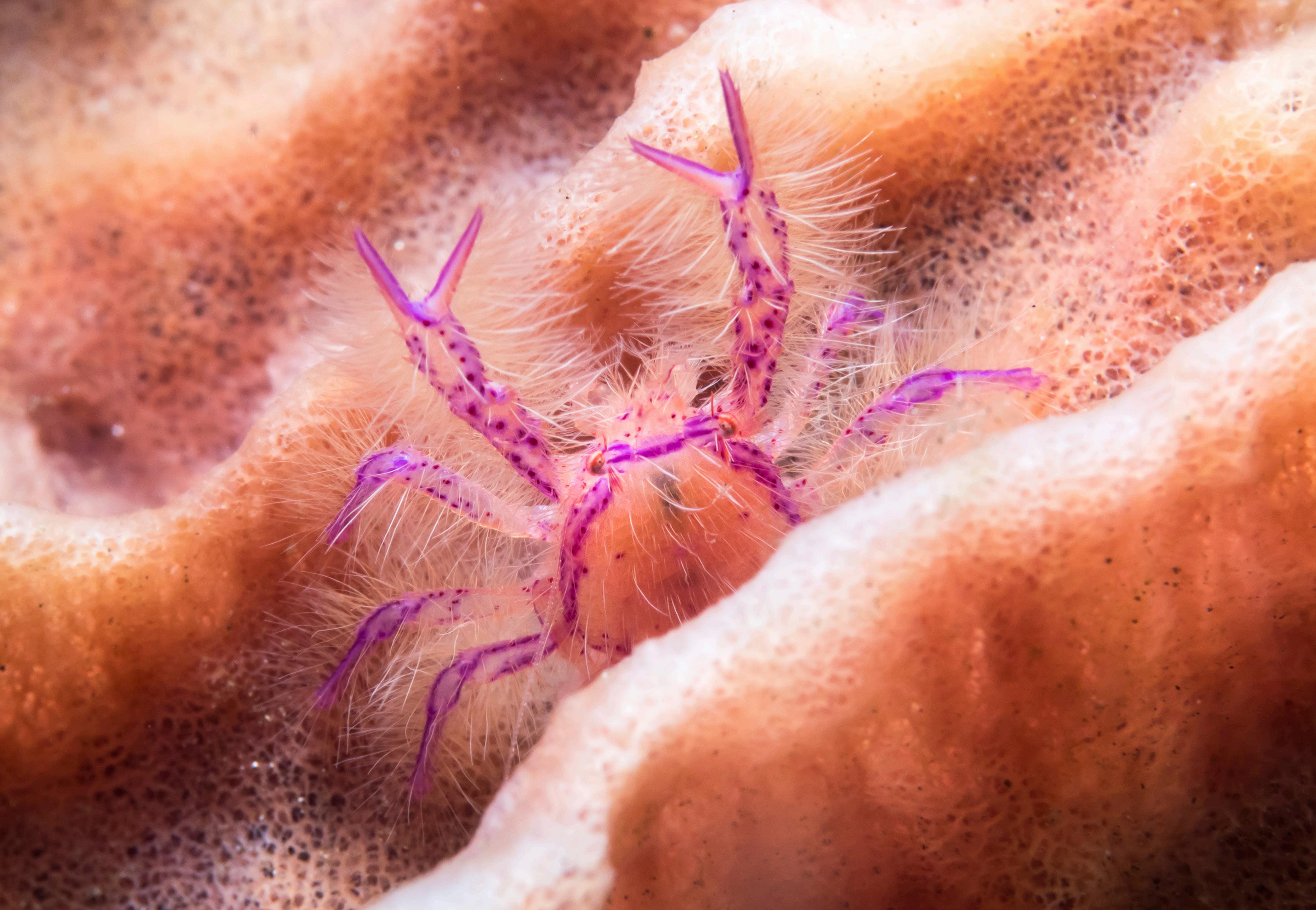

UNDERWATER PHOTOGRAPHY
2nd PLACE: Uzeyr Kamora | Wide Angle – 426 pts Mauritius
2nd PLACE: Kerstin Binoth | Macro – 443 pts Villa Alba House Reef, Tulamben, Bali, Indonesia

UNDERWATER PHOTOGRAPHY
2nd PLACE: Felipe Morales | Creative Underwater Photography – 433 pts Corfu, Greece
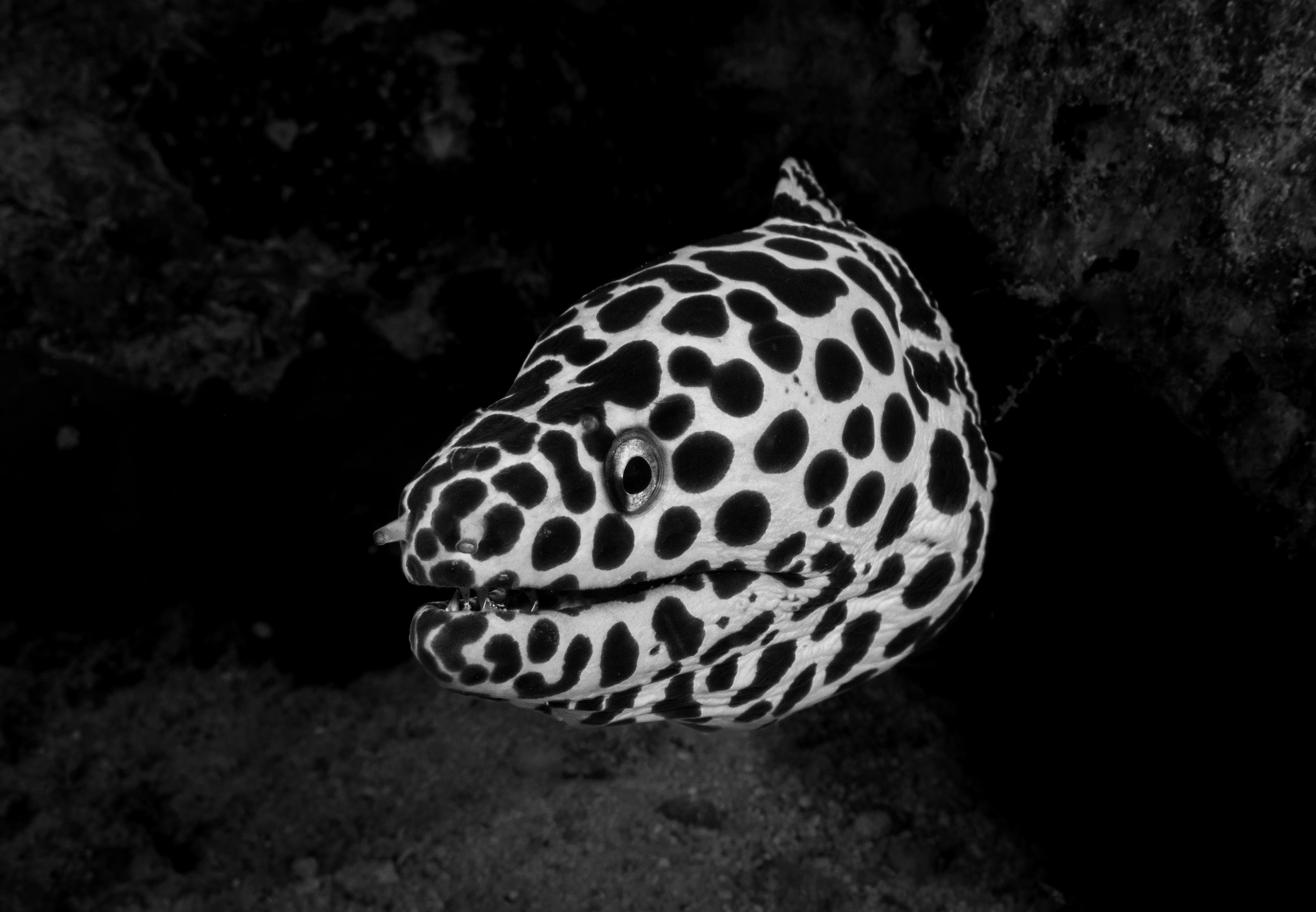

UNDERWATER PHOTOGRAPHY
3rd PLACE: Ahmed Alkaabi | Macro – 432 pts
Inchcape 2, Khorfakkan, UAE
3rd PLACE: Marwa El-Agroudy | Black & White – 433 pts Maldives
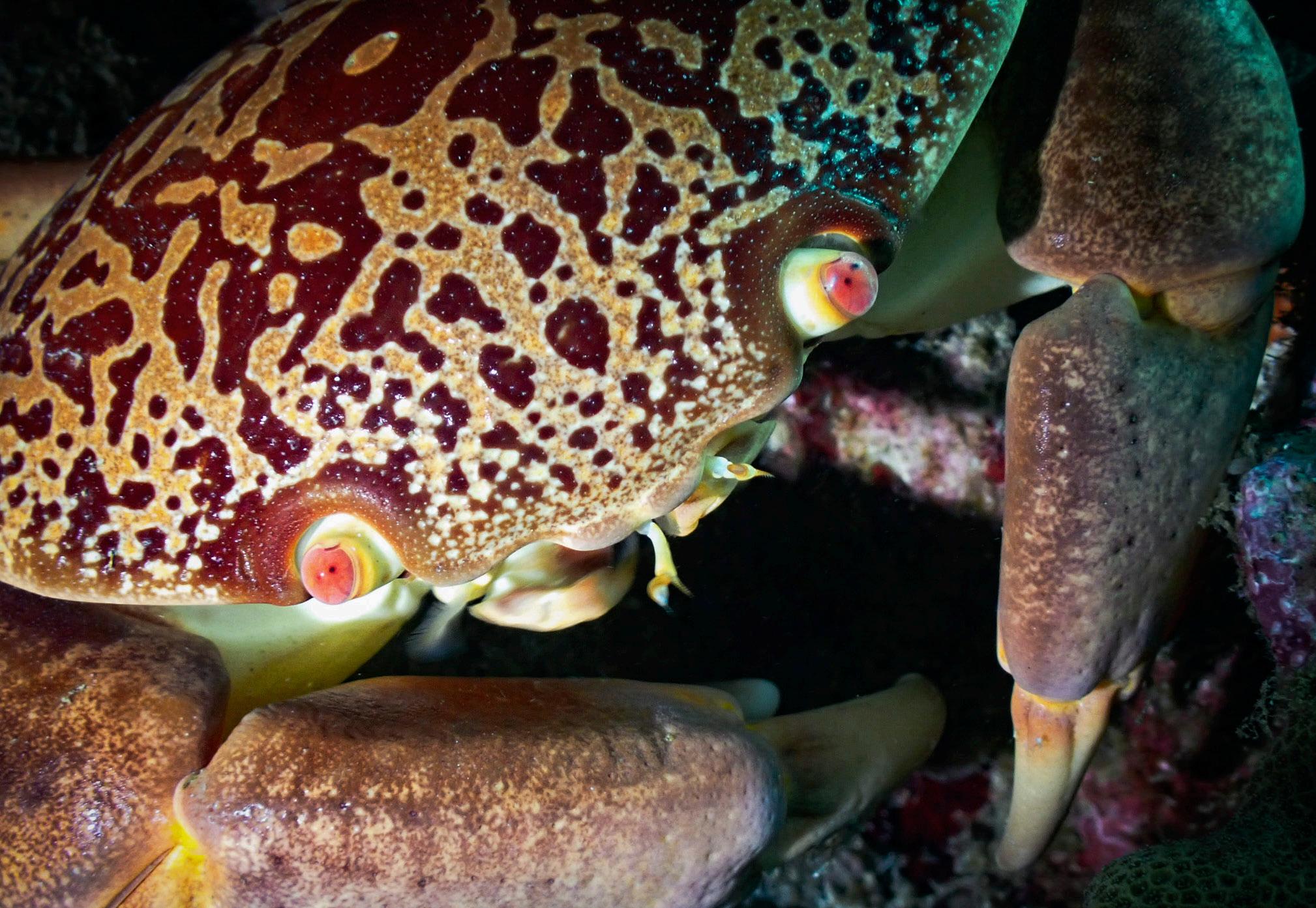

UNDERWATER PHOTOGRAPHY
3rd PLACE: Tiago Santiago Silva | Best of the UAE – 427 pts Hole in the Wall, Khorfakkan, UAE
3rd PLACE: Luan Le Ngoc | Behaviour – 420 pts Anilao, Philippines


UNDERWATER PHOTOGRAPHY
3rd PLACE: Yevheniia Rehush | Creative Underwater Photography – 406 pts Dubai, UAE
3rd PLACE: Yuriy Rakhmatullin | Wide Angle – 406 pts
Dibba, Fujairah, UAE









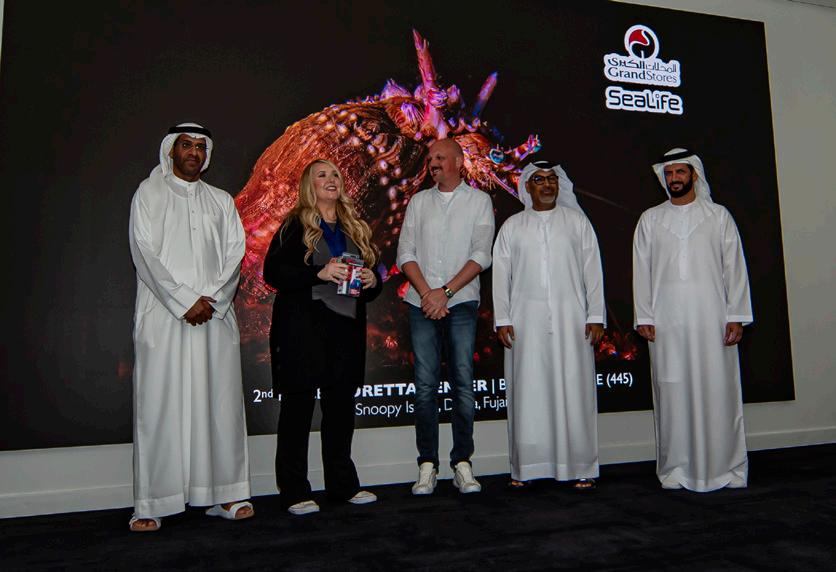

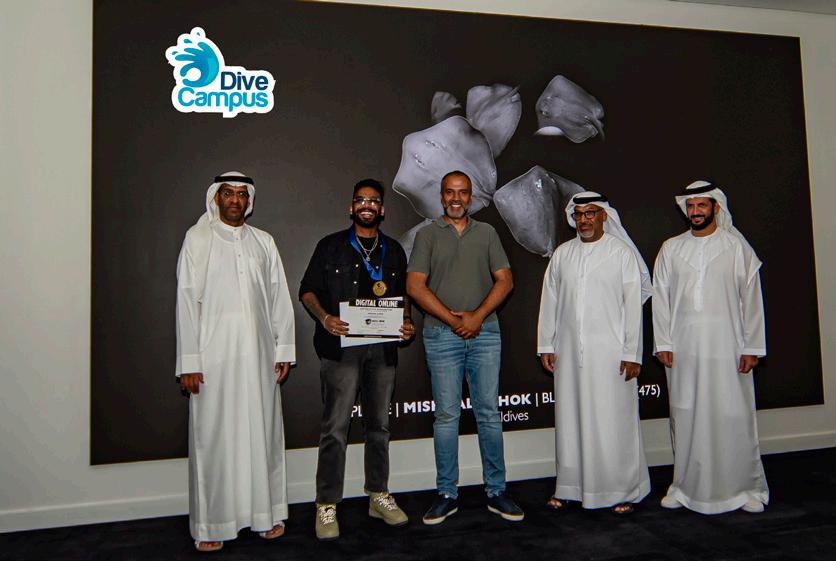


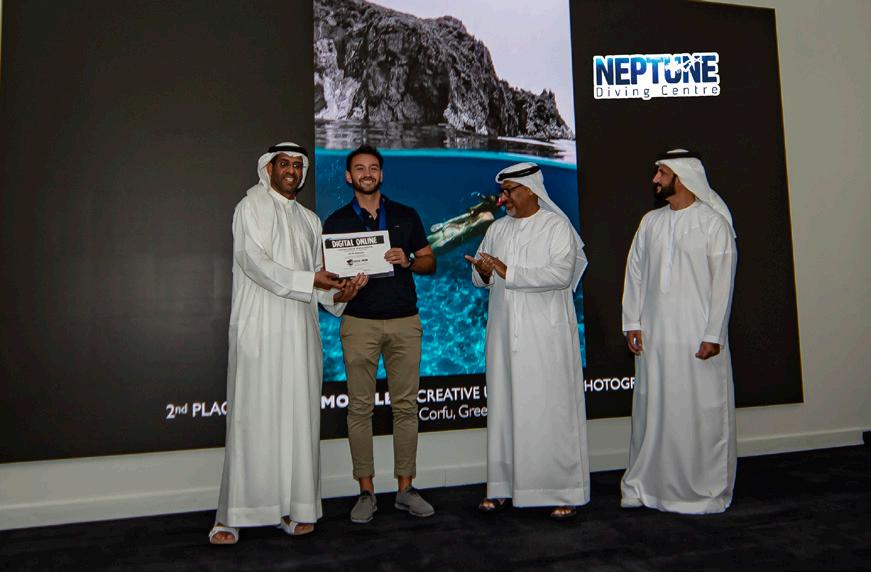
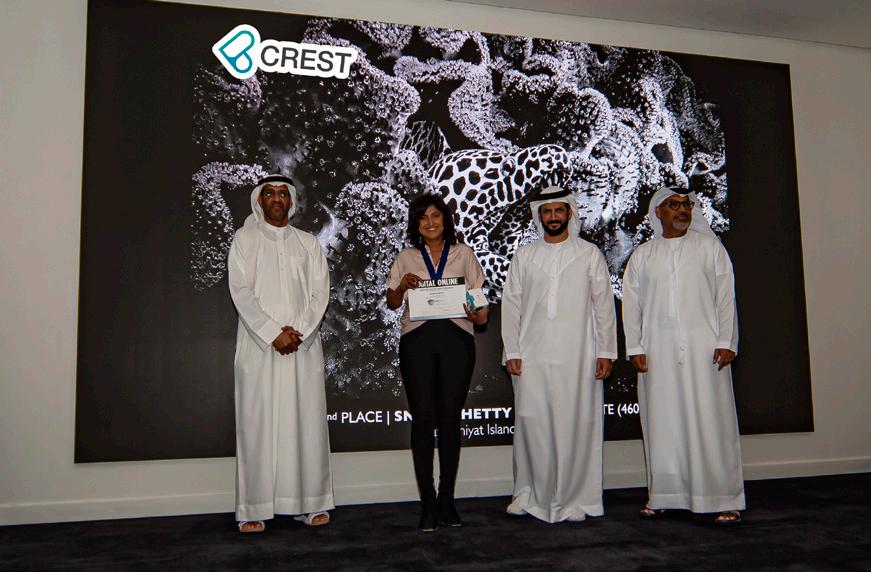


| JUNE 2024
Yuriy Rakhmatullin 3rd Place Wide Angle – 406 pts Prize Sponsor: CREST Diving
Yevhheniia Rehush 3rd Place Creative Photography – 406 pts Prize Sponsor: CREST Diving
Luan Le Ngoc 3rd Place Behaviour – 420 pts Prize Sponsor: Al Mahara Diving Center
Tiago Santiago Silva 3rd Place Best of the UAE – 427 pts Prize Sponsor: XR HUB
Ahmed Alkaabi 3rd Place Macro – 432 pts Prize Sponsor: Goblin Diving Center
Marwa El-Agroudy 3rd Place Black & White – 433 pts (Not present) Prize Sponsor: CREST Diving
Suretta Venter 3rd Place Video Coexistence – 372 pts Prize Sponsor: Sandy Beach Dive Academy
Uzeyr Kamora 2nd Place Wide Angle – 426 pts (Not present) Prize Sponsor: CREST Diving
Felipe Morales 2nd Place Creative Photography – 433 pts Prize Sponsor: Neptune Diving Centre
Suretta Venter 2nd Place Best of the UAE – 445 pts Prize Sponsors: Grand Stores and SeaLife
Kerstin Binoth 2nd Place Macro – 443 pts Prize Sponsor: Goblin Diving Center
Suretta Venter 2nd Place Creative Photography – 407 pts Prize Sponsor: CREST Diving
Arwa Badri 2nd Place Place Video Coexistence – 397 pts Prize Sponsor: Dive Campus
Ahmed Al-Ali 1st Place Macro – 467 pts Prize Sponsor: Grand Stores and SeaLife
Anastasia Demkina 2nd Place Behaviour – 490 pts Prize Sponsor: Grand Stores and SeaLife
Anthony Leydet 1st Place Creative Underwater – 469 pts (Not present) | Prize Sponsor: XR HUB
Mishaal Ashok 1st Place Black & White – 475 pts Prize Sponsor: Dive Campus
UNDERWATER PHOTOGRAPHY
Levente Rozsahegyi 1st Place Wide Angle – 480 pts (Not present) Prize Sponsor: Pelagic Divers Fuvahmulah








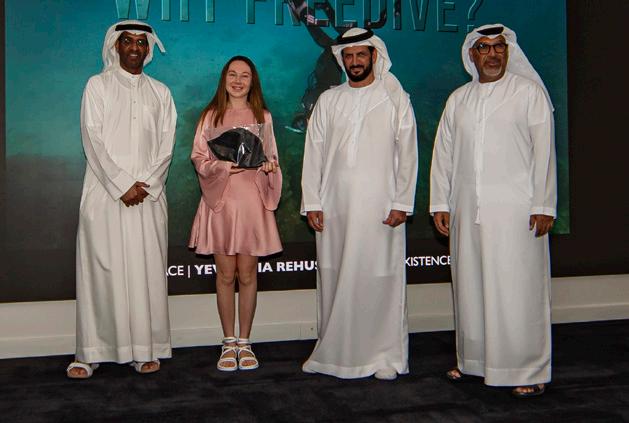


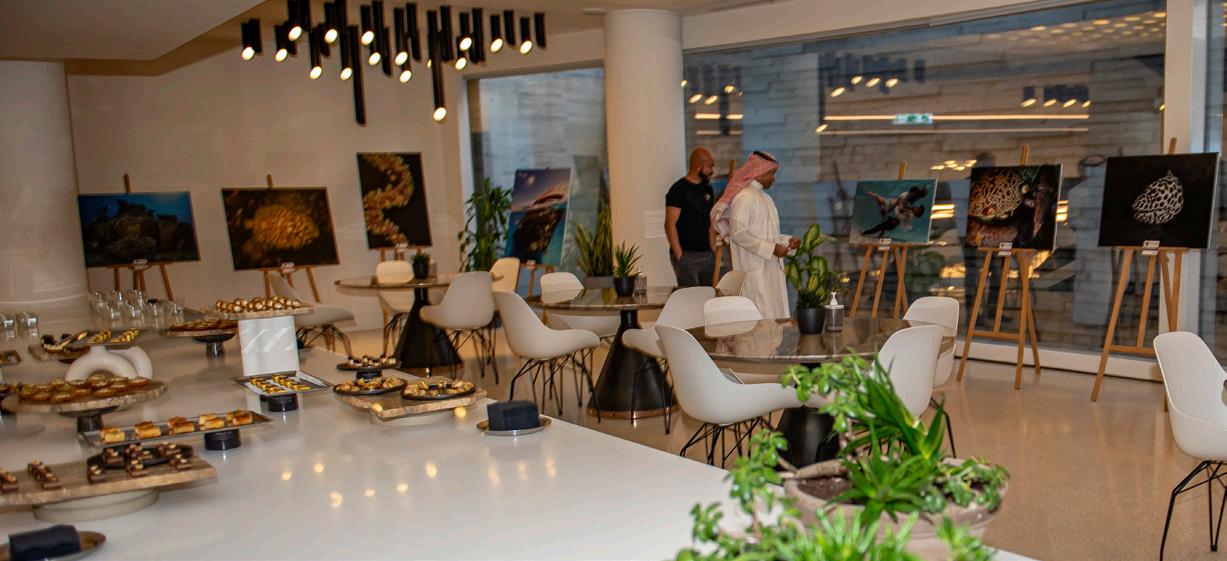 Philippe Lecomte 1st Place Best of the UAE – 488 pts Prize Sponsor: Divers Down
Khalid Alrazooqi 1st Place Behaviour – 521 pts Prize Sponsor: Monster Middle East and GoPro
Yevheniia Rehush 1st Place Place Video Coexistence – 405 pts Prize Sponsor: Monster Middle East and GoPro
Ahmed Al-Ali Overall Digital Online Winning Photographer 2024 – 2,528 pts
Philippe Lecomte 1st Place Best of the UAE – 488 pts Prize Sponsor: Divers Down
Khalid Alrazooqi 1st Place Behaviour – 521 pts Prize Sponsor: Monster Middle East and GoPro
Yevheniia Rehush 1st Place Place Video Coexistence – 405 pts Prize Sponsor: Monster Middle East and GoPro
Ahmed Al-Ali Overall Digital Online Winning Photographer 2024 – 2,528 pts
UNDERWATER PHOTOGRAPHY
Yevheniia Rehush Overall Digital Online Winning Videographer 2024 – 405 pts
Awards Night Audience Fun Raffle Mariia Horstka | CREST Diving Black Hat
Awards Night Audience Fun Raffle
Khawla Alshehhi | CREST Diving Dry Bag
Awards Night Audience Fun Raffle Angela Manthorpe | CREST Diving Dry Bag
Awards Night Audience Fun Raffle Jimmy Gordon | CREST Diving Black Hat
UNDERWATER PHOTOGRAPHY

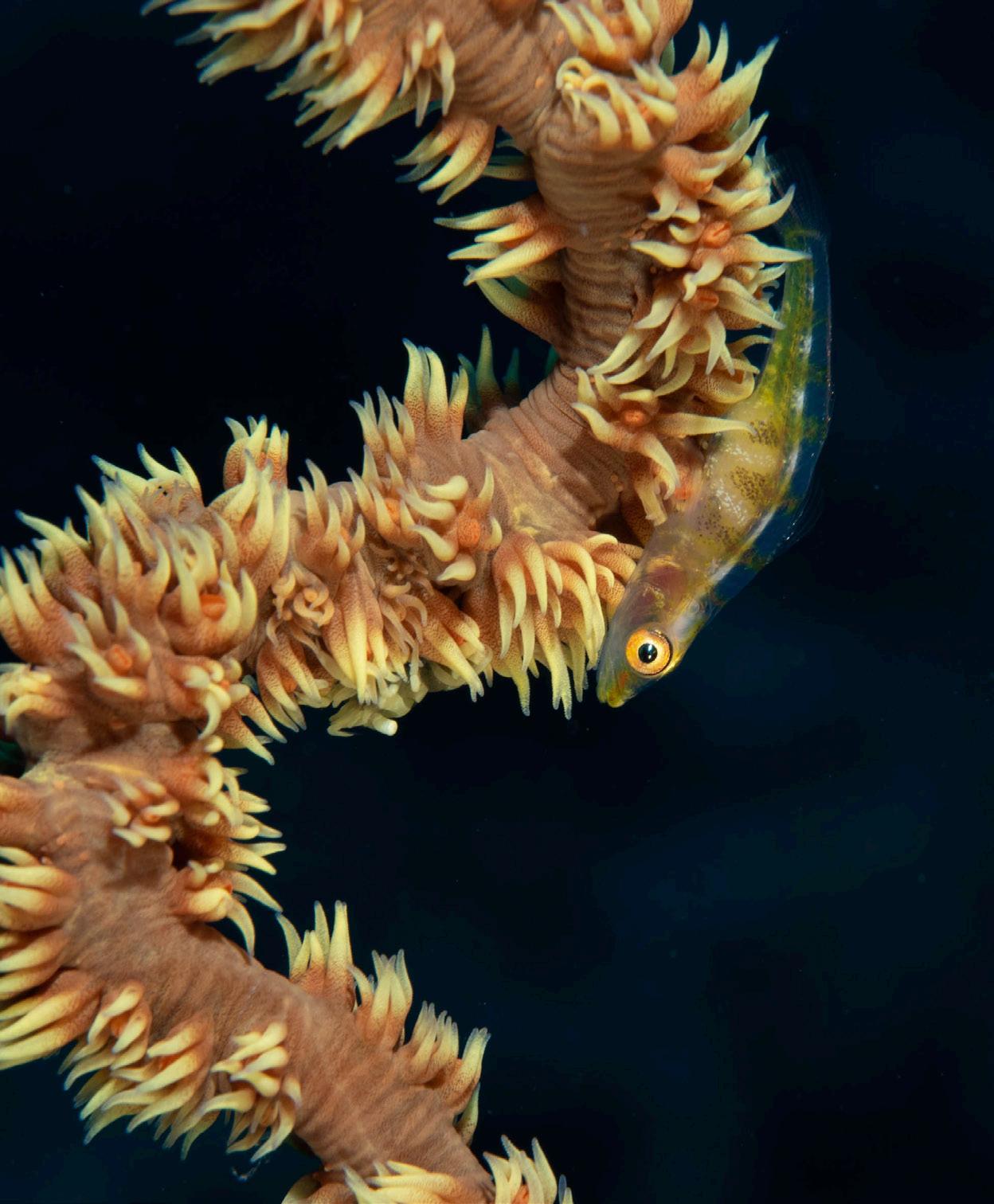
THE PEOPLE’S CHOICE AWARDS
1. Luan Le Ngoc | 1st Place Video People’s Choice Awards
SPONSOR: GOBLIN DIVING CENTER
4 Dives Package to dive the East Coast’s dive sites. Includes tank and weights – www.facebook.com/GoblinDC
2. Ahmed Al-Ali | 1st Place Photography People’s Choice Awards
SPONSOR: AL BOOM DIVING
Two tank boat dive on East Coast (Fujairah) with or without equipment, including tank and weights – www.alboomdiving.com
3. Uzeyr Kamora | 2nd Place Photography People’s Choice Awards
SPONSOR: EMIRATES DIVING ASSOCIATION
The Best of Digital Online’s book, an EDA water bottle, and an EDA
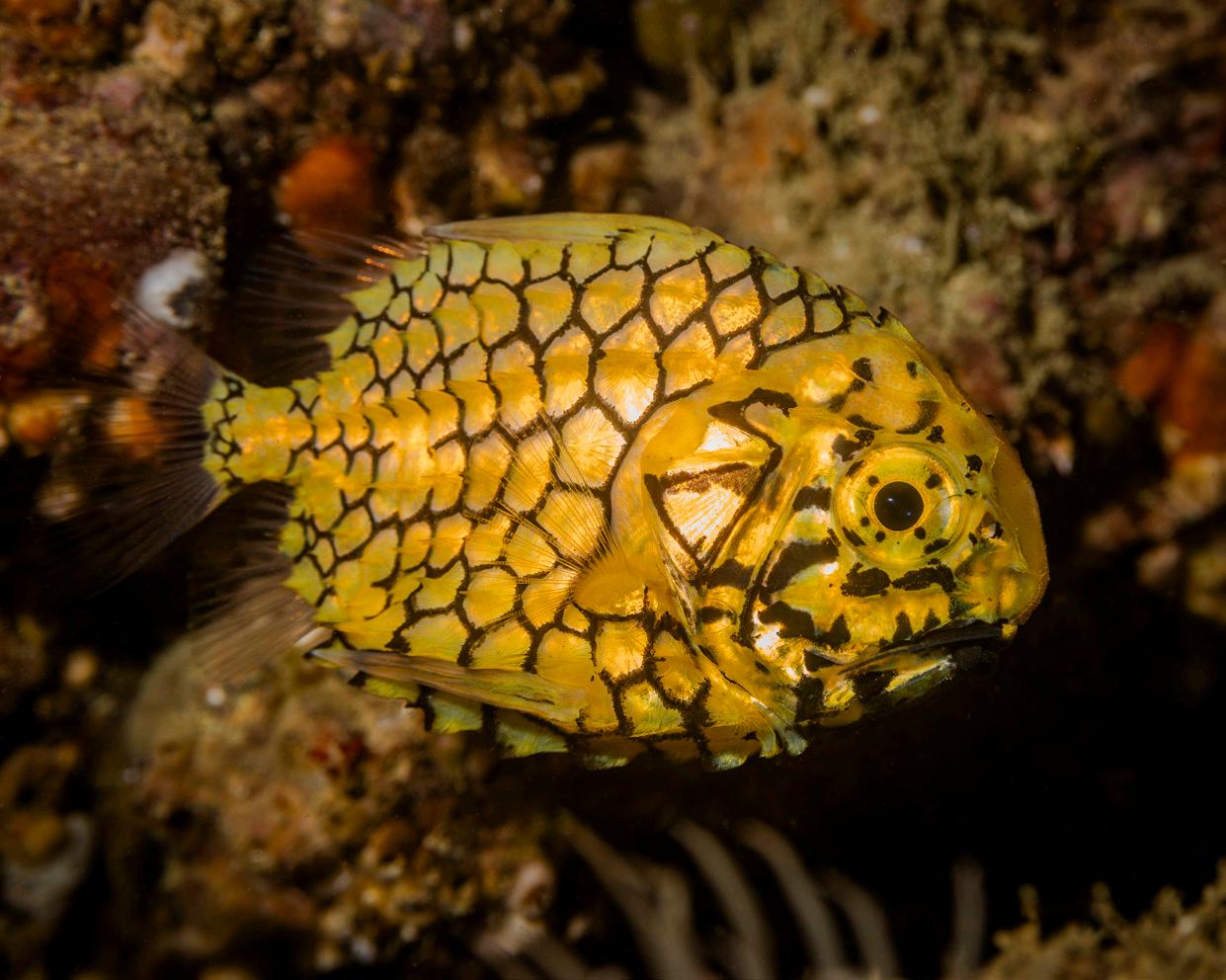

T-shirt design and colour of choice – www.emiratesdiving.com
4. Sneha Shetty | 3rd Place Photography People’s Choice Awards
SPONSOR: CREST DIVING
CREST Dry Bag and CREST Black Hat – www.crestdiving.com
AWARDS NIGHT AUDIENCE FUN RAFFLE
SPONSOR: CREST DIVING
CREST Dry Bag – www.crestdiving.com
1. Khawla Alshehhi
2. Angela Manthorpe
CREST Black Hat – www.crestdiving.com
3. Jimmy Gordon
4. Mariia Horstka
80 DIVERS FOR THE ENVIRONMENT | JUNE 2024
HIGHLY COMMENDED: Anthony Leydet
2nd Place | Macro – 464 pts
Trou aux Biches, Mauritius
HIGHLY COMMENDED: Khalid Alrazooqi
2nd Place | Best of the UAE – 459 pts Fujairah, UAE
HIGHLY COMMENDED: Anthony Leydet
2nd Place | Wide Angle – 477 pts Aqaba, Jordan
HIGHLY COMMENDED: Levente Rozsahegyi
2nd Place | Creative Underwater Photography – 420 pts Maldives

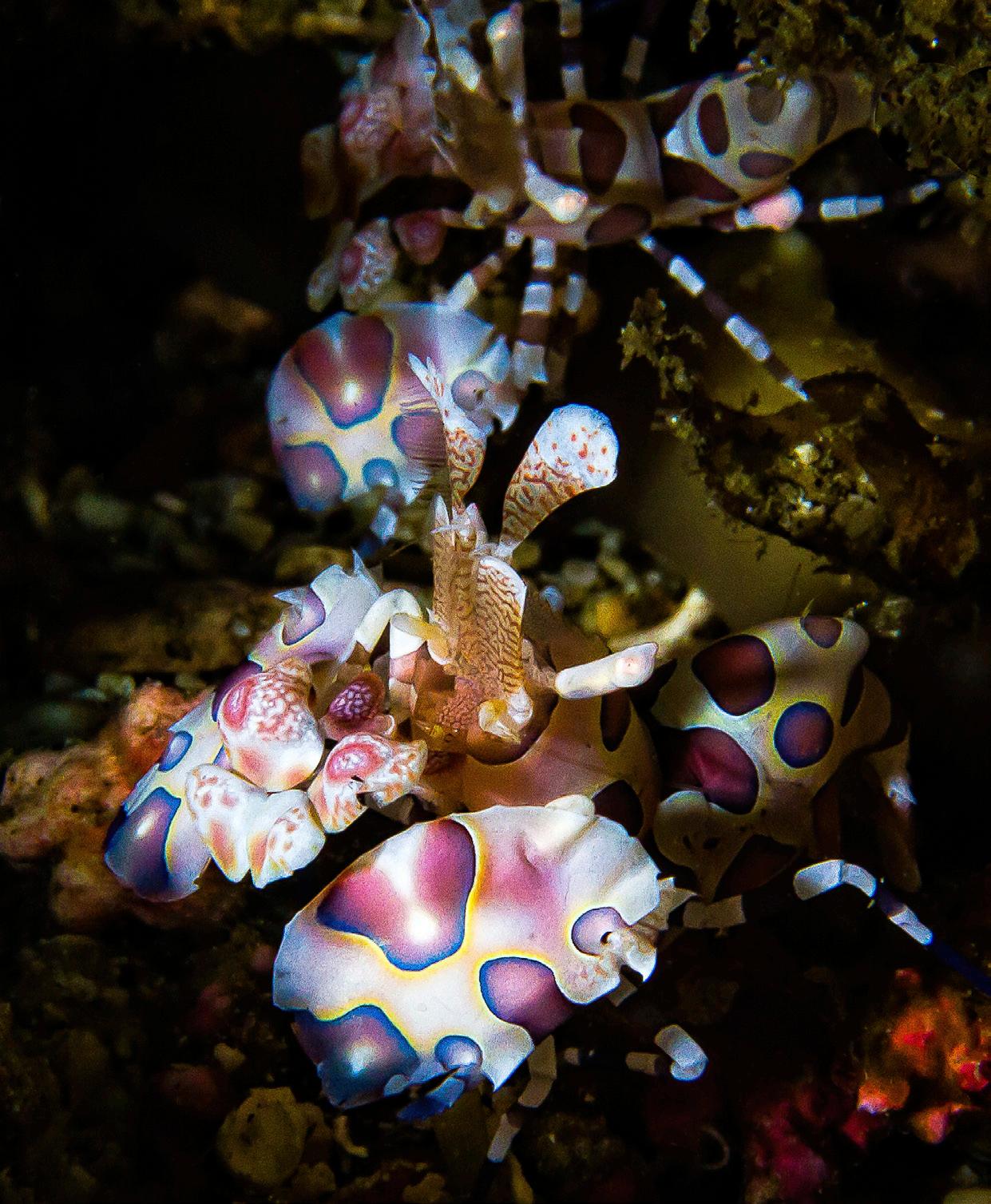
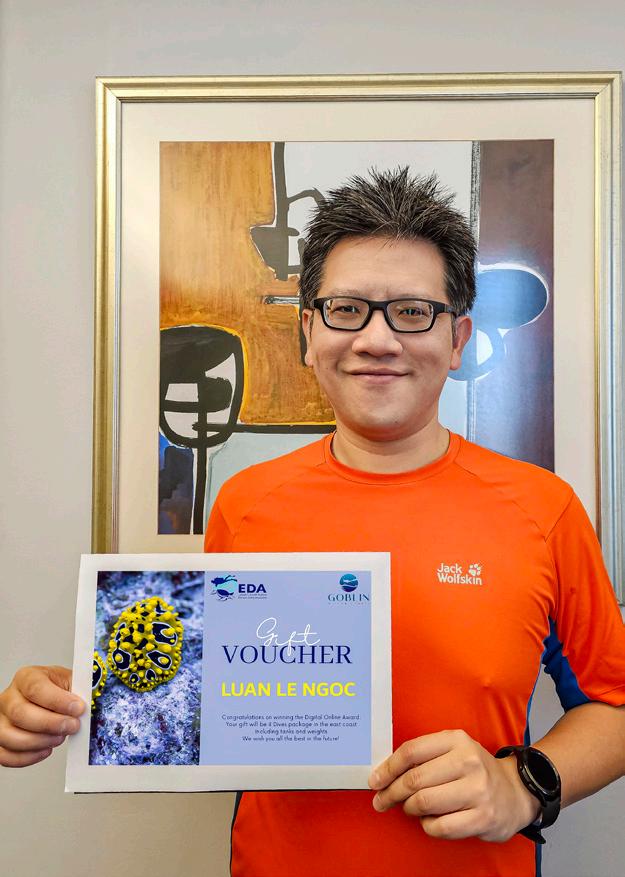



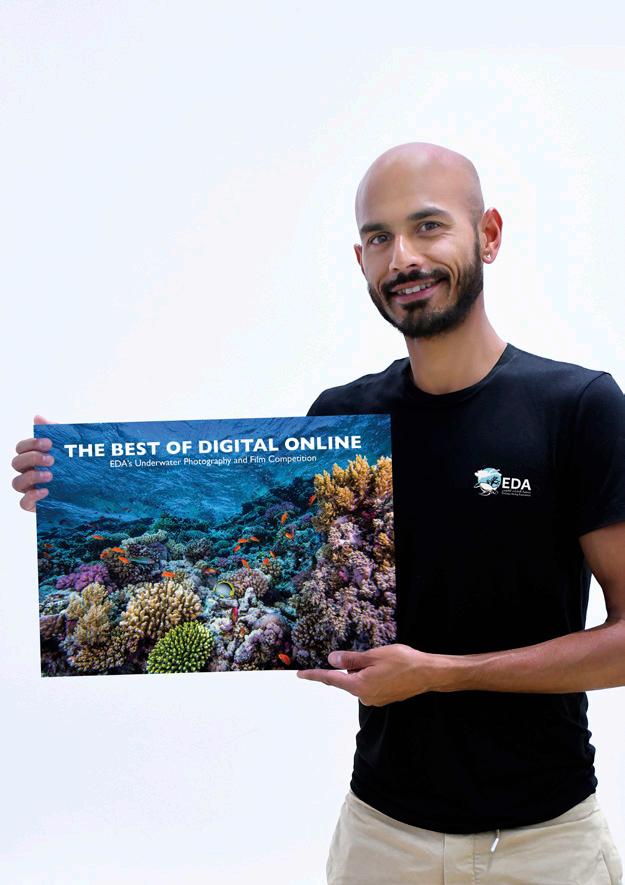

DIVERS FOR THE ENVIRONMENT
HIGHLY COMMENDED: Ahmed Al-Ali
3rd Place | Black & White – 446 pts Aqaba, Jordan
HIGHLY COMMENDED: Philippe Lecomte
3rd Place | Wide Angle – 467 pts Bimini, Bahamas
HIGHLY COMMENDED: Philippe Lecomte
3rd Place | Macro – 453 pts Anilao, Philippines
HIGHLY COMMENDED: Kerstin
UNDERWATER PHOTOGRAPHY
3rd Place | Behaviour – 478 pts Coral Garden, Daymaniyats Islands, Sultanate of Oman
People’s Choice Awards Winner
Luan Le Ngoc: Overall Video Coexistence Prize Sponsor: Goblin Diving Center
People’s Choice Awards Winner Ahmed Al-Ali: 1st Place Photographer Macro Prize Sponsor: Al Boom Diving
People’s Choice Awards Winner
Uzeyr Kamora: 2nd Place Photographer Wide Angle Prize Sponsor: Emirates Diving Association
People’s Choice Awards Winner Sneha Shetty: 3rd Place Photographer Black & White Prize Sponsor: CREST Diving
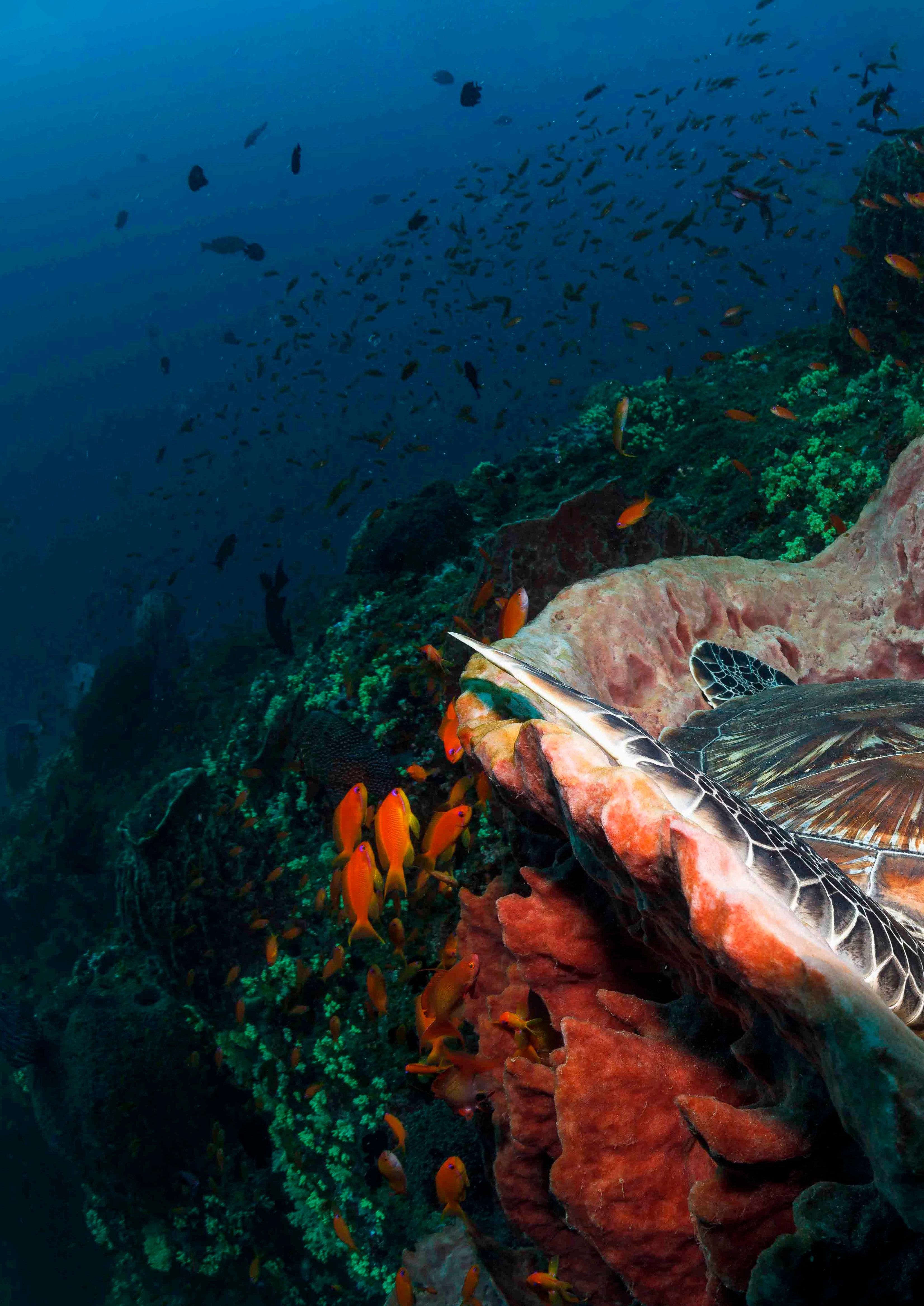
ANDAMAN ISLANDS
FEATURE AND PHOTOGRAPHY CHRIS COMBES
What magnificent depths the waters around the islands reveal themselves to be. Visibility to give a fisheye lens an extended outing, the like of which is rare off the coasts of Fujairah and Oman, and a palette of extraordinary colours on a blue canvas, with majestic corals vying for attention amongst the abundance of marine life.

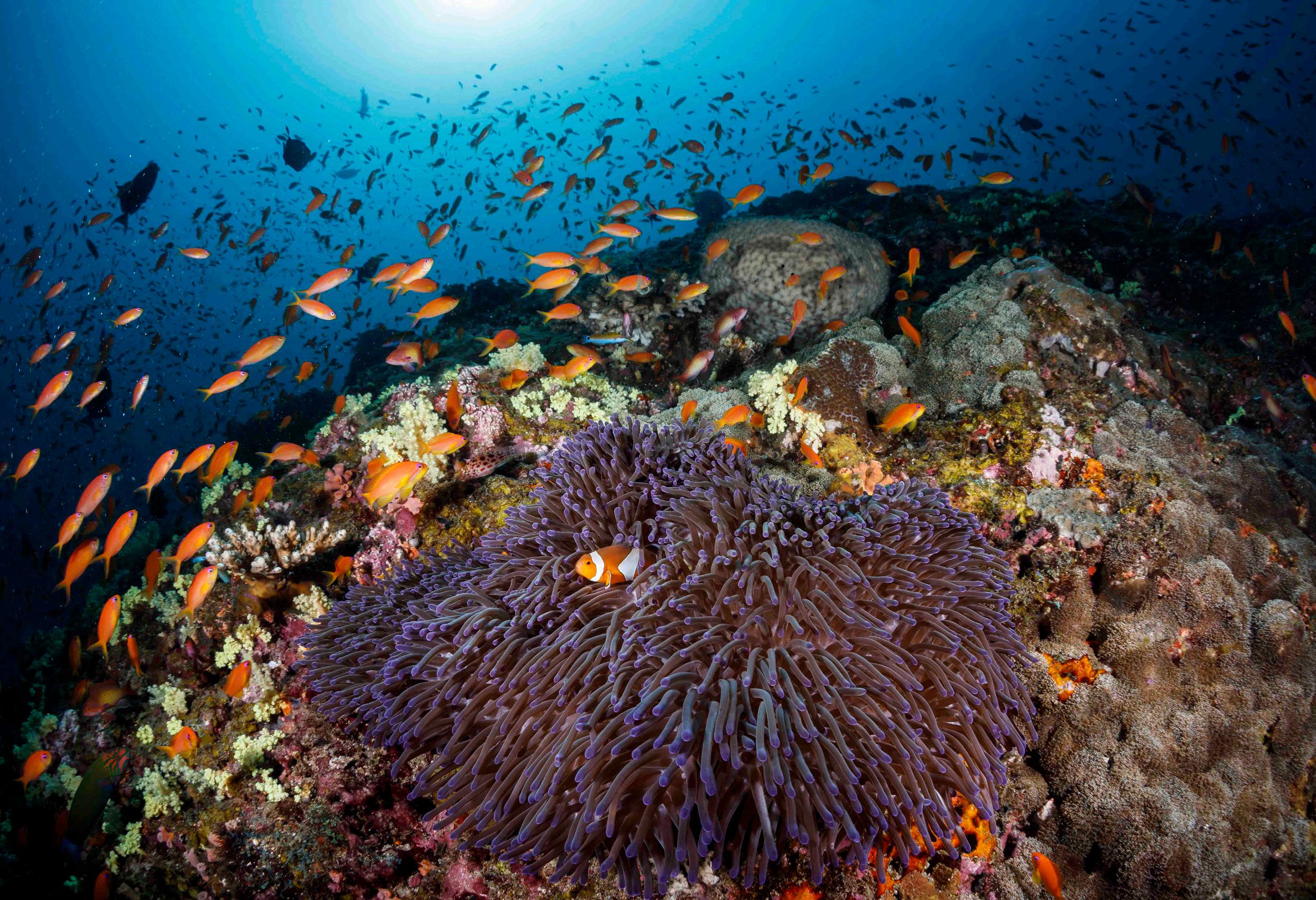



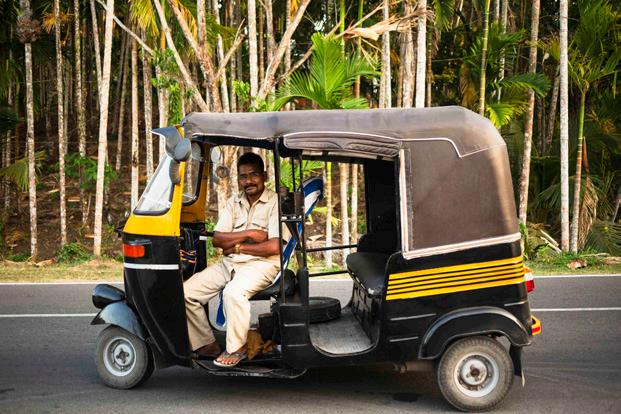

A visit to the Andaman Islands was an idea born out of the ashes of a cancelled trip to the Cayman Islands that came to fruition this year.
WHISTLE STOP TOUR IN KOLKATA
Flying to the Andaman Islands from Dubai requires a transit in India and so another wish list destination makes it on to the itinerary… Kolkata (Calcutta). Visions of gritty street photography soon gives way to traffic jams which drain the spirit and ruthlessly expose the time allotted as woefully insufficient. The outcome is a collection of images more in keeping with Portillio’s Empire than McCullin. Nevertheless, it is a fascinating whistle stop tour of a selection of must-see places of the erstwhile capital of India, namely the Victoria Memorial Hall, Prinsep Ghat, Howrah Bridge, and the Eden Gardens.
FLIGHT TO PORT BLAIR
The early afternoon flight to Port Blair in South Andaman Island manages to touch down in day light despite the distance and easterly trajectory.
And at a decent hour too, thanks to Indian Standard Time remaining in force. This affords ample time to visit the Cellular Jail before retiring to the Seashell Hotel for the evening.
The Neil Island jetty lighthouses welcome the arrival of the early morning ferry from Port Blair laden with supplies, as well as visitors. The ferry is early enough for one of the lighthouses to become an underwater exploration site later that morning, its long legs conjuring up images of Californian kelp forests rising from the depths.
And what magnificent depths the waters around the islands reveal themselves to be. Visibility to give a fisheye lens an extended outing, the like of which is rare off the coasts of Fujairah and Oman, and a palette of extraordinary colours on a blue canvas, with majestic corals vying for attention amongst the abundance of marine life. On land, auto rickshaws carry their passengers to and from the island’s hub along lanes of thick vegetation
which eventually wind down to pathways leading to secluded beaches rich in natural history. And at the end of the day, the Seashell Hotel is again a place of sanctuary to reflect upon the day’s visual splendours.
A TRANSFER TO HAVELOCK AND A CHANGE OF HOTEL
The décor is a mishmash of styles, but serenity is restored through gently swaying high palms that would not seem out of place along a Beverly Hills boulevard. The wooded beach where the dive centre is located effortlessly evokes an Indian Ocean aura. Later, the underwater world does not disappoint.
As the tide ebbs and the evening comes in, Havelock reemerges from its afternoon slumber. The look of joy on a young cricketer’s face just called into bat by the seniors is there for all to see. Tailors are busy, as are café and restaurant owners, mainly for a local clientele. And all the time, the ocean and its world carry on oblivious.
84 DIVERS FOR THE ENVIRONMENT | JUNE 2024 DIVING DESTINATIONS

DIVING DESTINATIONS
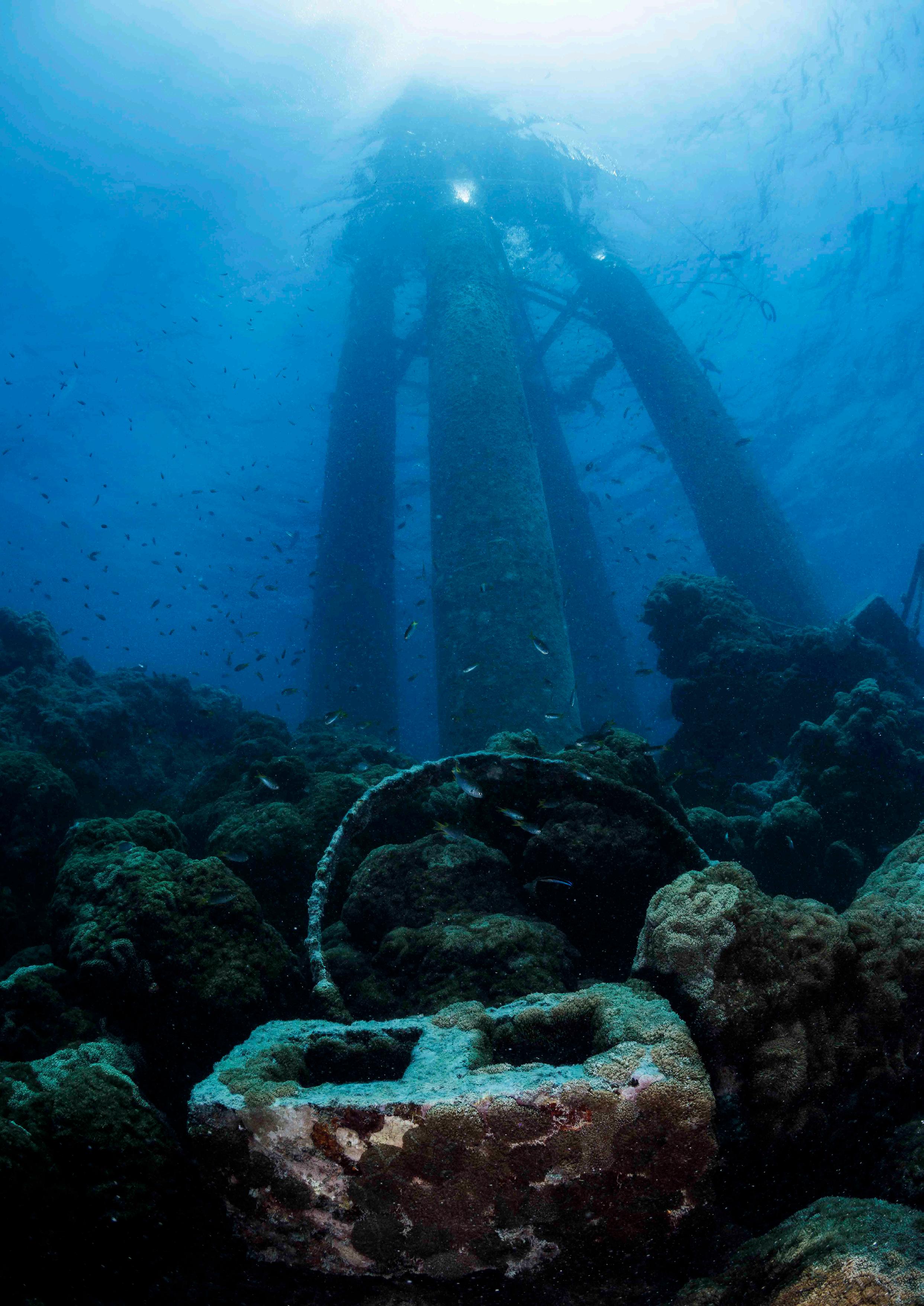
DIVING DESTINATIONS



UNDERWATER DIVING EXPERIENCE
The diving for the trip was organised with Dive India and took place from the 23rd of March to 1st of April. Dive India have dive centres at Neil Island and Havelock, and these are situated at the beach with setup areas that are spacious and in open shade.
At Neil Island we did a total of fourteen dives over 5 days at 8 different sites. The daily meeting time in the mornings was 5am with up to four dives per day depending on the number of divers and conditions, with the boat returning to the centre between dives.
At Havelock we did a total of ten dives over 5 days at 6 different dive sites. The daily meeting time was 6am, with two dives per day. Apart from one site which was shore entry, these were two-tank boat dives.
Dive India operate their own boats which are moored within walking distance from the centres and accessed from the beach through shallow water. Tanks and other equipment are taken to the boats by the staff. Typically, the
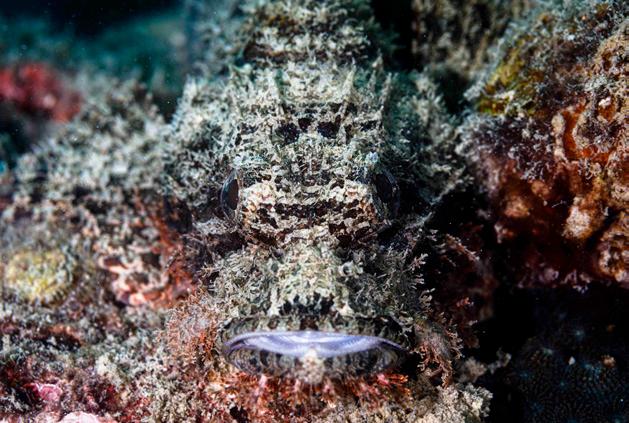

number of divers ranged from either just my buddy and I, up to around ten divers. The dive guides were very professional and Dive India were able to satisfy our request of a private dive guide on all days.
The dive sites from the Neil Island centre ranged from being around 5-15 minutes away by boat, whilst at Havelock, they were around 30-45 minutes away. Depending on the boat, entry was via giant stride or backward roll, and descent to the sites by anchor line. Site depths ranged from around 10m to 30m with nitrox available on request. Most of the time we were the only boat at a dive site.
Visibility on the boat dives was usually excellent. The only site which had poor visibility was the shore dive at Havelock –Nemo Reef – however this was a superb site for macro photography. Temperatures ranged from around 29-30 degrees Celsius at the surface, to 26-27 degrees at deeper climes. The only exception to this was a thermocline on one of the dives when the temperature dropped to a ‘chilly’ 23 degrees at around


23m. Surface conditions were mostly calm as were the dive conditions. On a few dives we did experience current, but not so much as to prevent returning to the anchor line at the end of the dive.
The dive sites were a mix of coral gardens with hard and soft corals, large reefs, multiple reefs separated by sand, ledges, and drop offs. Sea fans and barrel corals were quite common. There is also a wreck dive from Havelock and a special day trip to a dive site at a volcanic island.The marine life was plentiful and included snapper, snakes, rays, turtles, octopus, sweetlips, anemonefish, various shrimps and squat lobsters, scorpionfish, lionfish, jellyfish, pipefish, moray eels, garden eels, bigeyes, squirrelfish, anthias, jacks, bannerfish, butterflyfish, angelfish, fusiliers, wrasses, parrotfish, Moorish idols, nudibranchs, sand gobies, groupers, flatfish, and barracudas amongst others.
87 JUNE 2024 | DIVERS FOR THE ENVIRONMENT GET MORE INFO ON DIVE INDIA https://diveindia.com
DIVING DESTINATIONS

FUVAHMULAH THE SHARK DIVING DESTINATION
FEATURE AND PHOTOGRAPHY PHILIPPE LECOMTE TRANSLATED FROM FRENCH ALLY LANDES
The island of Fuvahmulah is quite unique in the Maldives. The island doesn’t have a lagoon or a coral barrier, so it’s well suited for all pelagics and other sharks.
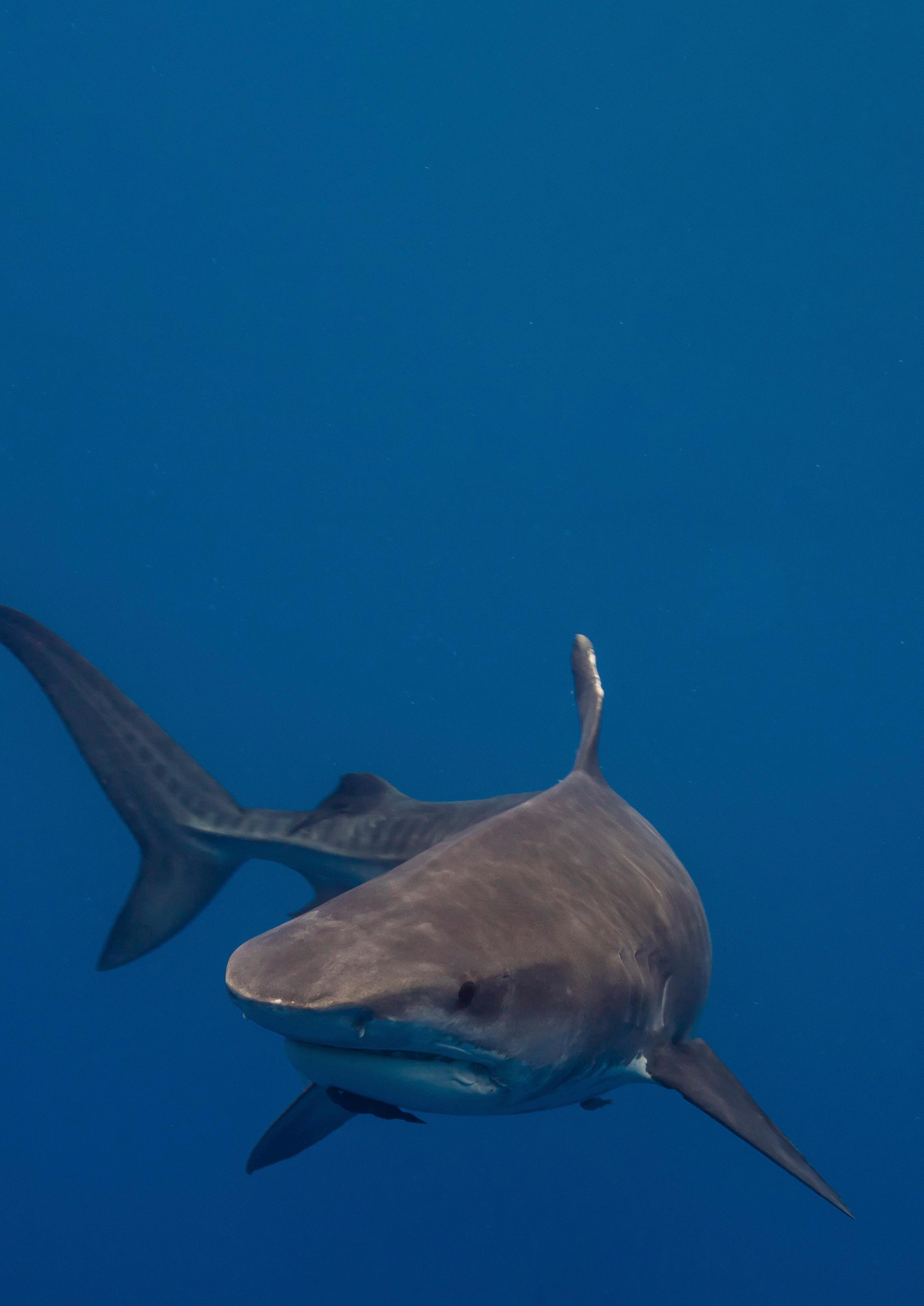
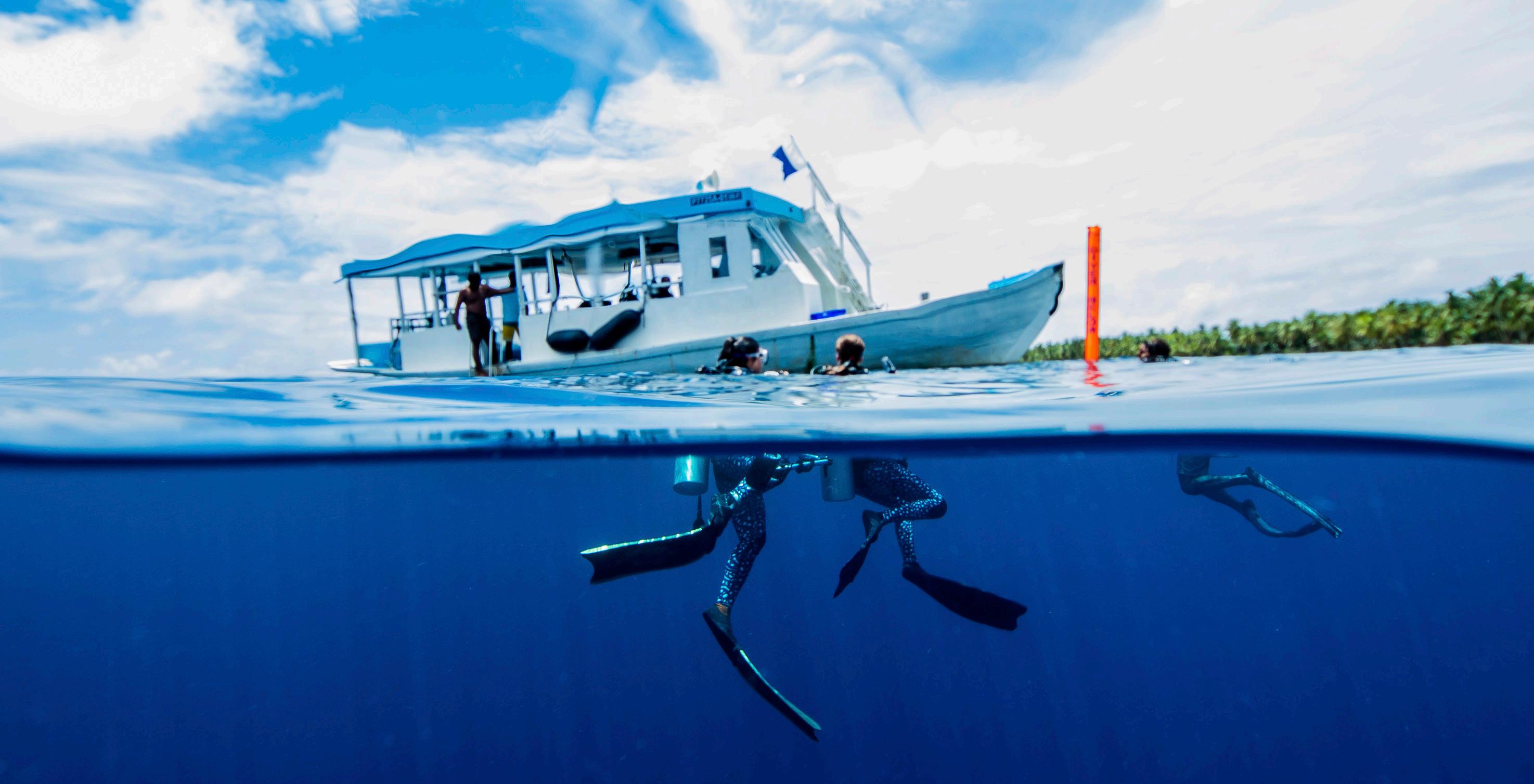

Having gone to lots of macro destinations in my more recent travels, I was really yearning to get back in the water with sharks. I had recently had a conversation with Kathleen Russell from Al Mahara Diving Centre in Abu Dhabi, and she had told me about a place close to the UAE to dive with several shark species and manta rays. This destinations is the one and only Fuvahmulah, a Maldivian island south of Malé.
Malé is only a four hour flight from Abu Dhabi, so without hesitation I decided to take 10 days of vacation to discover this island. Kathleen had also told me that Pelagic Divers had just opened a second dive centre on another island west of Malé, on Ukhulas Island. For this reason, and not to miss out on anything, I decided to book my trip to visit both.
I booked my flight with the UAE’s low cost airline, Wizz Air. There I was, ready to discover the tiger sharks and other big pelagics of the Indian Ocean.
FUVAHMULAH
After travelling a little over 4 hours to Malé, you then have to take another plane to get

to the island of Fuvahmulah which is one of the last islands south of the archipelago. It is an additional one hour flight to get there. You are welcomed on arrival by one of the Pelagic Diver’s team members who is there to take you to your hotel.
The Ataraxis Lodge and Spa is very nice, and relatively new, now in its second year. The rooms can accommodate 2 people comfortably. My room had a king sized bed and there are plenty of places to store all your photo and computer equipment. The rooms have air conditioning, a fan, TV, fridge and a large cupboard. There is also a small balcony. Breakfast, lunch and dinner are served in the hotel’s restaurant.
The team are a friendly bunch and everyone is incredibly helpful and kind. When you arrive at the hotel, the driver stays in contact with you via WhatsApp to give you the day by day itinerary.
It’s a large enough island and it’s possible to rent scooters for $20 a day. You can reach the other end of the island in 15 minutes. There is a lovely restaurant called the Cool Banana
just a stone’s throw from the hotel, and a 2 minute walk will lead you to a superb white sandy beach where you can enjoy the sunset or simply to enjoy the turquoise waters of the Indian Ocean.
It is advisable to bring cash in dollars or euros as not all shops accept credit cards.
The dive centre has 2 large boats nearby. One is at the main port near the airport in the south of the island. Next to the dive centre there are 2 restaurants to grab a bite to eat or drink between the dives. There are 3 dives per day.They consist of a reef dive (20-25m), a drift dive, and a dive with tiger sharks. The order can change as tiger shark dives are planned between all the dive centres and cruise boats of the island. The dive sites take a maximum of 10-15 minutes to get to.
The island of Fuvahmulah is quite unique in the Maldives. The island doesn’t have a lagoon or a coral barrier, so it’s well suited for all pelagics and other sharks.
The coral reef is well protected and mostly made up of hard corals.The majority of the dives
90 DIVERS FOR THE ENVIRONMENT | JUNE 2024 DIVING DESTINATIONS

are wall dives or reef dives. On the southern tip, there is a plateau where thresher sharks, silver tips and other sharks frequently meet.
There are a wide variety of resident pelagics around the island. Grey reef sharks, whitetip reef sharks, thresher sharks, silvertip sharks, and tiger sharks. The island is also a migratory passage. This means that whale sharks and oceanic manta rays are also often spotted.
There is only one slot for the tiger shark dives available per day. These dives provide an income to all the people on the island. This is why all the dive centres share a 30 minute slot on the site each.This dive site is only 3 minutes away from Pelagic’s dive centre as it is at the entrance of the port.
The story was explained that the island inhabitants’ only income came from tuna fishing and shark fishing that was done for the sharks’ livers and meat. The fishermen used to throw the leftovers of their catch directly in the entrance of the port, but in 2008, shark fishing and trade was abolished in the Maldives to allow divers the opportunity to see more sharks, amongst other things, but especially the
tiger sharks which are quite frequent around the island.
Ahmed Inah, Pelagic Divers Fuvahmulah’s owner is passionate about the sea and in particular by the sharks which led him to start the shark dives at Fuvahmulah. Ahmed is also a passionate freediver and provides freediving shark experiences with 2 options to choose from. One is out in the deep blue to see the oceanic or silky sharks, and the second option is to swim directly with the tiger sharks not far from the divers spot. Being a passionate freediver myself as a level one instructor, I tried both the freediving options. It is a very unique experience with these animals in comparison to scuba diving with them. It’s also a good alternative to finish up my time on the island as there is a 24 hour no flight time in the Maldives. After my 5 days on Fuvahmulah comes to an end, it is time to take the plane to Malé, this time to jump on a ferry towards Ukhulas Island, one hour west of Malé.
UKHULAS ISLAND
Ukhulas is a much smaller island with a lot of average priced accommodation. There are some bed and breakfasts and some small
hotels, but there are no 5 star hotels available. The island is however growing with the tourism demand. The small local island character may one day disappear because of it.
Ukhulas can be explored on foot in just 20 minutes. There are lots of restaurants, souvenir shops and several small supermarkets. You can find just about anything in the supermarkets from local fruit, pharmaceuticals, USB cables and electronics, or T-shirts and other memorabilia.
To the right of the port, under the boat jetty, you will see several nurse sharks patiently waiting for the return of the fishermen to enjoy an easy meal. Further right still, there is another small jetty overlooking the sea where there are several blacktips patrolling the reef.
Next up, I arrived on the island of Thol Jale where the Beach Veli Lodge manager welcomes you with his warming smile and good humour. Not far from the lodge, the dive centre is run by a divemaster and an instructor that provide you with the complete itinerary of the next few days to follow. With the island being so small, the walk from the hotel to the boat is done in less than 5 minutes.
91 JUNE 2024 | DIVERS FOR THE ENVIRONMENT DIVING DESTINATIONS
DIVING DESTINATIONS


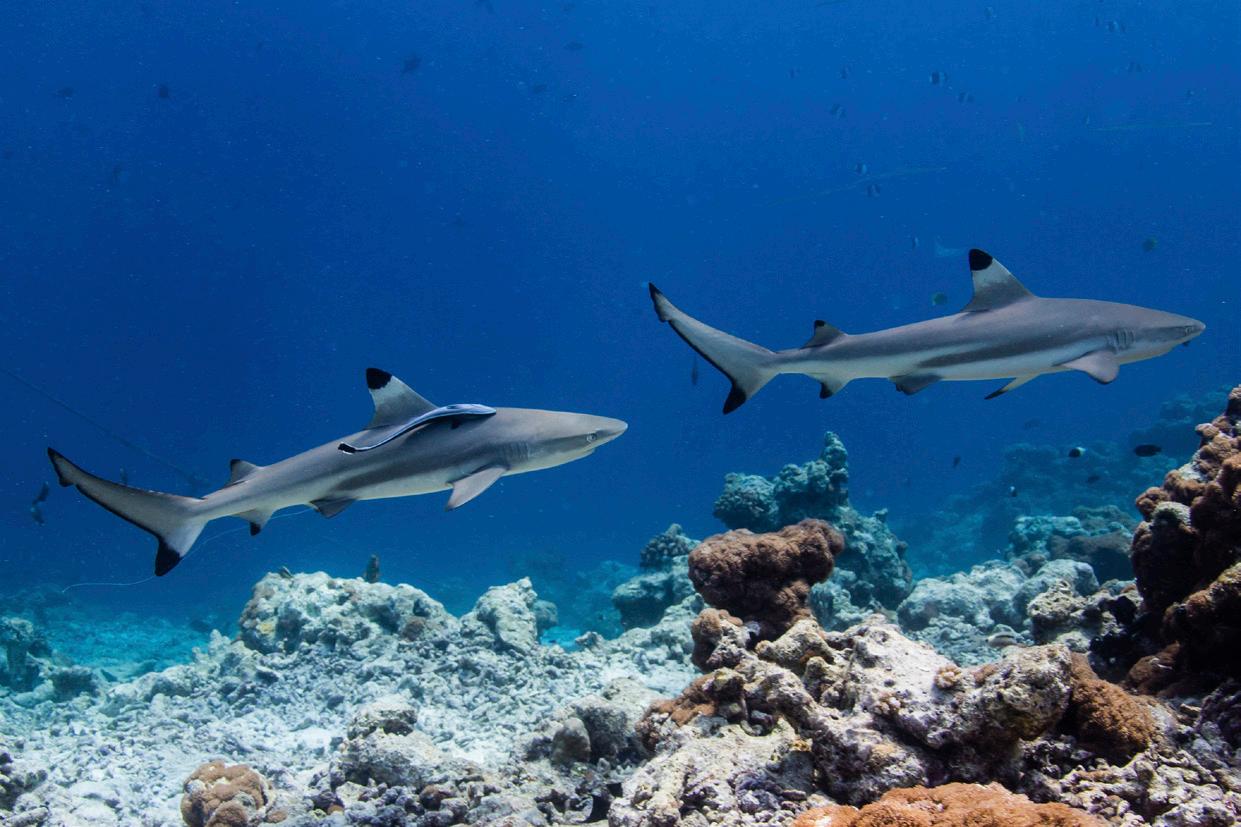
There are a number of great dive sites around Ukhulas and they offer a variety of options.
8 MARCH
MAAYA THILA
Maaya Thila is a large plateau that starts at 5-6 metres from the surface. The sides drop down to 30m-40m, and then continue to descend deeper. There are different caves and arches all around the plateau to explore. This site is best done in 2 dives as it is a large area and there is
so much activity to see, such as whitetips, grey reef sharks, hunting bonitos, glass fish amongst the arches, to name a few.
VELIDOO REEF
This reef dive has a drop off that ends on sand at 20-25 metres. At the end of the dive, you will be rewarded with a spectacular display of table corals. The reef runs along East Little Lagoon which is 6-8 metres from the surface, where these beautiful corals are found.
9 MARCH
KANDU NORTH PASS
Kandu North Pass connects the sea with a large lagoon. It is a drift dive with a strong current which is great as you never have to fin. Along the drop off, there are lots of enclaves you can easily stop at for a break and admire the many gorgonian fans. Large Napoleon fish, whitetips, grey reef sharks, and schools of Jacks are just some of the marine life you may see here.
92 DIVERS FOR THE ENVIRONMENT | JUNE 2024
ABOVE L-R: Nurse shark (Ginglymostoma cirratum), Tiger shark (Galeocerdo cuvier); and Blacktip reef sharks (Carcharhinus melanopterus). OPPOSITE PAGE L-R: School of convict surgeonfish (Acanthurus triostegus); Maldive anemonefish (Amphiprion nigripes) and Dominos (Dascyllus trimaculatus); Hawksbill turtle (Eretmochelys imbricata); Yellowback anthias (Pseudanthias evansi); The beautifual table corals at Velidoo Reef.
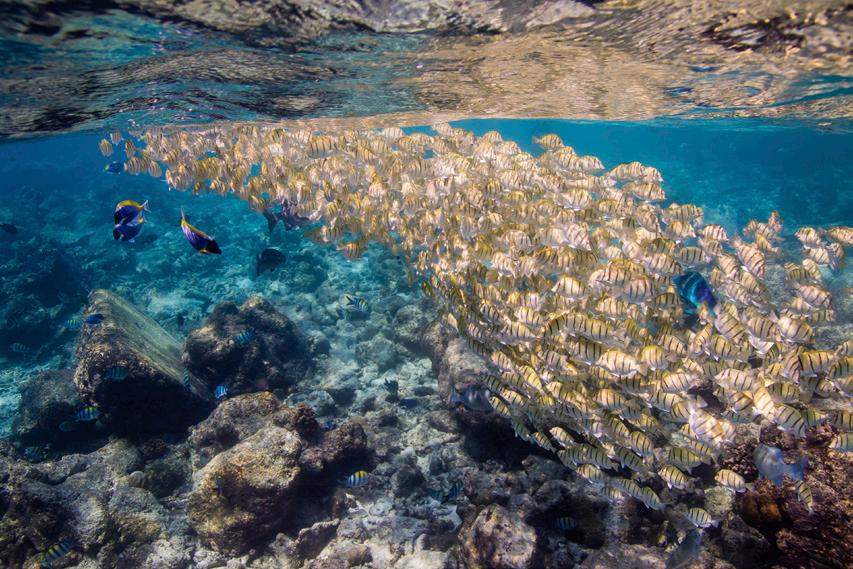
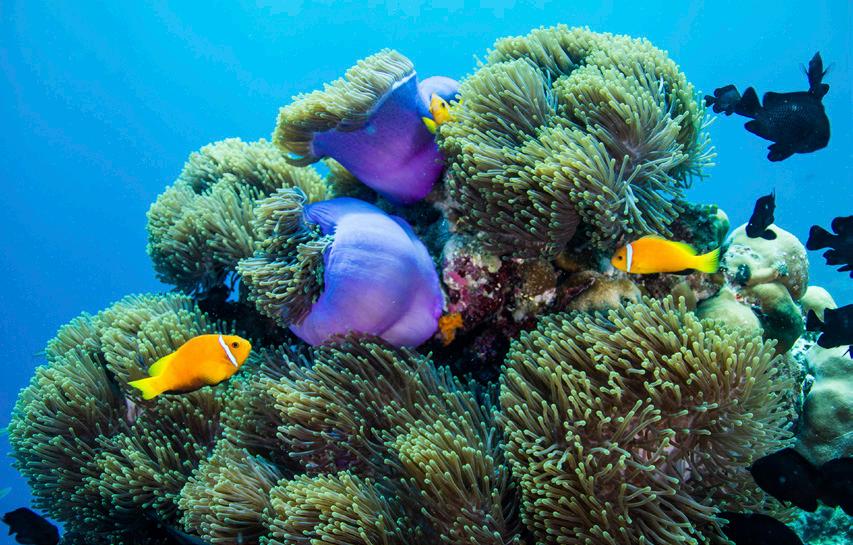
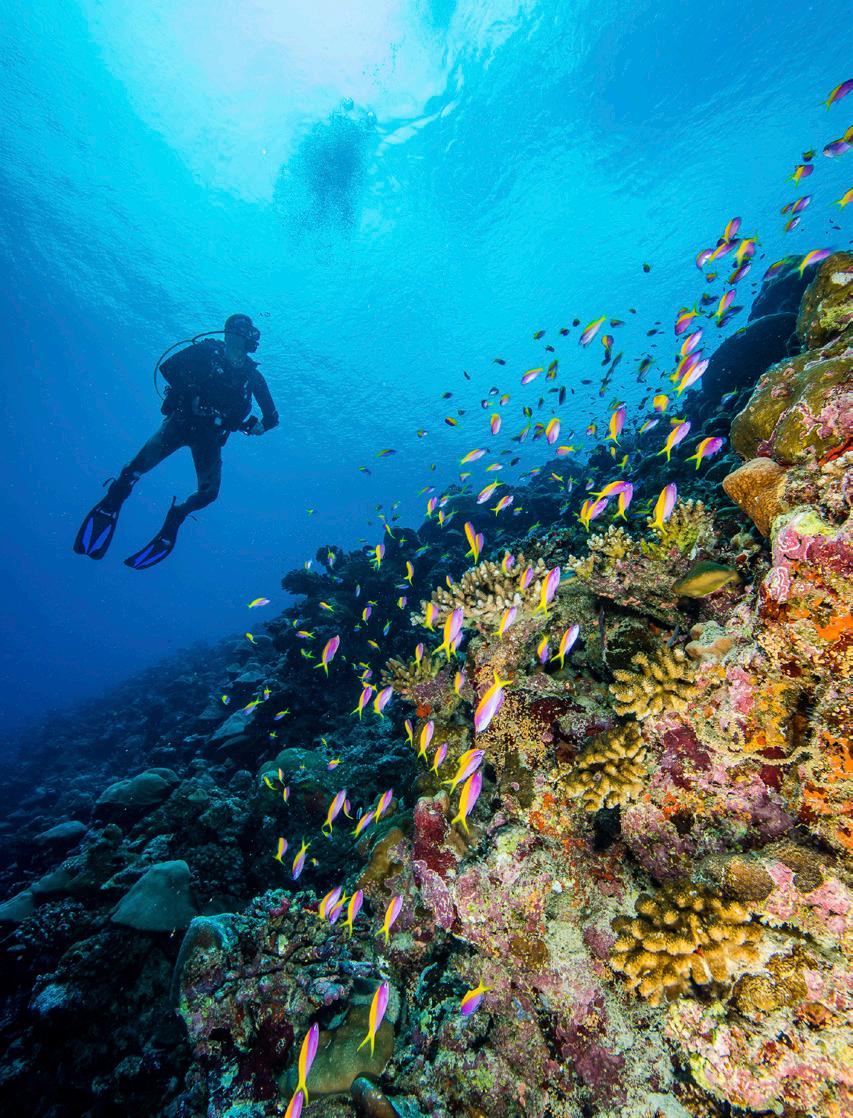
FUSHI PINNACLE
Fushi Pinnacle is a small peak along a reef that forms a very small island just 2 minutes from Ukhulas. This site is known for its octopus, grey reef sharks, snake eels, and Napoleon fish.
10 MARCH
En route to our first dive site, we got to see 3 manta rays feeding at the surface from our boat.
PINNACLE
We saw grey reef sharks, whitetips, bonitos, and a turtle. During our safety stop on the plateau, there was a large carpet anemone with hundreds of clownfish, a titan triggerfish eating a seashell, and a big scorpionfish.
HASA THILA
This drift dive was very pleasant and not as strong as that of Kandu North Pass. Along the

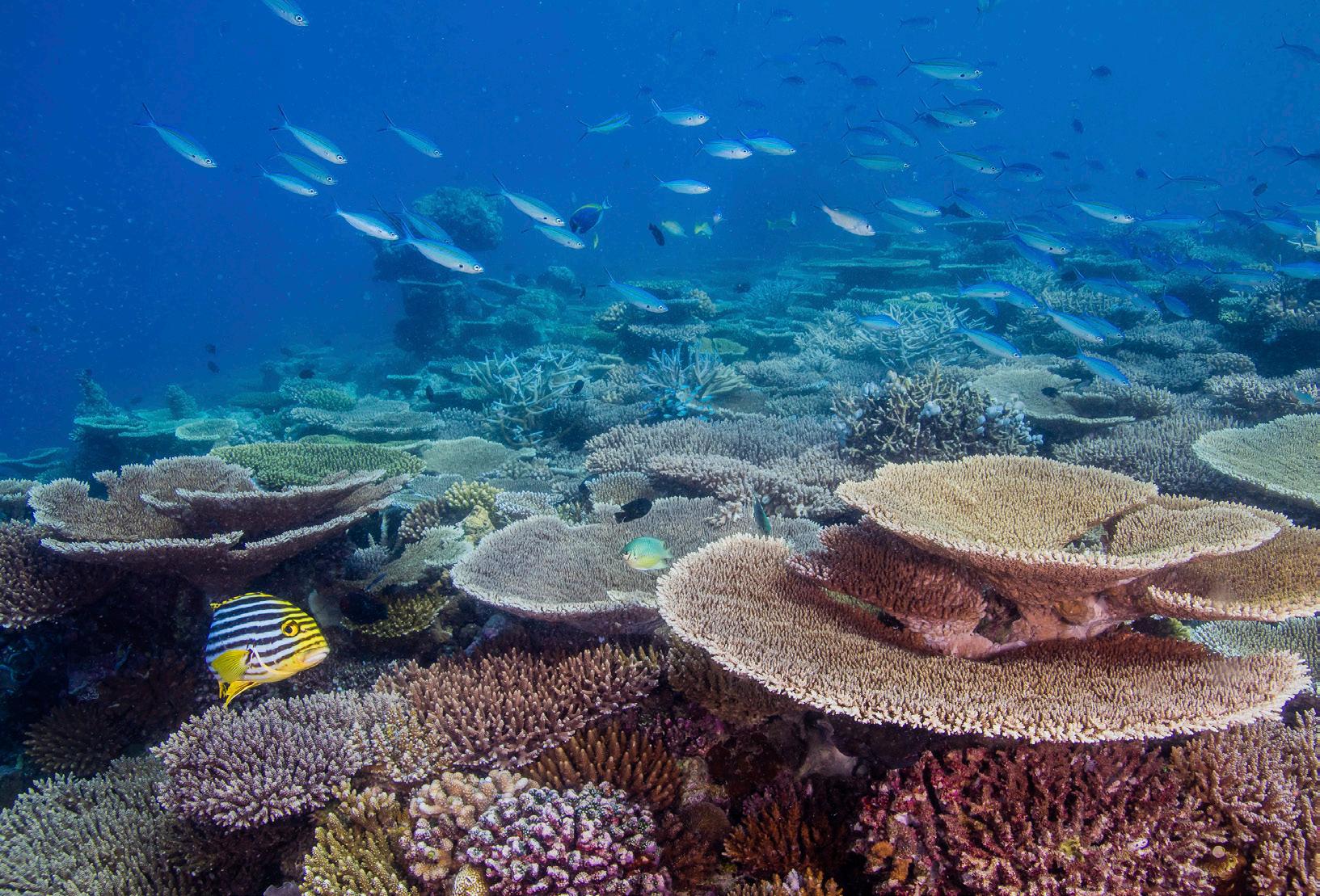
drop off you will get to admire many giant gorgonians and explore the enclaves where soldier fish and other squirrel fish always hang out. I got to see a large nurse shark sleeping, a whitetip in a cave, lobster, and a lot of big snappers.
IN CONCLUSION
This trip made me discover another facet of the Maldives I had not experienced before. I was able to visit 2 very local islands that could easily have been 5-star resorts with their white sandbanks alone. Maldivians are very helpful and remain discreet at the same time.
I was also able to enjoy some freediving experiences in the lagoons and with sharks, turtles and other tropical marine life which are still so easily encountered in the Maldives. I really got to make the most of this visit.

93 JUNE 2024 | DIVERS FOR THE ENVIRONMENT PELAGIC DIVERS FUVAHMULAH www.instagram.com/pelagicdivefuvahmulah www.facebook.com/Fuvahmulahdivers www.pelagicdiversfuvahmulah.com
DIVING DESTINATIONS
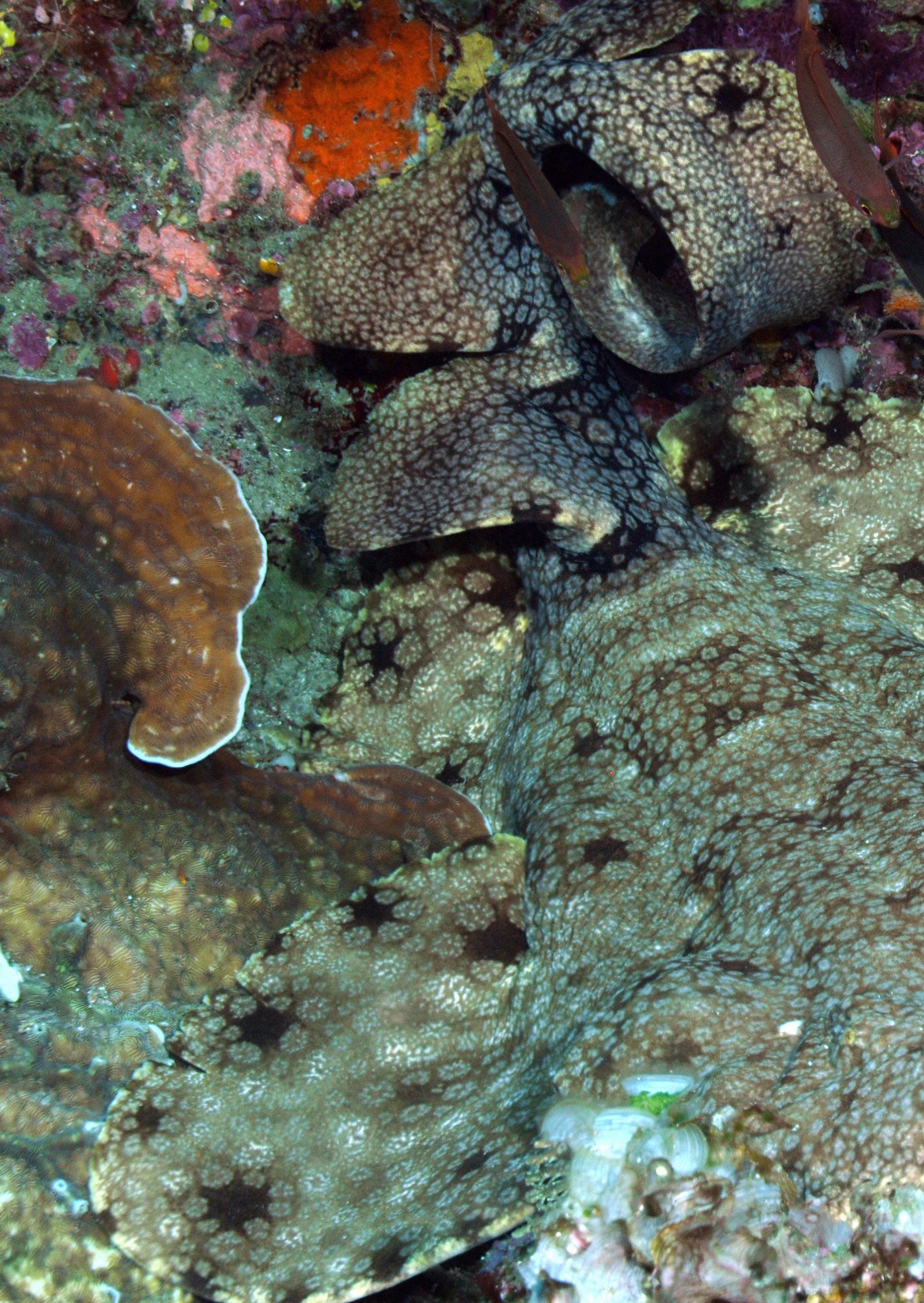

DISCOVERING RAJA AMPAT
A BIODIVERSE PARADISE FOR SCUBA DIVERS
FEATURE KATHLEEN RUSSELL
PHOTOGRAPHY PETER MAINKA AND XANDER RUSSELL – PADI JR DIVEMASTER
Raja Ampat is more than just a diving destination, it is a testament to the remarkable marine biodiversity and the importance of conservation. For divers and nature lovers alike, Raja Ampat offers a truly memorable experience to an underwater world that remains largely untouched by time, a beautiful haven for those seeking to connect with nature in its most pristine form.
Cover photo by Peter Mainka – Indonesian Wobbegong shark


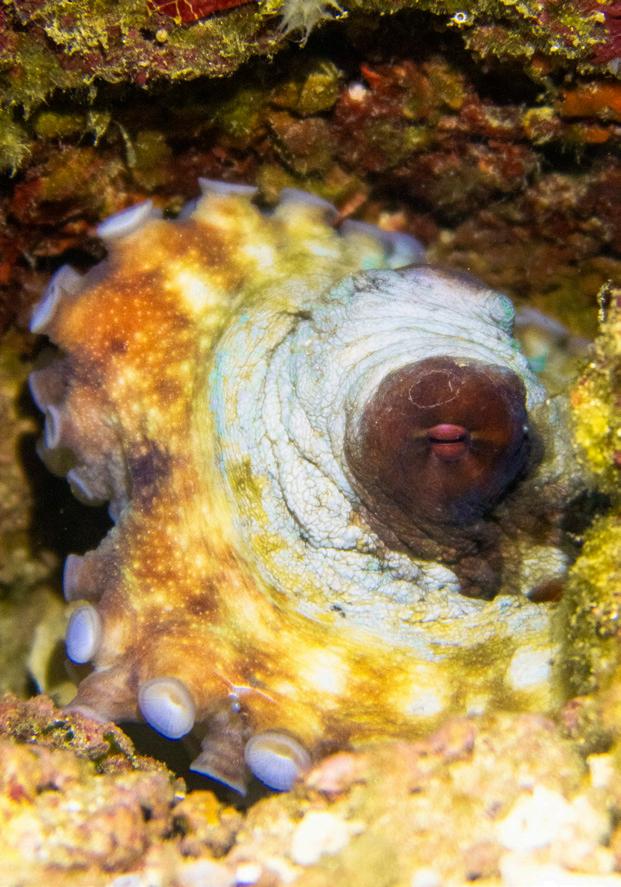
Divers nowadays have explored a wide reach of ocean and still have a satiation for the untouched coral reefs and marine habitat. One such far-off site is Raja Ampat, a mecca for enthusiastic ocean lovers.
Raja Ampat is an archipelago situated off the northwest area of Bird's Head Peninsula in Indonesia's West Papua province. Is this place considered the last untouched frontier? Raja Ampat means “Four Kings”. It has over 1,500 small islands and sandy beaches wrapped around the four main islands of Batanta, Misool, Salawati, and Waigeo. Having just made the long trek from the UAE to West Papua, a group of us intrepid divers finally reached our dream destination hoping to seek the underwater adventure in one of the most
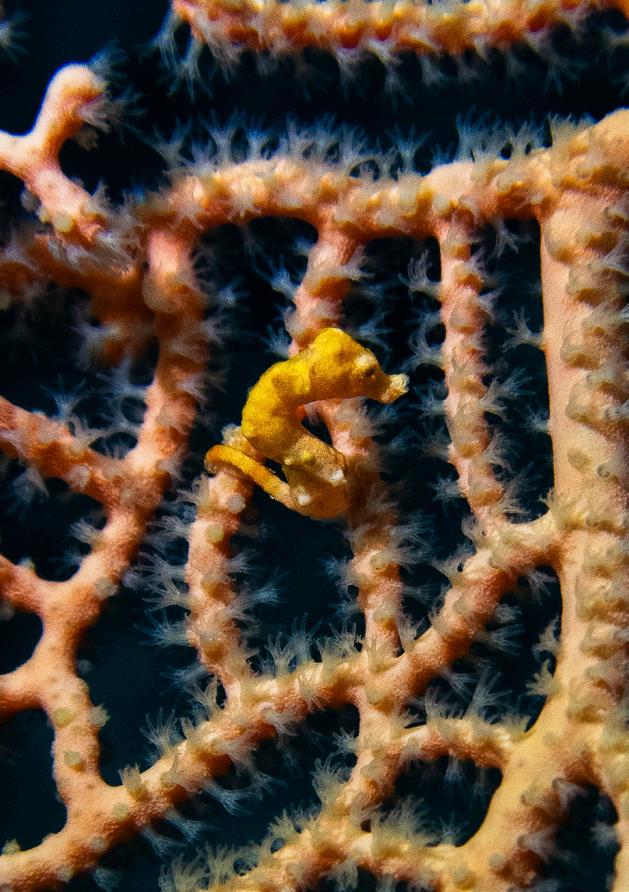
biodiverse marine ecosystems in the world.
THE BIODIVERSITY OF RAJA AMPAT
Due to its nutrient rich waters, Raja Ampat's waters are part of the Coral Triangle, a region recognised for having the richest marine biodiversity on the planet. This area has over 1,500 species of fish, 700 species of molluscs, and 540 species of hard and soft corals. It converges with the waters of the Indian and Pacific Ocean, making this archipelago vibrantly unique and diverse.
One of the most important marine ecosystems is the coral reefs. In Raja Ampat, we not only see these coral reefs as colourful and abundant, but also resilient as we hardly encountered any bleaching evidence on our visit in March. The

reefs are exposed to temperature variations of 6-12ºC in difference within 24 hours, thus potentially making them more adaptable to these fluctuating temperatures and climate change. But despite this hopeful outlook, we still witness the onslaught of marine debris found in many of the dive sites that is just small enough to slip through our hands. We need to be more vigilant in monitoring any coral bleaching event as NOAA has announced in mid-April that we are heading to the 4th mass coral bleaching event this year. And with the El Nino climate phenomenon, the weather patterns may bring about warmer waters across the tropics.
A DIVER’S PARADISE
It is cliché when we mention that this is one
96 DIVERS FOR THE ENVIRONMENT | JUNE 2024
DIVING DESTINATIONS
ABOVE: Nudibranchs (Chromodoris annae) BOTTOM ROW: Yellow boxfish, octopus, Denise’s pygmy seahorse, and mantis shrimp. All photos by Xander Russell.
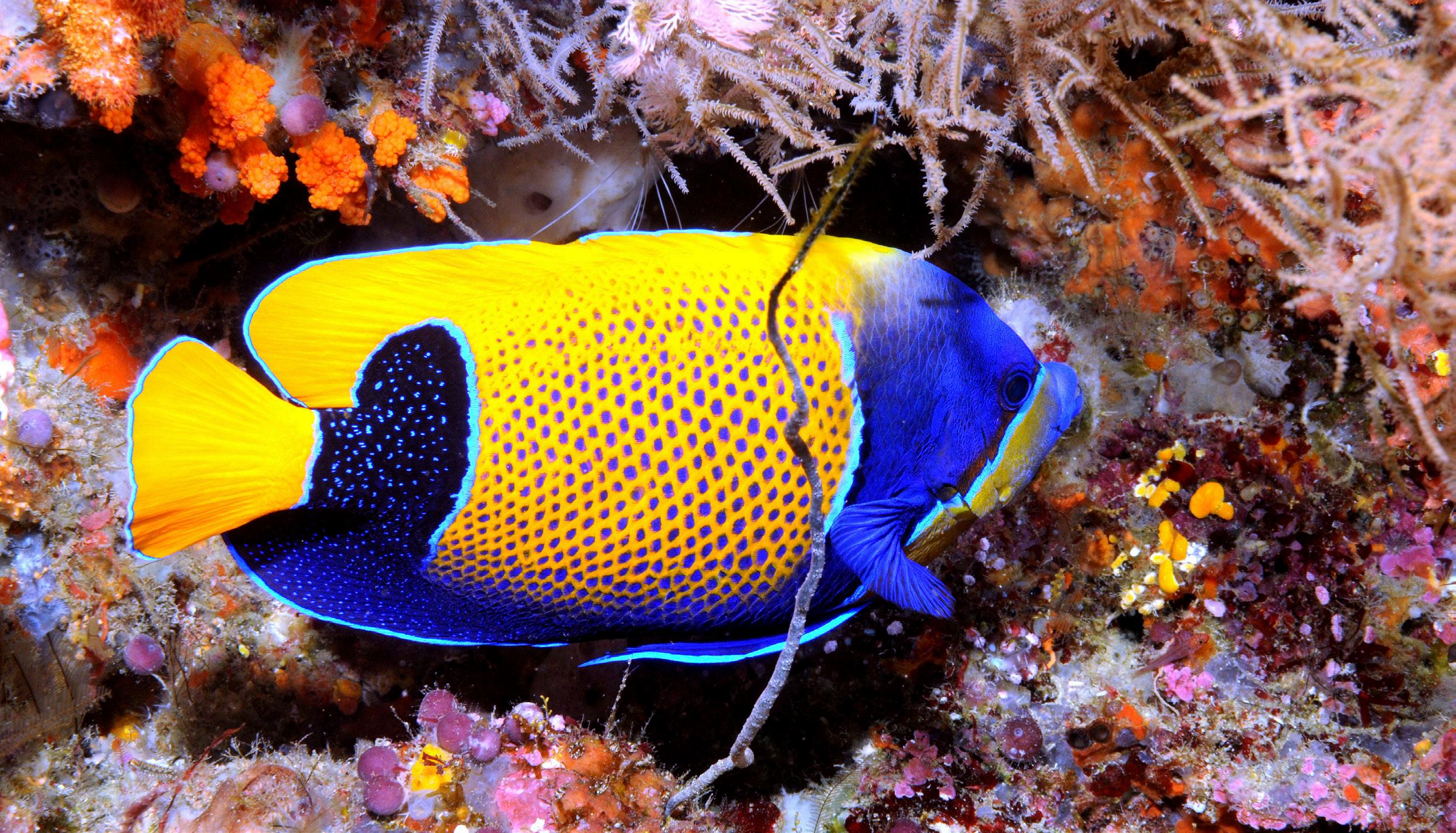

of the most beautiful dive destinations for all divers.The simple answer is that it is true.Water temperatures are always around 28-29ºC, and the underwater visibility is always 15 metres or more. As a seasoned diver, I have been to many tropical dive destinations, but never have I encountered anything like Raja Ampat’s 24 dives, where we have rated them all 5 out of 5 (scale is based on abundance, variety, and healthy reefs).There was always a certain wow factor in each dive. We experienced a few first moments for our group as well. Another first, I saw many Indonesian Wobbegong sharks throughout all the dive sites in Raja Ampat. We had our first encounter with the bashful Barramundi cod. This goofy fish is also referred to as a humpback or panther grouper, and has a very distinct dorsal concaved head and

black spots. The juveniles can also mimic an oversized flatworm with its unusual flapping movements using its oversized fins. We saw our first all-black mantas. Other cool macro critters include the Denise pygmy seahorse on a sea fan, and the Bargibanti pygmy seahorse that live on Gorgonian sea fans. These very tiny sea critters are the size of the tip of your pinky fingernail. For the die-hard fan of pygmy seahorses, Raja Ampat boasts a treasure trove of these wonders. Another amazing encounter is the abundance of many soft corals, and huge giant clams growing over 1.5 metres in length found at a dive site called Airborek Jetty in central Raja Ampat.
Some other famous dive sites in Raja Ampat are Cape Kri, Manta Sandy, My Reef, and
Melissa’s Garden. Cape Kri holds the Guinness Book of World Records for the most fish species counted on a single dive – a whopping 374 species. We had seen a plethora of large shoals of a variety of fish and manta rays, camouflaged wobbegong sharks, blue spotted stingrays, sea turtles, giant clams, and the variety of macro critter delights such as the pygmy seahorses. To be honest most of the dive sites we dived could easily have continued on the world record of most biodiverse sites, both in species richness and abundance.
Another incredible dive site is Manta Sandy, known for its cleaning stations where large black reef manta rays glide gracefully through the water with their wide wing span. These mantas are black in colour, which is caused by an
97 JUNE 2024 | DIVERS FOR THE ENVIRONMENT DIVING DESTINATIONS
ABOVE: Blue-girdled angelfish. BOTTOM ROW: Orangutan crab, and a coral grouper with a cleaner shrimp. All photos by Peter Mainka.

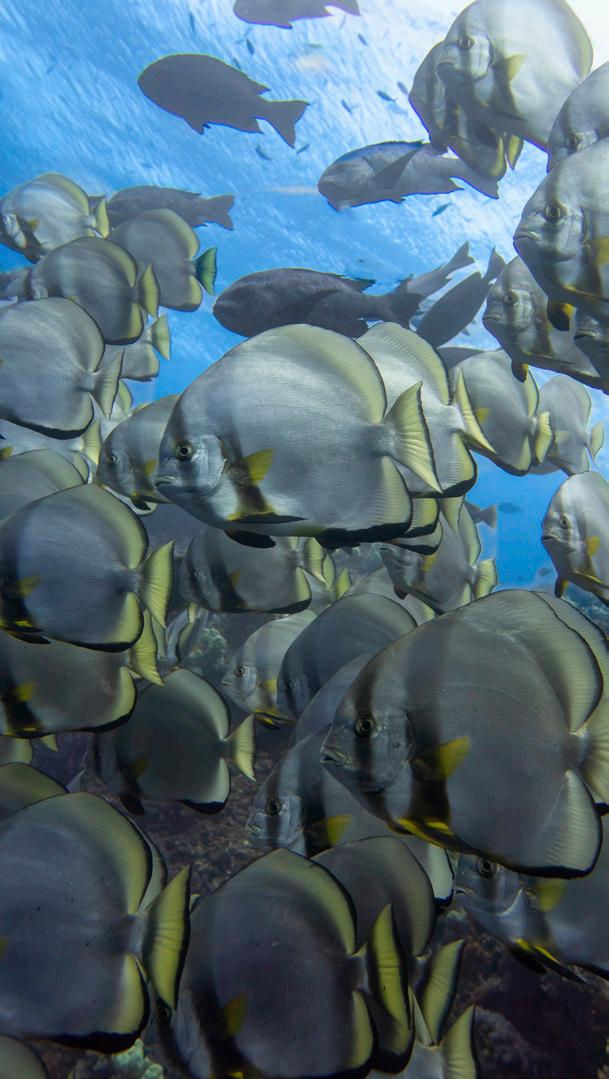

increase in darker pigment, known as melanism.
Our trip took us to the south of Raja Ampat, to the island of Misool. It is one of the four major islands in the Raja Ampat archipelago and truly is a diver’s paradise. World-renowned for its incredible coral reef, unlimited visibility, and abundant marine life, Misool again showcases the plethora of marine life of this region. The island is home to the Misool Marine Reserve, a no-take zone that covers approximately
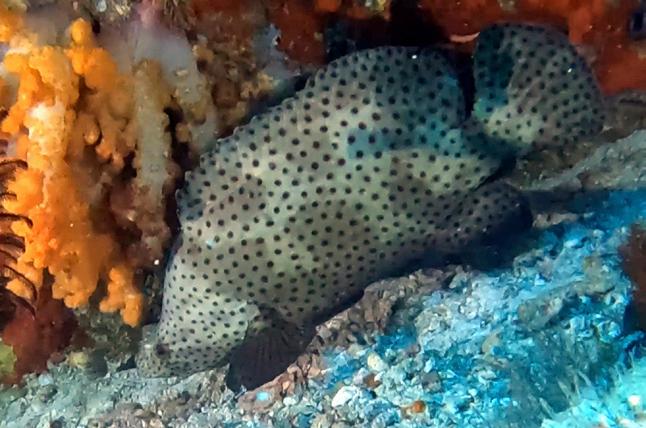


300,000 acres and allows the protection of its rich marine biodiversity.
All incredible dive destinations are also vulnerable to anthropogenic problems that threaten the biodiversity of this area. Island nations and coastal regions continue to face threats from overfishing, climate change, and unsustainable tourism practices. But more and more eco-friendly and sustainable businesses have started up. Local
and
park
authorities have recently been established to help protect this regional treasure. Local communities and various organisations work together to establish marine protected areas (MPAs) and implement sustainable fishing and eco-friendly tourism best practices. The Raja Ampat Research and Conservation Centre (RARCC) plays an important role in conducting research, engaging and educating locals, and promoting conservation with a focus on minimising the impact on the marine
98 DIVERS FOR THE ENVIRONMENT | JUNE 2024
DIVING DESTINATIONS
NGO
marine
ABOVE: Black manta by Peter Mainka. BOTTOM ROW LEFT: Circular batfish and manta ray by Xander Russell; RIGHT: Barramundi cod, leaf scorpionfish, and Bargibant’s seahorse by Peter Mainka.
environment, while providing economic opportunities to the local communities.
For scuba divers seeking an extraordinary adventure in an ecologically significant region, all of Raja Ampat stands out as a top destination, in the natural world.
BEING AN ECO WARRIOR DIVER
As visitors to this important ecosystem, we as divers, freedivers and snorkellers, have a responsibility to ensure our activities do not impact and harm the environment. There are many sustainable practise guidelines to follow for ocean lovers, underwater photographers from PADI AWARE, and NGO Green Fins. Adhering to sustainable diving practices is essential in preserving not only Raja Ampat's biodiversity but all marine ecosystems in general. I encourage everyone to follow established diving techniques, like maintaining excellent buoyancy control and trim to avoid damaging corals and clams, not touching marine life, and ensure all scuba gear is properly secured to avoid all accidental damage to the marine environment. Also, all divers should bring a mesh bag and collect any marine debris found underwater. They are small actions, but if everyone contributes, then they become huge positive impacts. Another action is to participate or organise a local beach clean-up with the community to make a positive impact. These underwater clean-ups should be recorded and reported to Dive Against Debris from Project AWARE and Clean Swells (app) at the Ocean Conservancy. We should all do our part and give back to our one ocean, one dive at a time.
Raja Ampat is more than just a diving destination, it is a testament to the remarkable marine biodiversity and the importance of conservation. For divers and nature lovers alike, Raja Ampat offers a truly memorable experience to an underwater world that remains largely untouched by time, a beautiful haven for those seeking to connect with nature in its most pristine form.
HOW TO GET THERE FROM THE UAE
Take a flight from the UAE to Jakarta, and then a domestic flight to Sorong in West Papua. From Sorong, boats will take you to the north, central or south islands of Raja Ampat. I suggest staying overnight in Jakarta to avoid missing any domestic flight connections.
WHERE TO STAY
There are plenty of 3-5 star hotels in Raja Ampat and award-winning eco lodges to stay at. For divers and snorkellers, there are plenty of seasonal liveaboards to stay on. For your comfort and safety, ensure you review all the safety guidelines of those liveaboards. I went with a medium-budgeted liveaboard called Raja Laut, operated by Emperor Divers for their safety, priority on sustainability, and comfort. But there are plenty of awardwinning liveaboards that operate in this region.
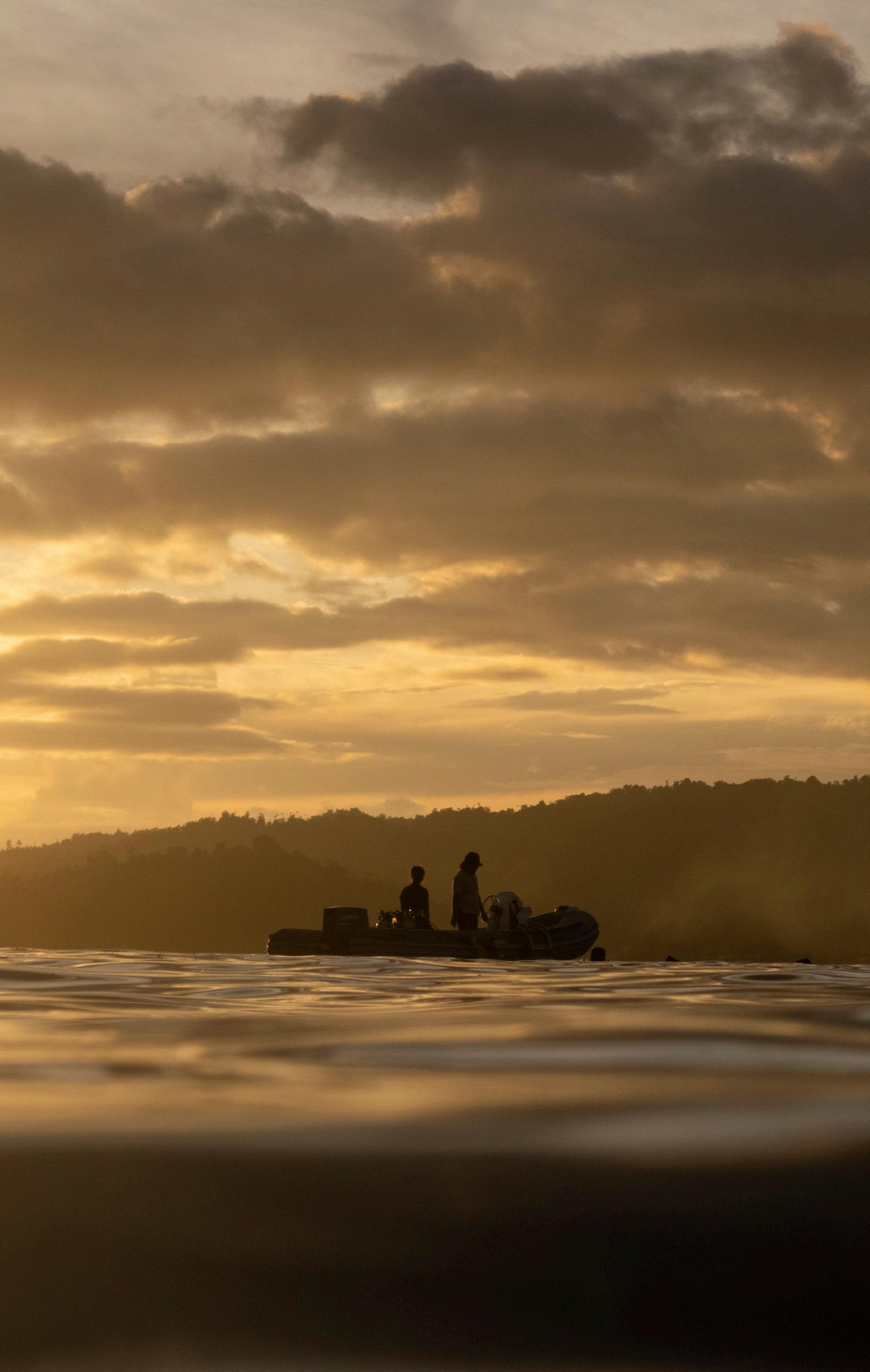

DIVING DESTINATIONS
Photos by Xander Russell. BELOW: Reticulate boxfish (Ostracion solorensis).


EXPLORING THE UNTOUCHED DEPTHS:
DIVING IN THE RED SEA ON THE SAUDI COASTLINE
FEATURE AND PHOTOGRAPHY ALA ALSHARIF
While the diving hotspots of Egypt, Jordan, and Sudan are well-documented, Saudi Arabia, with its extensive 2,000km coastline along the Red Sea, is emerging as a new frontier for underwater explorers.
DIVING DESTINATIONS




The Red Sea is globally celebrated as a premier diving destination, renowned for its vibrant coral reefs and abundant marine life. While the diving hotspots of Egypt, Jordan, and Sudan are well-documented, Saudi Arabia, with its extensive 2,000km coastline along the Red Sea, is emerging as a new frontier for underwater explorers. My personal diving journey commenced in the coastal city of Al Lith, part of the Makkah district, stretching south to the enigmatic Farasan Banks. Along this route, I encountered numerous dive sites, each offering a unique underwater spectacle.
AL LITH:
A DIVE INTO BIODIVERSITY
My adventure began in Al Lith, a city that provides an ideal gateway to the pristine marine environments of Saudi Arabia's Red Sea. Al Lith is renowned for its immaculate conditions and incredible biodiversity, offering divers the chance to immerse themselves in thriving coral gardens teeming with a rich
variety of marine species. The waters around Al Lith are a haven for dolphins and sharks, drawn by the abundance of marine nutrients that sustain life in this underwater paradise.
VENTURING SOUTH:
A JOURNEY OF DISCOVERY
The journey south from Al Lith unveils a series of dive sites, each with its own unique charm and marine population. The subtle variations in water temperature influence the coral and marine life that can be observed at each site. This part of the Red Sea is less explored, offering divers a secluded and deeply personal diving experience. With visibility often exceeding 20 metres, these waters are a haven for underwater photographers, providing a perfect canvas to capture the beauty of the underwater world.
FARASAN BANKS: AN UNDERWATER WONDERLAND
The pinnacle of my diving expedition was reaching the Farasan Banks. These submerged
reefs are renowned among diving enthusiasts for their exceptional ecological diversity and crystal-clear waters. The Banks are home to a staggering array of marine life, including manta rays, barracudas, and the elusive hammerhead sharks. The coral formations here are truly spectacular, with towering pinnacles and steep drop-offs that provide a stunning backdrop for underwater exploration.
CONSERVATION AND RESPONSIBILITY
With the increasing popularity of diving in the Red Sea, particularly along the Saudi coastline, there is a growing need for conservation efforts to protect these precious environments. Saudi Arabia has stepped up its marine conservation efforts to safeguard these ecosystems as tourism and recreational activities continue to expand. It is crucial for divers to adopt sustainable practices, such as maintaining good buoyancy control to avoid harming the coral reefs, and respecting marine life by observing from a distance.
102 DIVERS FOR THE ENVIRONMENT | JUNE 2024


CULTURAL IMMERSION
Diving along the Saudi coast also offers a unique opportunity to immerse oneself in the local culture. The coastal communities of Saudi Arabia have a deep connection to the sea, with traditions and livelihoods that have revolved around these waters for generations. Interacting with local divers and communities provides a fascinating insight into the historical and cultural significance of the Red Sea, enriching the diving experience with stories and practices that have been passed down through the ages.
SHAAB AMMAR: A HIDDEN JEWEL
Among the myriad wonders along the Saudi coastline, Shaab Ammar stands out as a hidden gem. Situated off the coast of Jizan, Shaab Ammar is a captivating dive site known for its stunning coral formations and diverse marine life. The site's crystal-clear waters and vibrant underwater landscapes make it


a favourite among photographers and nature enthusiasts alike.
THE UNDERWATER MARVELS OF SHAAB AMMAR
Diving at Shaab Ammar offers a glimpse into an underwater paradise. The site is home to a plethora of marine species, including colourful reef fish, rays, and even the occasional whale shark. The coral formations at Shaab Ammar are breathtaking, with intricate structures providing shelter and sustenance for a wide variety of marine life. Divers can explore the reef's crevices and caves, each offering a new discovery and a sense of awe at the beauty of the underwater world.
THE CONSERVATION EFFORTS AT SHAAB AMMAR
Despite its remote location, Shaab Ammar is not immune to the impacts of human activity and climate change. Efforts are underway to protect and preserve this pristine dive site, including the
establishment of marine protected areas and the promotion of sustainable diving practices. Divers visiting Shaab Ammar are encouraged to respect the environment and marine life, ensuring that this underwater paradise remains intact for future generations to enjoy.
DIVING INTO THE FUTURE
As Saudi Arabia continues to develop its tourism industry and promote its Red Sea coastline as a premier diving destination, sites such as Shaab Ammar are poised to become key attractions. Divers looking for a truly unforgettable experience will find Shaab Ammar to be a must-visit destination, offering a unique blend of natural beauty, biodiversity, and cultural richness that is unparalleled in the diving world.
https://bit.ly/4bvBYpm
103 JUNE 2024 | DIVERS FOR THE ENVIRONMENT
DIVING DESTINATIONS
ALMONDA LIVEABOARD
A FIRST-AID KIT FIT FOR DIVING
FEATURE TIM BLÖMEKE

Be it a jellyfish sting or a dropped tank, any injury in or on the water can be dangerous or even life-threatening without a first-aid kit. You should have one within easy reach every time you dive. And just like your dive gear, your firstaid kit needs care and maintenance to remain useful and up to date. When complete and stocked with the right components for divingspecific situations, a first-aid kit can help make annoyances vanish and incidents manageable.
A basic first-aid kit for diving is comparable to a standard one you can pick up at your local pharmacy, which should contain most of the items in the checklist in the sidebar. This list is a great start. For diving however, adding a few specific things can be very helpful.
While trying to stick an adhesive bandage can be entertaining, there are easier ways to cover a cut, scratch or blister. Liquid or waterproof bandages are a good addition to divers’ firstaid kits. DAN also recommends tincture of benzoin, which helps bandages stick firmly to the skin, especially in a damp environment.
Other additions can be useful, depending on the details of your dive. Insect repellent would be one – prevention is always better than treatment. Sun protection is another, so
pack some extra reef-safe sunscreen to avoid a painful burn. A flashlight is useful in dim conditions or when examining small wounds such as those caused by splinters, tiny spines or remnants of jellyfish tentacles. Also consider if you will need to bring oxygen to ensure some is available.
Nonlatex gloves are prone to tearing, so having a few spare pairs on hand is always a good idea.
While vinegar (or acetic acid at 4-6%, like the vinegar used in cooking) is a very useful remedy for contact lesions with tropical jellyfish (e.g. Australian cubomedusae), for some species in the Mediterranean it can sometimes even be harmful (e.g. very contraindicated for Pelagia noctiluca, one of the most frequent jellyfish in the Mediterranean), as it may trigger the rupture of the stinging cysts (containing venom) left on the skin by the animal. The main remedy which should always be applied is the mechanical removal of tentacle residues, strictly avoiding rubbing and scratching, combined with immersion of the injured part in very hot seawater (not freshwater!) for 20 to 30 minutes to reduce both pain and the local inflammatory reaction. The water should be as hot as can be tolerated (42-45°C for
most people).
One of the most indispensable tools is not inherently medical at all: a writing implement. When dealing with a situation that will involve treatment beyond first aid, any notes you can provide about the care you have already administered will always be beneficial to medical personnel.
Standard wound dressings are useful even when you aren’t diving, as cuts, scrapes, bruises, sprains and strains are among the most common boating injuries. The ability to quickly and effectively bandage a wound can minimise the risk of infection, and having the right medication or a cold pack available to deal with other minor illnesses or injuries on board might save your dive.
However, although you may try to expand your kit to cover every contingency, this isn’t possible in practice. Flexible thinking – combined with the kind knowledge and training provided in DAN courses – can help you improvise using the materials at hand when a specific remedy isn’t included in the kit.
For most DAN staff, diving is not just a job, it’s a passion. A few colleagues shared their
104 DIVERS FOR THE ENVIRONMENT | JUNE 2024
HEALTH & SAFETY
recommendations about divers’ first-aid needs from their personal experiences.
TIPS FROM DAN STAFF
“Make sure you replenish your kit after each use – it doesn’t take long for your supplies to dwindle.”
“Always have some tongue depressors. They can be used as finger splints, cream applicators and more; the only limit is your imagination.”
“Having the right equipment instills confidence to provide good care.”
And finally, it’s hard to say it any better than this: “Always, always, always carry a first-aid kit. List it on your scuba gear packing checklist; it’s just a matter of time before you need it.”
RECOMMENDED CONTENTS FOR FIRST-AID KITS
BASIC NEEDS
• Nitrile (hypoallergenic) gloves
• CPR barrier device (oronasal mask or shield)
• Tweezers
• Safety pins
• Scissors
• Antiseptic solution (isopropyl alcohol) or wipes
• First-aid guide
DRESSINGS AND BANDAGES
• Adhesive bandages
• Gauze pads and rolls
• Triangular bandages
• Elastic bandages
• Medical tape
ACCESSORY ITEMS
• Vinegar
• Sterile saline solution
• Irrigation syringe
• Hot and cold packs
MEDICATIONS
• Aspirin
• Paracetamol (acetaminophen)
• Ibuprofen (eg, Advil®, Dolormin®, Nurofen®)
• Diphenhydramine (antihistamin)
• Hydrocortisone cream
• Antibiotic ointment
• Dimenhydrinate (sea sickness pills)
• Loperamide (Imodium®)
• Antacid (e.g., Tums®)
ABOUT THE AUTHOR
Tim Blömeke teaches technical and recreational diving in Taiwan and the Philippines. He is also a freelance writer and translator, as well as a member of the editorial team of Alert Diver.You can contact him for questions, comments, and inquiries: www.instagram.com/timblmk https://timblmk.com
EQUALEASY NEOPRENE HOODS & EQUALISATION
BY CLAUDIO DI MANAO

We lose heat mainly from our head.This applies to all of us, including those who don’t seem to use their heads much. Energy doesn’t dissipate as a result of brain activity, but because of blood circulation. To reduce this heat loss from the head, we often wear a hood when diving. Besides its intended purpose however, a hood also has the unfortunate distinction of being the only piece of diving equipment that can interfere directly with equalisation.
Hoods are not particularly loved by divers, as is amply evidenced by the abuse we inflict on them. We perforate them with holes and ‘decorate’ them with accoutrements of questionable taste, such as ears (Mickey Mouse, cat, bunny) or horns (devil, Viking). I freely admit having taken a perverse delight in
perforating the integrated hood of my semidry with a power drill. We would never do this to a BCD!
Our dislike for diving hoods may be the product of strange behaviours – the hood’s, not ours. All diving hoods made on earth seek to trap air and sneak underneath mask skirts. Wearing gloves (which often go together with a hood) makes it hard to prevent random migration of the mask strap over the hood’s outer surface, and harder still to remove that damnable little bit of neoprene that has crept under the mask skirt and is causing a leak.
While we are acutely aware of these annoyances (we don’t want to look like Marge Simpson, and we don’t want to readjust our
105 JUNE 2024 | DIVERS FOR THE ENVIRONMENT HEALTH & SAFETY

mask strap every five minutes), the most worrying characteristic of hoods is often ignored by divers: their tendency to mess with our ears.
KNOW YOUR “FRENEMY”.
Hoods can be one of the most insidious causes of barotrauma. When we dive, our ear canal is flooded by water, which exerts direct pressure on the outer ear. When a hood is too tight, it can block off or significantly reduce the flow of water into the ear canal. In the worst case, the hood fits itself perfectly to the auricle and behaves like a suction cup during descent. At the beginning of the descent, the diver may not notice the incoming problem. Both ears seem to equalise just fine. However, there is a vacuum forming in one ear canal, which causes the eardrum to stretch outward. This event (very similar to a mask squeeze) if not promptly detected, could damage the tissues of the ear canal and the eardrum.
COUNTERMEASURES.
A diving hood must fit smoothly, like a glove. Water must reach the ear canal, air must escape. A tried and trusted trick is to insert a finger in the hood, pointing at the ear. This will help the air to escape and allow water in. Another trick: If you are one of those people who love to brutalise diving hoods, you can punch a few holes in the hood where it
meets the ears, then cover the area with a layer of permeable fabric. This will help water circulation into the ear canal, while preventing it from sloshing around and making your entire head feel cold. Strange enough, most divers pierce only the top of the hood – the least strategic area. Of course, there are much worse mistakes you could make. On a forum, I once read a question by a diver asking if his ‘usual’ equalisation problems when diving with a hood could be prevented by using earplugs. I felt shivers running up and down my spine.The replies reflected the same horror and alarm that I felt and came in all capital letters: Ear plugs, at depth, turn into bullets aimed straight at the eardrums. Yes, I know, you know that. I’ll say it anyway, just in case. Someone else might need the reminder.
Sadly for cold-water divers, dry hoods with a valve and low-pressure inflator are unlikely to ever become reality. Nor will full-face masks solve our problem. Let us accept the fact that for the foreseeable future, cold water will be entering our hood. It has to. The good news? Electrically heated hoods are already on the market.
LEARN MORE:
• Ear Barotrauma Following A Local Lake Dive https://bit.ly/3V7vPJZ
• Diary on a Case of Inner Ear Barotrauma
https://bit.ly/3WNuv0g
• Ears and Diving: https://bit.ly/3WV990K
ADDITIONAL RESOURCES:
Are you looking to increase your awareness and skill level in equalisation? DAN Europe has got your back. Italian “No Limits” freediving champion Andrea Zuccari, has teamed up with DAN Europe, to create the EqualeasyEqualisation Awareness Course designed to put you in control of your equalisation and provides three levels of certification depending on your interest and qualifications; Equaleasy student, Instructor or Instructor Trainer.
Learn more about the course here: https://bit.ly/4aocKYl
ABOUT THE AUTHOR
DAN Member since 1997, Claudio Di Manao is a PADI and IANTD diving instructor. He’s the author of a series of books and novels about diving, including Shamandura Generation, an exhilarating portrait of Sharm el Sheikh’s diving community. He collaborates with magazines, radio and newspapers, talking and writing about diving safety, marine life and travels.
106 DIVERS FOR THE ENVIRONMENT | JUNE 2024
HEALTH & SAFETY
UPCOMING EVENTS
BLUE ECONOMY | BLUE GOVERNANCE | BLUE SCIENCE | BLUE COLLECTIVE 10 June 2024 | Westin Dubai Mina Seyahi

The MENA Oceans Summit is the flagship convening under the MENA Oceans Initiative by Goumbook, dedicated to accelerating the pace of comprehensive ocean action to restore ocean ecosystems, tackle climate change and ensure sustainable development of blue economies through a collaborative, cross-sectoral framework.
Culminating World Environment Day and World Oceans Week celebrations throughout the region, and important global events – the Summit engages under four key streams – Blue Economy, Blue Governance, Blue Science and Blue Collective.
The 2nd annual MENA Oceans Summit 2024 brings together a diverse range of stakeholders to address ocean health and is a key milestone event in the lead up to the UN Oceans Conference 2025 in Nice, France. Global leaders, policy makers, researchers and the private sector who work at the forefront of ocean action will engage the audience through panel discussions and intense fireside chats on challenges, developments, and opportunities.
FIND MORE INFORMATION HERE: https://goumbook.com/mena-oceans-summit-2024
AN EDA ACTIVITY FOR THE LADIES
PADI WOMEN’S DIVE DAY
Saturday 20th July 2024 | 8am Start with Barracuda Diving Centre (BDC), Fujairah PADI is about to celebrate it’s 10th Women’s Dive Day so we’re rounding up our EDA ladies for a day out underwater to celebrate it together! BDC have very kindly given us discounts for EDA members for this special occasion.


DIVER RATES FOR EDA MEMBERS: Includes 2 dives – cash only
* Khorfakkan = AED200 or Fujairah = AED175 (we will confirm closer to the date where we will dive – subject to conditions)
* Gear Rental = AED50
We will book a table at The Sailors Restaurant and Cafe for lunch, so let us know if you would like to join. Divers will receive a discount on their food bill. Book your places with Layla by email at projects@emiratesdiving.com. Spaces are limited, so make sure to book ahead.
DO YOU KNOW?

Why Bull Kelp?
Bull kelp, or Nereocystis luetkeana, grows in the ocean waters just off the coast of the North American continent from Central California to the Aleutian Islands of Alaska. These waters are cold and inhospitable to even the most adventurous and trained divers, so the bull kelp story has remained hidden beneath the ocean surface, its world and its secrets kept by the lid of the tide and the rough waters of the Pacific Ocean. Despite growing research and interest, much about this species and the dynamics of the bull kelp forest ecosystems remain a mystery.
This is why bull kelp is worthy of our regard and our attention. It is worth knowing and learning about so that we might learn from it to better serve the oceans in their ability to create the biodiversity that makes our planet unique and makes our life as humans possible.
Check out this webstory by Above/Below celebrating the power of art and science to tell the bull kelp story: https://bullkelp.info
BOARD OF DIRECTORS
Chairman | Juma Khalifa Bin Thalith
Financial Director | HE Major General Khalfan Khalfan Quraiban Al Mheiri
Secretary General | Jamal Abdulla Buhannad
Head of Technical Committee | Dr Juma Khalifa Alrahoomi
Head of the Women’s Committee | Maitha Al Qader
Board Member | HE Talib Ali Aldhuhoori
Board Member | Abdulla Salem Alruwaihy
Board Member | Ahmed Sultan Al Hasawi Al Tamimi
EXECUTIVE TEAM
Co-Founder | Ibrahim Al Zu’bi Email: projects@emiratesdiving.com
Project Director | Ally Landes Email: magazine@emiratesdiving.com, photo@emiratesdiving.com
Project Coordinator | Layla Nouilati Email: projects@emiratesdiving.com
Reef Check Trainer | Rania Shawki Mostafa Email: reefcheck@emiratesdiving.com
Health, Safety & Technical Chief Inspector | Mohamed Faraj Abdulla Jaber Email: inspection@emiratesdiving.com
MISSION STATEMENT
Our mission is to conserve, protect and restore the UAE’s marine resources by emphasising and promoting the underwater environment and environmental diving.
LEGISLATION
EDA is a non-profit NGO registered with the Ministry of Community Development as per the Ministerial Decree No. 149.
The Decree stipulates the following responsibilities for EDA:
• Ensure environmentally respectful diving practices in all EDA members.
• Support the diving industry within the UAE by coordinating the efforts of the diving community.
Promote safety in the commercial and recreational diving fields through standardisation of practices.
Preserve historical aspects of diving within the gulf region and enhance environmental education to diving and non-diving communities through EDA projects and events.
PUBLISHED BY
Emirates Diving Association P.O. Box 33220, Dubai, UAE
Office Location: Jumeirah 1, Al Hudaiba Awards Buildings, Block B, 2nd Floor, Office #214
Tel: +971 4 393 9390
Email: projects@emiratesdiving.com Website: www.emiratesdiving.com
While every effort and care has been made to ensure the accuracy of the information contained in this publication, the publisher cannot accept any responsibility for errors or omissions it may contain.
No part of this publication may be reproduced in a ny form or by any means without the prior written consent of the publisher.
Copyright © Emirates Diving Association 2024
SOCIAL MEDIA CHANNELS
www.Facebook.com/emiratesdivingassociation www.Instagram.com/emiratesdivingassociation (EDA News) www.Instagram.com/eda_uae (Digital Online Gallery) www.twitter.com/EDA_UAE www.YouTube.com/@emiratesdivingassociation www.Issuu.com/allylandes
107 JUNE 2024 | DIVERS FOR THE ENVIRONMENT
ROUND-UP
PRINTED BY Al Ghurair Printing & Publishing LLC
THE MYSTERIOUS WORLD OF BULL KELP
MENA OCEANS SUMMIT














































 IBRAHIM AL-ZU’BI Co-Founder
IBRAHIM AL-ZU’BI Co-Founder
 Ibrahim Al-Zu’bi
Ibrahim Al-Zu’bi
































































































































































































































 1st PLACE: Philippe Lecomte | Best of the UAE – 488 pts
1st PLACE: Philippe Lecomte | Best of the UAE – 488 pts
 1st PLACE: Mishaal Ashok | Black & White – 475 pts
1st PLACE: Mishaal Ashok | Black & White – 475 pts











































 Philippe Lecomte 1st Place Best of the UAE – 488 pts Prize Sponsor: Divers Down
Khalid Alrazooqi 1st Place Behaviour – 521 pts Prize Sponsor: Monster Middle East and GoPro
Yevheniia Rehush 1st Place Place Video Coexistence – 405 pts Prize Sponsor: Monster Middle East and GoPro
Ahmed Al-Ali Overall Digital Online Winning Photographer 2024 – 2,528 pts
Philippe Lecomte 1st Place Best of the UAE – 488 pts Prize Sponsor: Divers Down
Khalid Alrazooqi 1st Place Behaviour – 521 pts Prize Sponsor: Monster Middle East and GoPro
Yevheniia Rehush 1st Place Place Video Coexistence – 405 pts Prize Sponsor: Monster Middle East and GoPro
Ahmed Al-Ali Overall Digital Online Winning Photographer 2024 – 2,528 pts




























































































